Winter is here! Check out the winter wonderlands at these 5 amazing winter destinations in Montana
- Travel Destinations

10 MOST Breathtaking Austrian Alps You Won’t Regret Visiting
Published: September 14, 2020
Modified: December 27, 2023
by David Jefferson
- Plan Your Trip
- Travel Guide
- Travel Tips
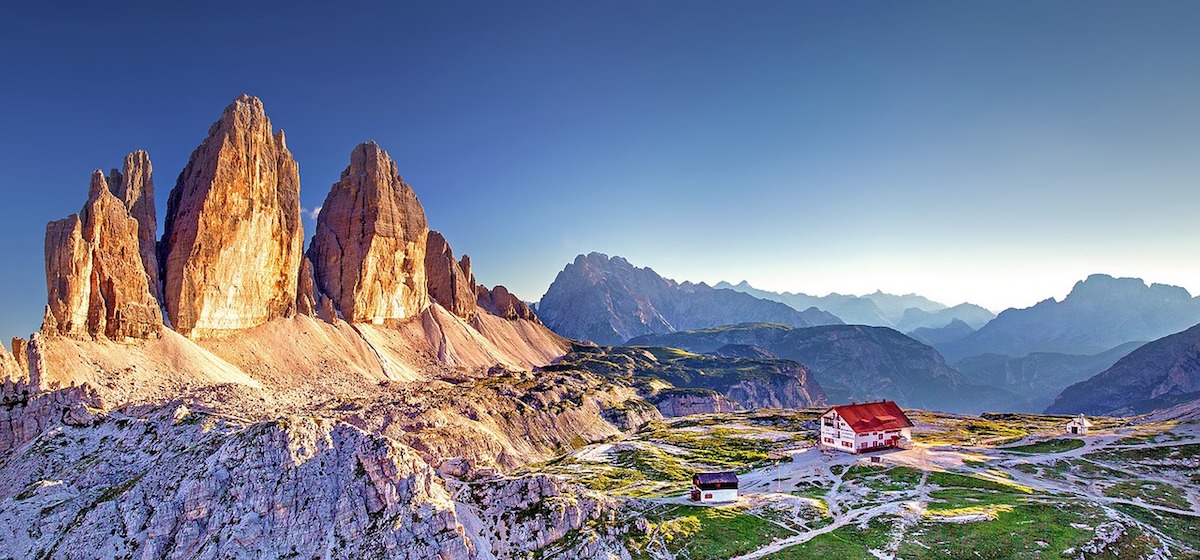
When you think of the Austrian Alps, you’ll most likely imagine Alpine mountains and sweeping landscapes. Aside from that, add to the picture its gorgeous cities, natural attractions, and fine Austrian cuisine.
If it’s your first time visiting the Austrian Alps, we rounded up the 10 best spots you shouldn’t miss! From towering mountains, fairytale-like towns in Austria to stunning architecture, a visit here is an experience of a lifetime.
Where Are These Austria Alps?
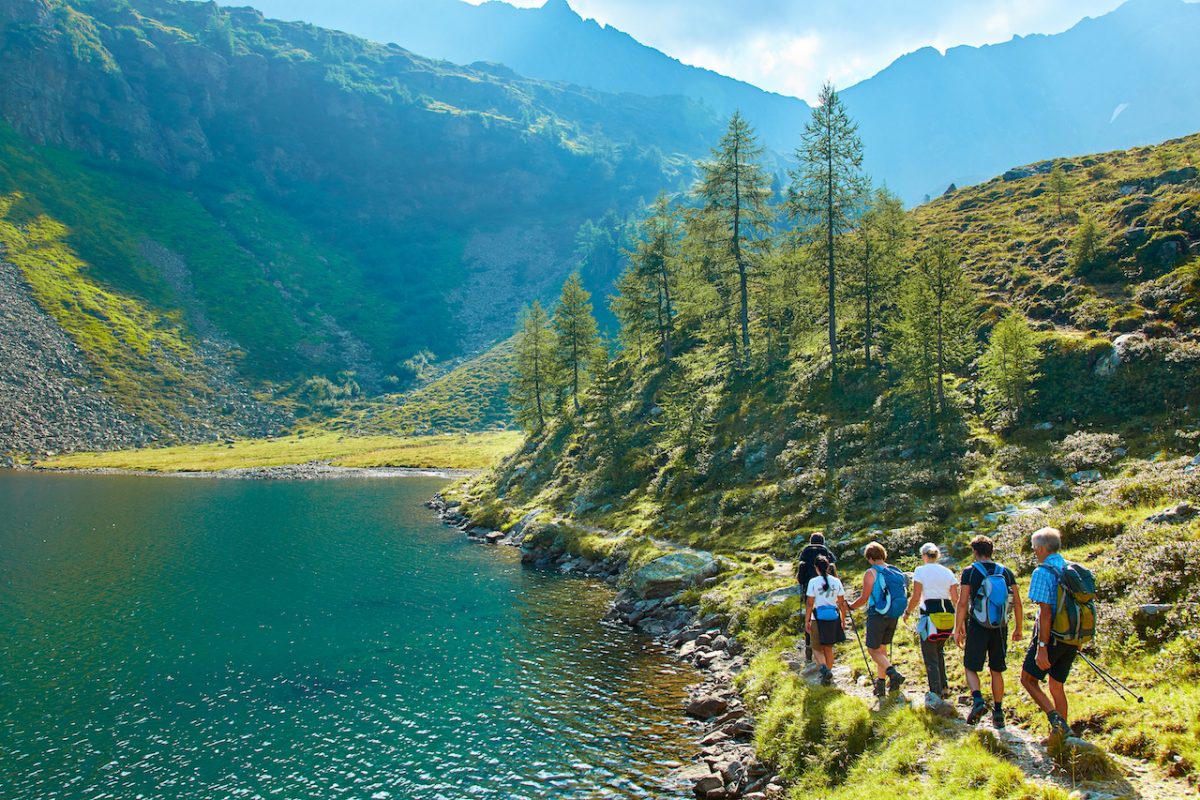
Photo by Adobe Stock
The Alps is a natural wonder that stretches roughly 700 miles across southern and central Europe. Beginning near Monaco, the Alps run across Switzerland, Italy, Germany, and Austria, among other countries in Europe. The stretch ends on the coastline of the Adriatic Sea in Albania. The eastern Alps cover most of Austria.
The Alps cover about 80,000 square miles and feed most of the major rivers in Europe. These snow-capped mountains can reach heights between 6,000-8,000 feet. The tallest alps include Grossglockner, Wildspitze, and Palla Bianca.
Swiss Alps vs. Austrian Alps
If you’re after the best alps mountains experience, you’ll be torn between the Swiss and the Austrian Alps. There’s always the intriguing question: Which is nicer, the Bavarian Alps or the Austrian Alps? You’ll be relieved to know that both destinations have amazing offers. It all depends on your preference.
For a true Alpine high, head to the Swiss Alps. Switzerland is home to some of the tallest mountains in the world. Matterhorn, for one, is one of the most famous peaks that professional mountaineers won’t skip.
Meanwhile, if you’re in for the scenery, the Austrian Alps are perfect for you. In fact, some of the iconic scenes in the movie “The Sound of Music” are filmed in Obersalzberg, on the Austrian border. Riding the cable car is one of the best ways to enjoy the stunning scenery.
How To Get Around Austria
Austria may be small, but it has six airports strategically located in the biggest cities and tourist regions. Utilizing a VPN for cheaper flights can help travelers find the best deals across the various airports in Austria, maximizing their options for convenient and budget-friendly travel.
Aside from taking the plane, you can visit Austria from nearby cities via trains and buses. With many convenient travel options, it’s easy to enjoy the best day trips from Vienna.
From Germany to Austria, you can either board the bus, train, or plane. Most travelers say train travel is the best as you get to zip around Austria and enjoy its scenic views.
Let’s jump to the 10 breathtaking Austrian Alps you shouldn’t miss!
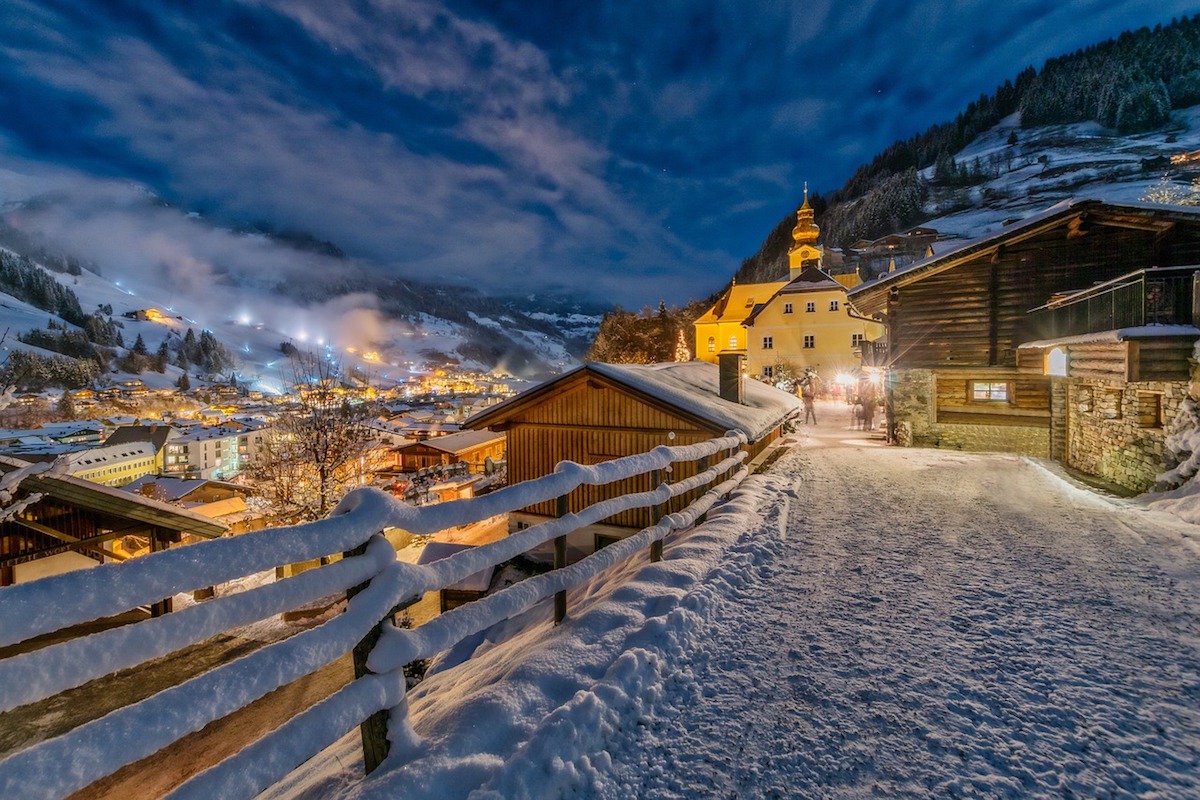
©Photo by josefgadermaier from Pixabay
Many agree that Salzburg is one of the most beautiful cities in central Europe — and for many reasons. Boasting 12 centuries of rich history, this old town is home to stunning views and Baroque architecture. Among the beautiful towns in Austria, Salzburg became popular when it provided the setting for “The Sound of Music” film. Aside from that, the gorgeous town in Eastern Alps made its way to the UNESCO World Heritage list. A day isn’t enough as there are plenty of amazing things to do in Salzburg .
Top Attractions In Salzburg
Fortress Hohensalzburg Castle: Visit this 11th-century castle and travel back in time. Sitting on top of a hill, Fortress Hohensalzburg offers breathtaking views of Salzburg. Today, the castle is among the favorite landmarks in Salzburg .
Salzburger Altstadt: Enjoy leisure walks on this Baroque Old Town’s cobbled squares and narrow lanes. Salzburger Altstadt is a perfect blend of classic architecture and modern shopping emporiums. Aside from that, it is home to Mozart’s birthplace, Dom Cathedral, Salzburg City Museum, and a number of churches. Don’t forget to put on sunblock and wear quality sunglasses while walking around.
The Original Sound of Music Tour: What’s a trip to Salzburg without visiting the spots where “The Sound of Music” was filmed. This tour not only shares the highlights of the film but also the architectural and historical landmarks in the city. There are English-speaking guides throughout the tour for your convenience.
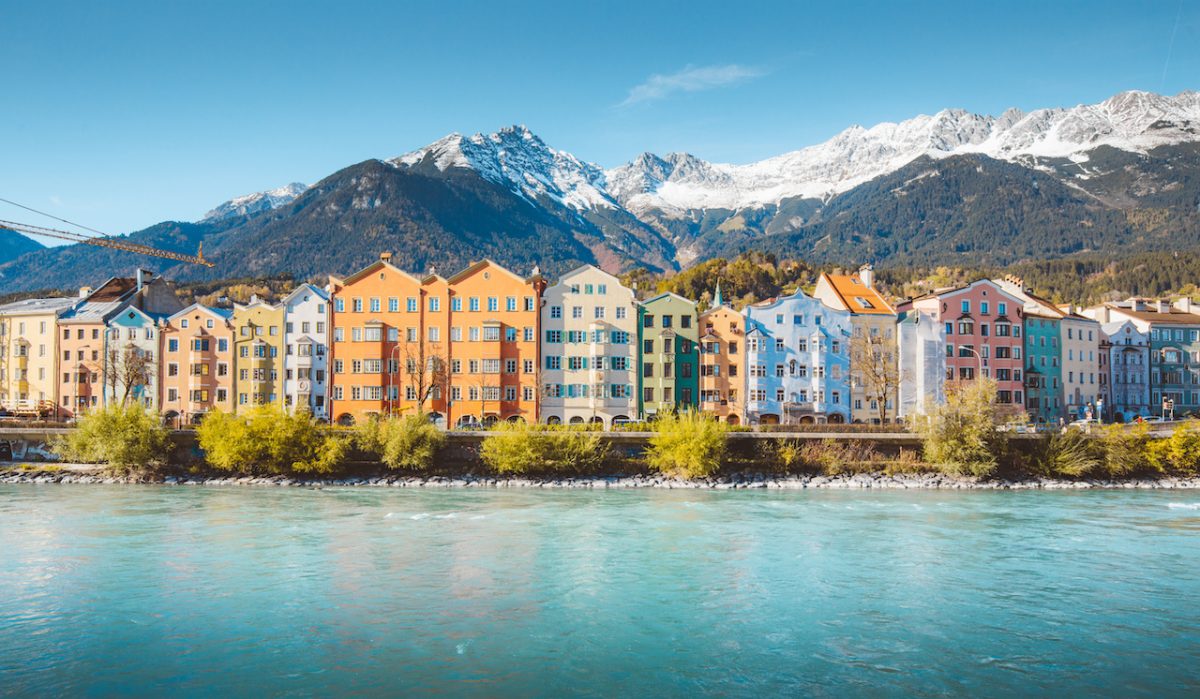
With its perfect position high in the Austrian Alps, Innsbruck has a lot to offer. From stunning views to winter sports, a visit here is worth anyone’s time. In fact, Innsbruck hosted the Winter Olympics in 1964 and 1976. Aside from that, the capital of Tyrol has majestic buildings worth marveling at.
Top Attractions In Innsbruck
Innsbrucker Nordkettenbahnen: Also called the North Chain or the Northern Range, the Nordkette is a mountain in the city. This range of mountains not only offers stunning landscapes but also a host of activities year-round. In the summer, this part of the Austrian Alps is a play area for active people. Meanwhile, it’s an excellent ski area during winter. Pack comfortable and sturdy snow boots to enjoy the experience.
Altstadt von Innsbruck: Altstadt (Old Town) is said to be the heart of Innsbruck. Touring around this town lets you enjoy medieval buildings, historic hotels, and modern restaurants and cafes. There are also interesting side alleys worth exploring. What tourists love about Altstadt is how it’s historical yet not intimidating and very safe. In winter, Christmas markets are alive and busy.
Hungerburg Funicular: Designed by star architect Zaha Hadid, the Hungerburg Funicular takes you from Innsbruck city center to the Hungerburg station. The hybrid funicular boasts state-of-the-art architecture that is loved by tourists of all ages.
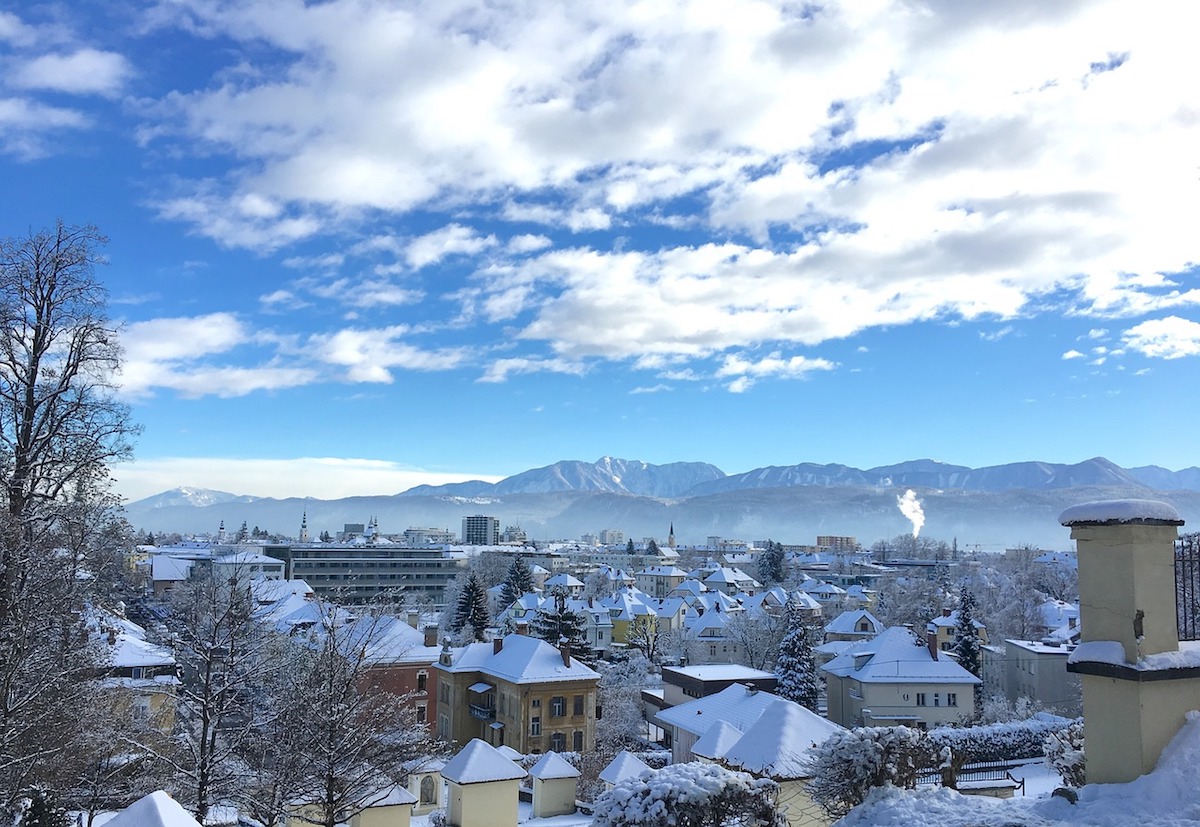
©Photo by saal from Pixabay
Among the Austrian Alps worth visiting is Klagenfurt. It’s ideally situated on the famous Lake Worthersee, one of the warmest and largest Alpine lakes in Europe. Due to its southerly location, Klagenfurt offers pleasant summer days and sunny winters.
There are plenty of exciting activities to enjoy in Klagenfurt. You just need to choose the best months to engage in your activities. Aside from that, it’s among the towns in Austria that have gorgeous mountain scenery.
Top Attractions In Klagenfurt
Lake Worthersee: This lake is a popular spot in Klagenfurt. Tourists flock here to take in the beauty of Lake Worthersee. If you’re visiting the Austrian Alps in winter, you can enjoy a host of winter sports on this lake. For a more relaxing option, fancy dinners by the lake are always a great idea.
Hochosterwitz Castle : Perched 600m above sea level, Hochosterwitz is a stunning piece of architecture. Aside from taking snaps, there’s a host of events you can take part in, including knight festivals, full moon walks, and others.
Rauschelesee: Klagenfurt is home to many beautiful lakes and Rauschelesee is one of them. It’s smaller than Lake Worthersee but offers amazing swimming and fishing opportunities. Only 15-20 minutes southwest of Klagenfurt, this lake lets you enjoy the scenic views and friendly walking paths.
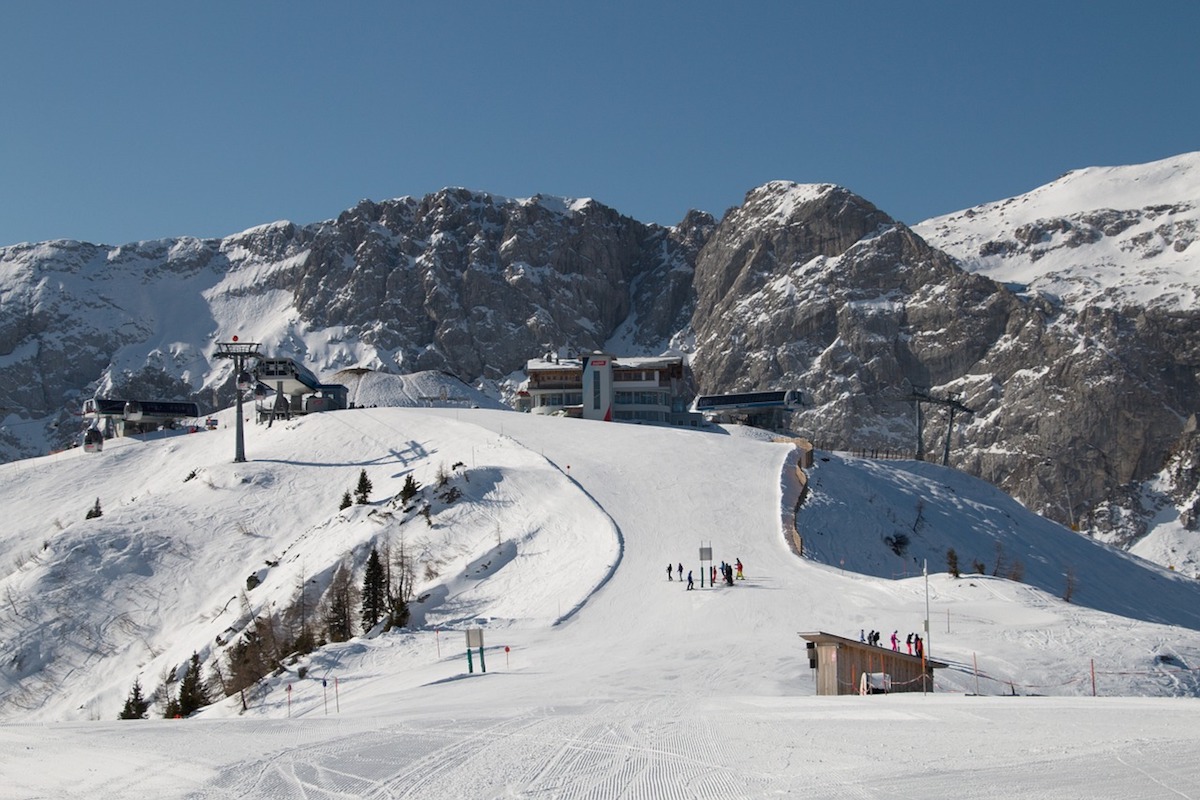
©Photo by Walkerssk from Pixabay
If you’re visiting the Austrian Alps to enjoy skiing, then you shouldn’t skip Nassfeld . Sitting near the Italian border, Nassfeld town is well-known as a ski resort. Boasting 110km of ski tracks, 1000km of hiking trails, and 950km of cycling trails, any adventurer is in for a treat when in this side of town.
Top Attractions In Nassfeld
Sommerrodelbahn: If you’re searching for an adrenaline high on the Austrian Alps, you need to try the Sommerrodelbahn. Famous among the adventurous souls, this 2-km mountain roller coaster is a fun way to view Nassfeld. It is perfectly safe and is loved even by kids. Enjoy the speed and stunning views, such as lakes, mountains, villages, and animals.
Garnitzenbach Stream: A trip to the Austrian Alps promises to take you closer to nature. When in Nassfeld, head on to Garnitzenbach Stream. Home to plenty of waterfalls and is very accessible via climbing facilities, this stream is an ideal family destination.
Aqua Trail: Another great family activity in this part of the Austrian Alps is the Aqua Trail. This 1.5km adventure walkway showcases visitors with different types of water in the mountains. There are helpful information boards to guide visitors along the way. The walkway is wide enough to accommodate strollers and wheelchairs. Aside from that, there are many rest areas and a big picnic area to relax and for children to play.
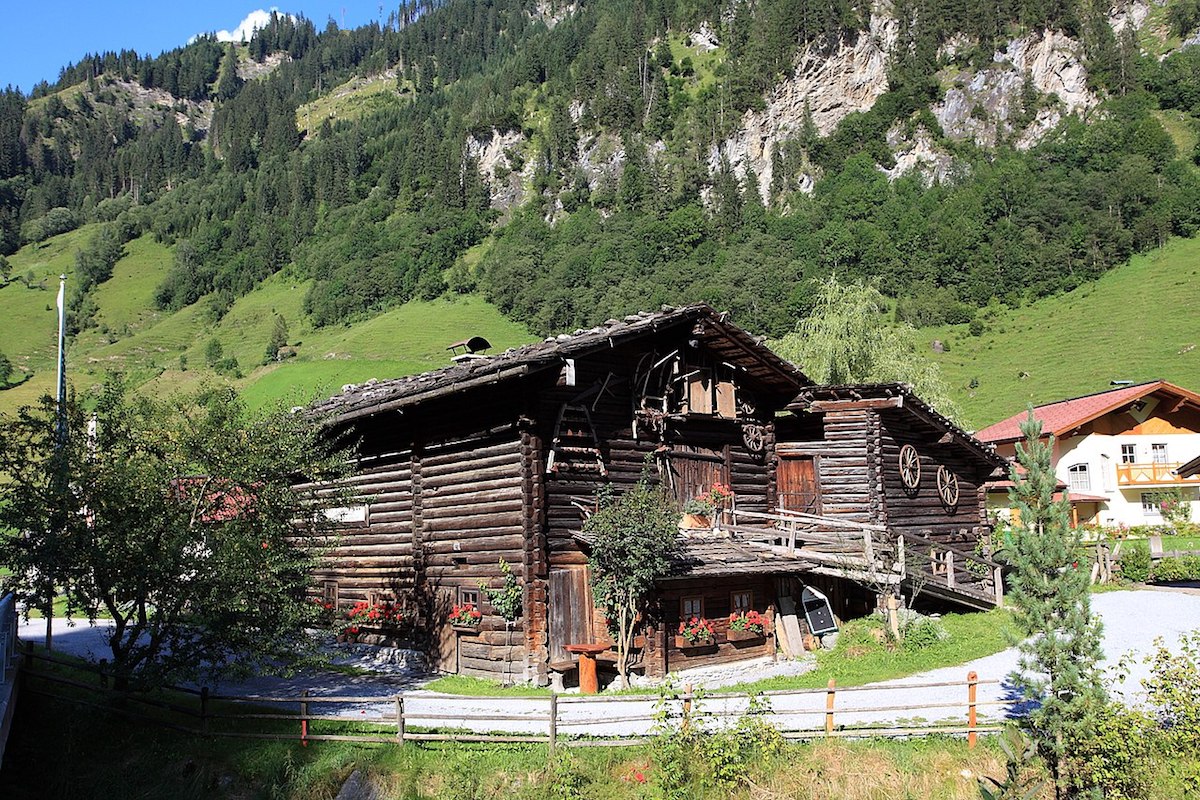
©Photo by Grossarltal from Wikimedia Commons
If you have hiking near Vienna in mind, Grossarl is a perfect getaway for hiking and other activities. Grossarl may not be as popular as other towns in Austria, but it has a host of exciting things to enjoy. From hiking, taking the beauty of the alps mountains to relaxing spas, this town won’t disappoint. For the ultimate hiking experience, pick comfortable hiking shoes and durable backpacks.
Top Attractions In Grossarl
Fulseck: For best hikes in Austria, Fulseck is an ideal mountain for travelers of all ages and skill levels. Fulseck has many themed walks and trails perfect for hiking and biking. To make transporting convenient, you can take advantage of the Fulseck Summit Lift. This lift easily brings you to your chosen destination on the mountain.
Skigebiet Grossarltal-Dorfgastein: This famous ski resort offers a range of great slopes for beginners and advanced skiers. Boasting plenty of space, Skigebiet Grossarltal-Dorfgastein is a paradise for winter activities. Just don your best winter boots and jacket, and you’re all set to enjoy this paradise. Take advantage of the pistes, modern lifts, and not to forget the stunning views.
Sk ischule Lackner : If you’re visiting the Austrian Alps to learn a thing or two about skiing, head on to Skischule Lackner. This popular ski school offers various ski courses, services, and winter sports and products.
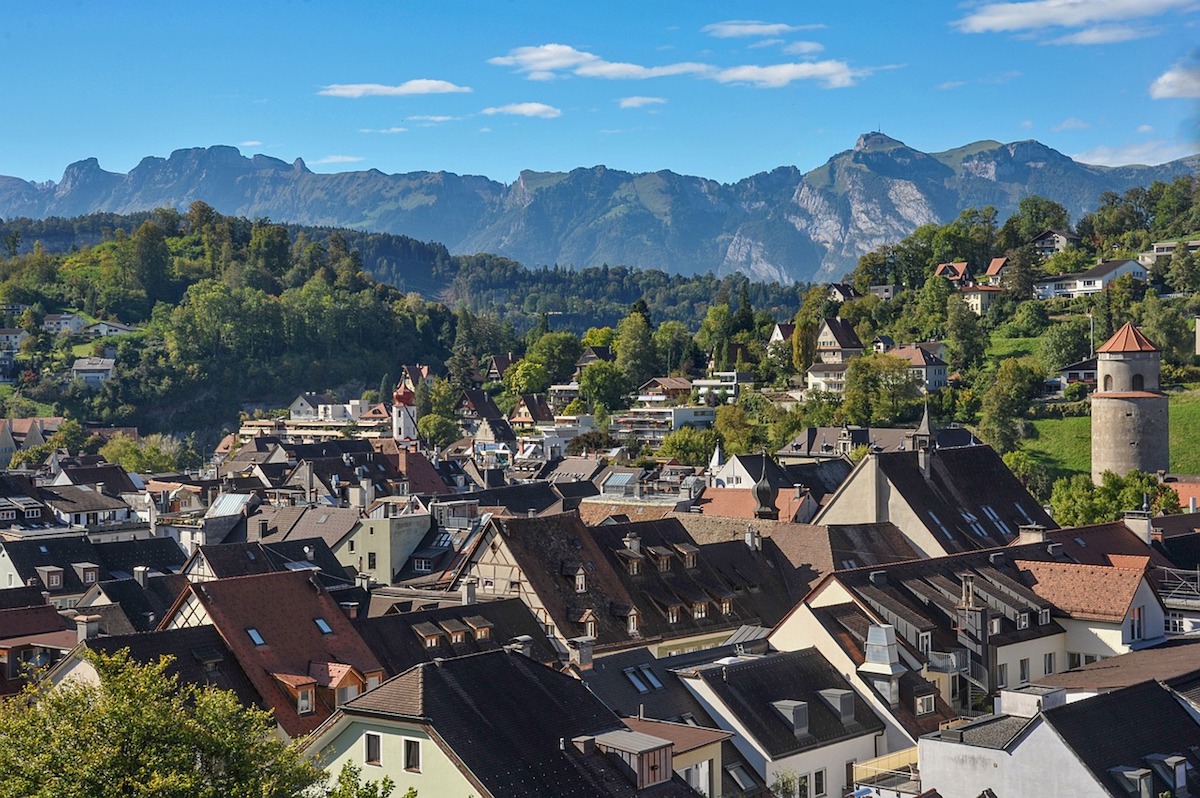
©Photo by Walter46 from Pixabay
Tucked in the westernmost corner of Austria is the large town of Feldkirch. Aside from the surrounding mountains of the Austrian Alps, Feldkirch is famous for its medieval charm. Take leisure walks around town and enjoy the breathtaking views of the alps mountains.
Top Attractions In Feldkirch
Feldkirch Wildpark: This animal park is perfect for those traveling with kids. Home to over 140 different animals, the park also houses an adventure park for guests to enjoy.
Drei Schwestern Mountain: This beautiful mountain range not only offers scenic views of alpine mountains but also outdoor activities. Enjoy hiking and climbing opportunities on well-developed paths and trails.
Marktgasse: The Marktgasse in Feldkirch is an excellent place to buy local produce. A trip here lets you discover various fruit and vegetable growers from Feldkirch. The market is also alive with different kinds of flowers. Add to that is a section for used toys and books for children.
Hallstatt
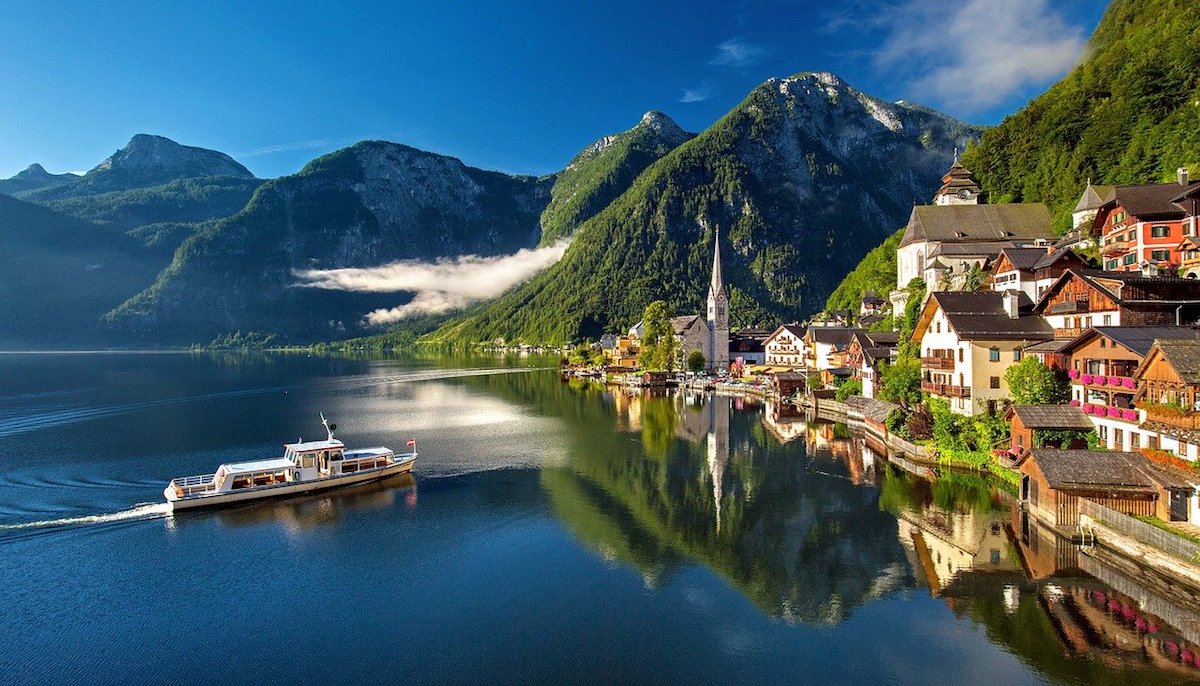
©Photo by Julius_Silver from Pixabay
Another breathtaking Austrian Alps is Hallstatt . This gorgeous village sits on the western shore of Lake Hallstatt. Visiting here lets you marvel at 16th-century Alpine houses as well as alleyways dotted with cafes and shops. Overlooking Lake Hallstatt, Hallstatt offers picturesque views and charm. No wonder many refer to it as one of the most beautiful lakeside towns in the world.
Top Attractions In Hallstatt
Salt mine: Visiting this side of the Austrian Alps, make sure to explore Salzwelten. This is one of the world’s oldest salt mines and is UNESCO-recognized. Dating back to 4000 BC, this mountain has gained its wealth of salt mines through the years. Salzwelten has guided tours to educate visitors more about its rich history.
Lake Hallstatt: What’s a visit to Hallstatt without touring its stunning lake? Every angle of the lake is beautiful, but they say some of the best views are from the water. Indulge in Lake Halstatt’s boat rentals that include rowboats, pedal boats, and electric options. Cruise around the lake and take in the beauty of Hallstatt and the alpine mountains at a relaxing pace.
Dachstein Caves: Another famous attraction on this side of the Austrian Alps is the Dachstein Caves. This network of caverns is among the most impressive in the Eastern Alps. Visiting these caves lets you enter an underground world of gigantic ice sculptures and icicles. Among the highlights include the Giant Ice Cave (Rieseneishöhle) that features stunning caverns. There’s also the magnificent Mammoth Cave (Mammuthöhle) where you can marvel at the huge pipe-shaped galleries and ice structures.
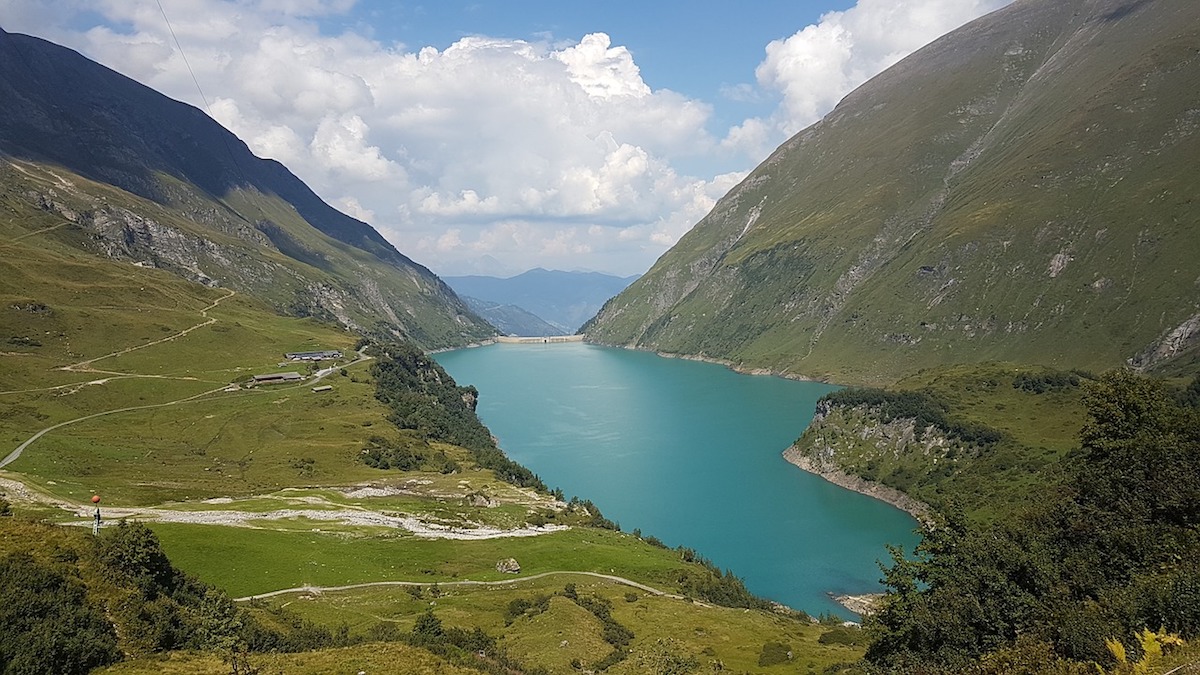
©Photo by MarioHaar from Pixabay
Nestled southwest of Salzburg in the Austrian Alps is the beautiful town of Kaprun. Not only do you get to enjoy the best alps mountains views here but also a host of outdoor activities. This holiday destination is perfect for the entire family. In Kaprun, you can either be very active or relaxed depending on your preference.
Top Attractions In Kaprun
Kitzsteinhorn: The Kitzsteinhorn is a famous skiing mountain in the Eastern Alps. From modern mountain railways to world-class infrastructure, Kitzsteinhorn gives holidaymakers unparalleled Alpine experience year-round. Add to that is the top snow quality from October to early summer.
Oldtimer Museum: If you’ve had too much hiking in Austria, take a break in the Oldtimer Museum. This small yet funky museum showcases over 200 vintage vehicles and motorbikes. With various vehicles from the 1950s to 1970s, this is the right spot for car and bike enthusiasts. Feast your eyes on vintage motorbikes, rollers, and tractors, among others.
Maiskogel Family Mountain: Another excellent family destination is Maiskogel Family Mountain. This ski area is also perfect if you want to experience some of the best hikes in Austria. The resort is ideal for groups or families who want to engage in winter sports. The gentle terrain and comfortable traditional huts also add to the fun experience. For the best winter sports experience, bundle up well! Don’t forget to bring those heated gloves and winter boots for maximum comfort.
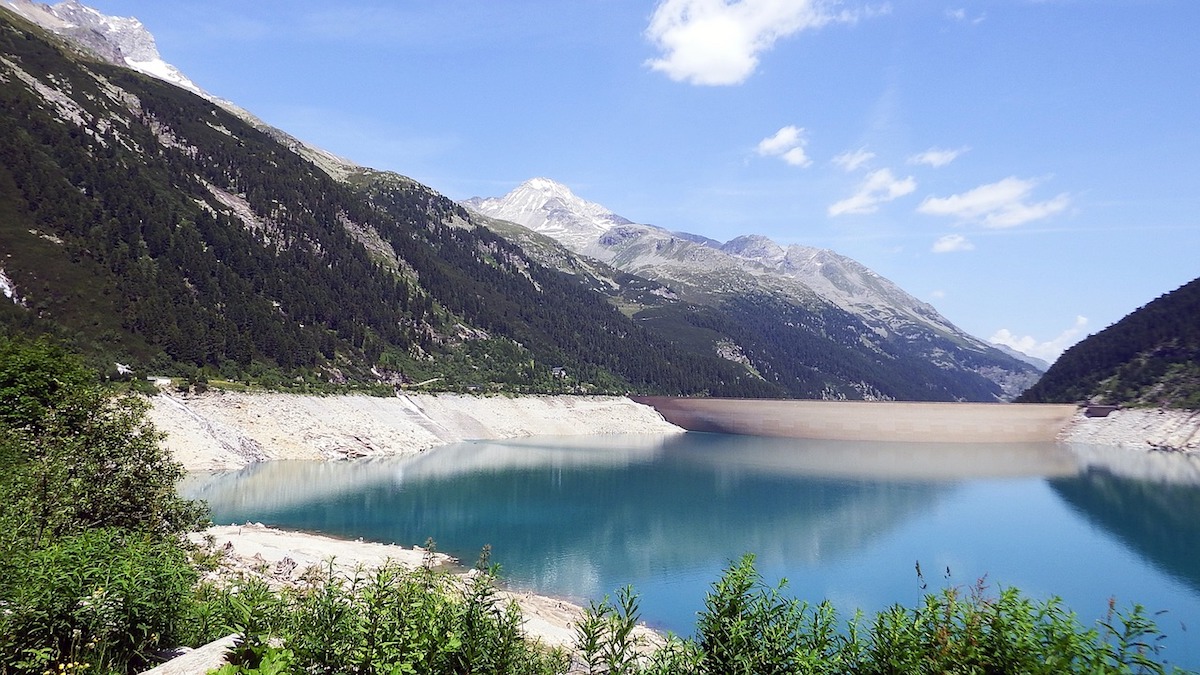
©Photo by wdietz from Pixabay
Another breathtaking Austrian Alps destination is Mayrhofen . This town is famous for winter sports for both intermediate and expert skiers, but don’t fret as there are a lot of gentle runs for the novice and families.
Top Attractions In Mayrhofen
The Penkenbahn: Touted as a modern cable car system, the Penkenbahn is an efficient way to get you high up the mountains. The ride up lets you enjoy the scenic views of the alpine mountains. Once on top, you get to enjoy a host of activities from hiking, biking to paragliding. It is also worth noting that the paths are wheelchair-friendly and there are bikes for rent.
Arena Coaster: The adventurous souls shouldn’t pass the chance to ride the Arena Coaster in Zell am Ziller. Unlike your favorite roller coaster, this one comes with refreshing mountain views. The 1,450m roller coaster is a favorite summer and winter attraction among tourists.
Schlegeis Reservoir: The drive up the Schlegeis reservoir is already vacation in itself. With stunning Alpine scenery, cyclists, drivers, and nature lovers can’t say no to this scenic drive. The 13km route includes four natural rock tunnels until it winds up at Schlegeis Reservoir. Standing at an elevation of 1,800 meters, you get to enjoy uninterrupted panoramic views of the alpine mountains.
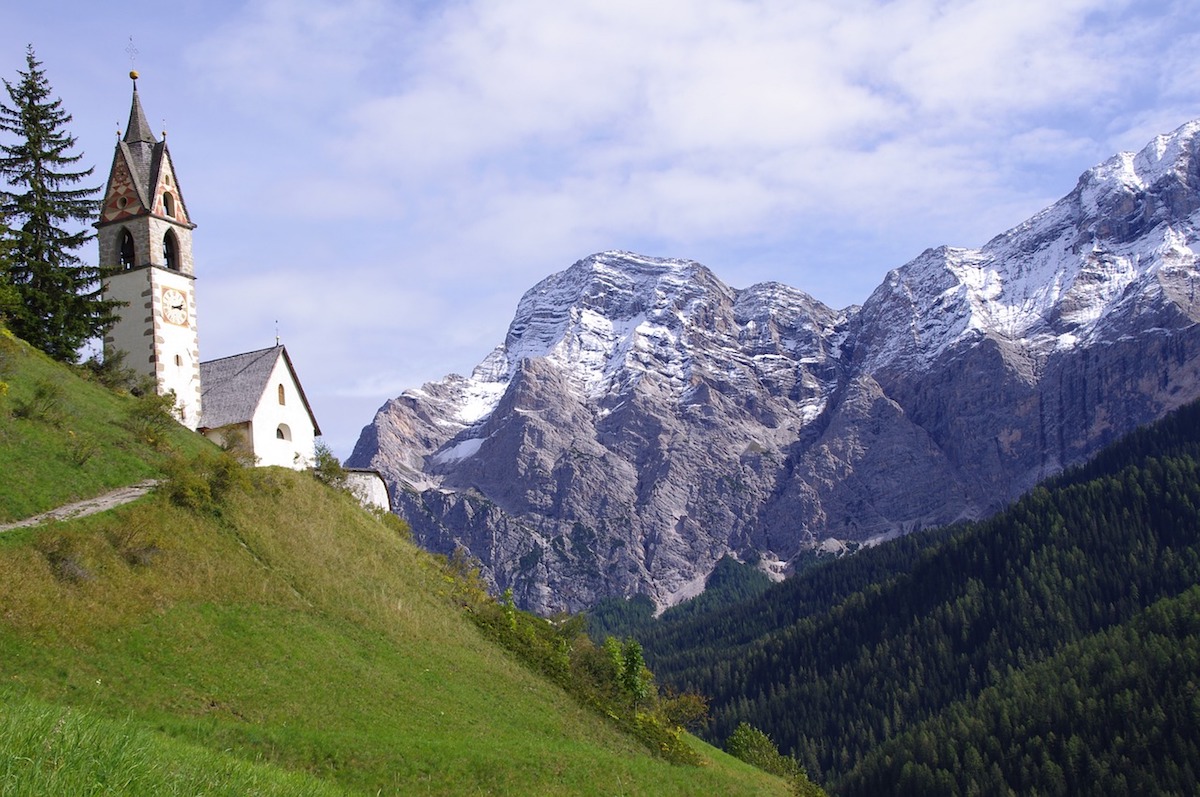
©Photo by famhellstern from Pixabay
For the best hikes in Austria, Lienz is an excellent destination. The Lienz Dolomites offers a variety of ranges to choose from depending on your skill level. Aside from the exercise and adrenaline rush, you get to enjoy the sweeping mountain views on your way up.
Top Attractions In Lienz
Hohe Tauern National Park: Hohe Tauern is the largest national park in Austria. Boasting 1800 sq km, the park offers a variety of valleys, forests, and villages. For such a vast park, you can either explore it on your own or via guided tours.
Lienzer Bergbahnen/Osttirodler Alpine Coaster: For the thrill-seekers, the Osttirodler Alpine Coaster is ready to oblige. The ride is perfectly safe for all ages. Aside from the ride, there are many trails to enjoy hiking in Austria.
Hauptplatz Lienz: Hauptplatz is an old town in Lienz. It may be small but has a lot to offer. Enjoy relaxing walks or dine in restaurants and cafes that dot the area. The colorful square is an excellent place to unwind and explore.
Interesting Austrian Alps FAQs
What to bring for hiking in austrian alps.
Hiking in the Austrian Alps needs some preparation, especially with the clothing and gear. While the Austrian Alps are relatively safer to hike, knowing the must-haves in your bag can make it more enjoyable. The following checklist should help you stay safe and comfortable when hiking the Alpine mountains.
The Essentials
Hiking boots: Your shoes can make or break your hiking in Austria. After all, you’ll rely mostly on your feet to get you up in the mountains. If not chosen with care, you could end up with a painful experience. When hiking the Austrian Alps, get hiking boots. Regardless of the brand, hiking boots are designed for the mountains. These should protect your feet and ankles from sprain and other injuries. Quality hiking boots will also keep your feet dry and warm. To make the experience more comfortable, grab a pair of waterproof hiking boots.
Socks: While shoes play an important role in hiking so does the right pair of socks. Keep in mind that a great shoe can easily be ruined by a bad pair of socks. When hiking the Austrian Alps, you need snug-fit socks that will keep your feet comfortable and protected. There are socks designed for hiking. These pairs protect your feet from blisters and have reinforcements in the right spots.
Backpack: Picking the right backpack is crucial when conquering the Austrian Alps as it affects your comfort throughout the hike. Aside from that, this is where you will pack all your supplies. For day hikes, a 25-35 liter backpack will work fine. This is enough to pack food, water, an extra shirt, a raincoat, and a small camera. For multi-day hiking in the Alps, a 60-65 liter backpack is recommended to pack more stuff. If you want to keep a separate bag for cash and valuables, a money belt is an excellent idea.
Clothes: Depending on how long you intend to hike, you’ll need a selection of clothes when hiking in Austria. Layered clothing is key to stay comfortable throughout your trip to the Austrian Alps. From the base layer, mid-layer to the waterproof layer, the right set of clothing will keep you warm and dry. Aside from that, you also need a good pair of pants. Invest in pants that can turn into shorts to save you space in your bag. (Tip: Don’t use cotton as it gets wet.)
Other Essentials
- Light or Matches
- Fleece jacket or pullover
- Mobile phone or emergency communication systems
- GPS system or compass
- Food and water
- Plastic bags
- Trekking poles
- Head torch or flashlight
- First-aid kit
- Extra batteries
Summer Hiking In Austrian Alps: What To Pack?
Hiking the Austrian Alps in the summer will still require the same essentials as when you climb during winter. However, the clothing selection will be different for obvious reasons. Wear quick-dry clothes when hiking the Austrian Alps in the summer — shirt, and shorts. Don’t neglect hiking shoes and socks as mentioned earlier. And while it’s summer, it’s still smart to pack a light jacket just in case it gets windy in the afternoon or night.
What Types Of Rocks Are The Austrian Alps?
The Austrian Alps or the Central Eastern Alps are mainly composed of gneiss and slate rocks. However, the Hohe Tauern and Engadine windows are mainly composed of Jurassic rocks and limestones as well as granite.
Where Are Austrian Alps Stubbier Gletscher?
Only 45 minutes away from Innsbruck sits the Stubai Glacier. This winter sports paradise offers great ski slopes for skiers of different skill levels. There’s also a snow park to busy your time with. The atmosphere is fun, energetic yet relaxing. You can unwind and rest in the bars and restaurants.
Where To Stay In The Austrian Alps?
You’ll never run out of places to stay in the Austrian Alps. From luxury accommodation to budget inns, there’s always one for every preference.
Avenida Panorama Suites Kaprun: With stunning panoramic views of the Alpine mountains, Avenida Panorama Suites offers a luxurious stay. Aside from the views, there’s an indoor spa with saunas. This hotel is famous for skiing and cycling.
Hotel Der Waldhof: Sitting in the beautiful Zell am See is The Waldhof. An ideal starting point for hikes, ski tours, and trips, this 4-star hotel has a lot to offer. From a relaxed atmosphere, amazing views to comfortable rooms, The Waldhof is an excellent choice.
Hotel Gamshof: A few minutes away from the town center, the Hotel Gamshof is a great budget hotel in the Austrian Alps. Staying here gets you close to all the festivals, brass bands, and all the excitement of the town. The rooms are clean, comfortable, and complete with amenities.
Alps, Alps, And Away!
If you’re a fan of dramatic mountain scenes, snow-capped mountains, and gorgeous towns and cities, the Austrian Alps won’t disappoint. Aside from the stunning scenery, the rich culture and excellent Austrian cuisine are worth exploring. However, what makes a trip to the Austrian Alps special is how you can be either very active or relaxed. Depending on your mood, you can hike or ski, or simply relax in your cabin snuggled among the wooded mountains.
Whichever activities you’d like to engage in, a trip to the Austrian Alps is always a treat. Just make sure to prepare well ahead to make the most out of your alpine mountain visit! And while you’re there, don’t forget to try Austria’s national drink: Schnapps!

- Privacy Overview
- Strictly Necessary Cookies
This website uses cookies so that we can provide you with the best user experience possible. Cookie information is stored in your browser and performs functions such as recognising you when you return to our website and helping our team to understand which sections of the website you find most interesting and useful.
Strictly Necessary Cookie should be enabled at all times so that we can save your preferences for cookie settings.
If you disable this cookie, we will not be able to save your preferences. This means that every time you visit this website you will need to enable or disable cookies again.
Awesome, you're subscribed!
Thanks for subscribing! Look out for your first newsletter in your inbox soon!
The best things in life are free.
Sign up for our email to enjoy your city without spending a thing (as well as some options when you’re feeling flush).
Déjà vu! We already have this email. Try another?
By entering your email address you agree to our Terms of Use and Privacy Policy and consent to receive emails from Time Out about news, events, offers and partner promotions.
Love the mag?
Our newsletter hand-delivers the best bits to your inbox. Sign up to unlock our digital magazines and also receive the latest news, events, offers and partner promotions.
- Los Angeles
Get us in your inbox
🙌 Awesome, you're subscribed!

The best places to visit in the Austrian Alps
From world-famous ski resorts and iconic film locations to tranquil lakes and alpine dairies, this is where to go in the Austrian Alps

Sweeping across much of Austria from west to east, this impressive section of Europe ’s mighty mountains stops just short of Vienna . There are ranges with rugged granite outcrops, spectacular glaciers and summits over 3000m (9,843 feet), as well as those with lush valleys and gentler terrain. In the colder months, snowy slopes make Austria a hub for winter sports, while summer appeals to hikers and bikers – or those who just want to twirl in a meadow à la Julie Andrews in The Sound of Music. Each to their own. Here are the best places to visit in the Austrian Alps, according to destination expert Kate Mann.
Kate Mann is a travel writer who has travelled extensively in Austria. At Time Out, all of our travel guides are written by local writers who know their cities inside out. For more about how we curate, see our editorial guidelines and check out our latest travel guides written by local experts.
RECOMMENDED: 🇦🇹 The best things to do in Vienna
An email you’ll actually love
Where to go in the Austrian Alps

1. Innsbruck
Surrounded by mountains, the capital of Tyrol makes a great base for exploring some of the most dramatic scenery in the Austrian Alps. Start by taking the cable car up to the Nordkette range which sails over the pastel-coloured buildings below. Back in the city, don’t miss the old town with its winding alleys and traditional restaurants serving classic Tyrolean cuisine. Try the kaspressknödel , comforting cheese dumplings or the g röstl , a mix of onion, bacon and potatoes, topped with a fried egg.

2. Sölden
Set-jetters, this one’s for you. Sölden, a town in the Ötztal valley, was chosen by director Sam Mendes in 2015 as a shooting location for key scenes in the James Bond movie Spectre . If you’ve seen it, you’ll recall scenes of Land Rovers thundering across the snow and Daniel Craig in a pair of glacier sunglasses. Central to the location choice was a futuristic glass-walled building, sitting high at 3,048m. Normally an upscale restaurant called ice Q , it became a fictional medical centre during filming. Easy to reach using the Gaislachkoglbahn (mountain lift), it now has an installation of the shattered plane from Spectre next door. The area is also perfect for a wide range of outdoor sports, including early-season skiing.

3. Gesäuse National Park
Deep gorges, limestone formations and white-water rapids define this part of the state of Styria. The park’s name aptly stems from the word for ‘roaring’: the land here centres around the fast-moving torrents of the Enns river and the channels that dart off in different directions. To the south, you’ll find Johnsbach, part of the Bergsteigerdörfer (Mountaineering Villages) initiative. Managed by the Austrian Alpine Association, the project aims to promote sustainable development and offer alternatives to mass tourism in the Alps.

4. St Anton
Commonly referred to as the cradle of alpine skiing, this once-quiet settlement was first put on the map by a number of local pioneers. This included ski enthusiast Hannes Schneider who opened the region’s first ski school and developed a technique that continues to influence teaching. Today St Anton is part of the largest connected skiing area in Austria and is known around the world. Reliable snowfall, diverse free-riding options and lively après-ski bars keep people coming back year after year.

5. Werfen
You won’t be judged if you have the urge to start singing ‘The Hills Are Alive’ in Austria – especially in Werfen! After ticking off a number of Sound of Music filming locations in Salzburg, this nearby town is home to the spot where the von Trapp children first learned to Do-Re-Mi with the Hohenwerfen Fortress in the distance. You can get there via a well-marked path. Werfen is also home to a huge natural ice cave, Eisriesenwelt, where stalactite-filled passages lead deep into the mountain.

6. Grossglockner High Alpine Road
Completed in 1935, this epic pass road winds its way through the Hohe Tauern National Park, the largest nature reserve in the Alps. Open from May to November, depending on the conditions, it connects the state of SalzburgerLand in the north to Carinthia in the south. On a clear day, you can see Austria’s highest peak Grossglockner as well as the Pasterze Glacier. Bring your camera, but also your wallet to pass through the toll gates. Alternatively, you can pay online.

7. Vorarlberg
Austria’s smallest and westernmost state is a haven for cheese fans. Visit a selection of dairies for specialties such as Vorarlberger Alpkäse, a hard mountain cheese, or Montafon Sura Kees , a rare fermented option that has seen a revival in recent decades. For more local craftsmanship, head to the region of Bregenzerwald. Here internationally renowned architects have long been using natural materials, such as indigenous timber, to create simple yet striking contemporary structures that work with the landscape. This includes a set of unusual bus stops.

8. Lake Wörthersee
Situated close to the Slovenian border and surrounded by forested foothills, Wörthersee is one of Austria’s largest lakes. Thanks to its notable green-blue colour and warm waters in summer , it’s a popular holiday and swimming destination. While some of the banks are occupied by private villas, there are a number of public beaches where you can spend the day. Climb to the top of the Pyramidenkogel, a 100m-high viewing platform, for the best views of the lake and beyond.

9. Saalbach-Hinterglemm
First and foremost a ski destination, this large resort has turned its attention to additional seasons in recent years. Now one of country’s main centres for mountain biking, cyclists flock here during the warmer months to tear down the extensive network of trails, many reachable by cable car. There are also a number of gravel biking routes that start in Saalbach and wind on through to neighbouring valleys. All calories burned can be replaced with large servings of apple strudel from one of the wooden hillside huts.
[image] [title]
Discover Time Out original video
- Press office
- Investor relations
- Work for Time Out
- Editorial guidelines
- Privacy notice
- Do not sell my information
- Cookie policy
- Accessibility statement
- Terms of use
- Modern slavery statement
- Manage cookies
- Advertising
- Time Out Market
12 of the best places to visit in Austria

May 9, 2024 • 14 min read

From Zell am See to culture-packed Vienna, here are the best places to visit in Austria © auerimages / Getty Images
Imagine Austria and your mind might well drift to the lavish palaces and coffeehouses of Vienna , the snow-white peaks of the Tyrolean Alps , the river romance of the Danube and Mozart symphonies ringing out in the baroque concert halls of Salzburg .
And if this is your first visit, you’ll undoubtedly want to see all the whole darned lot and more besides. But there is far more to this pocked-sized, landlocked country than at first meets the eye.
Whether you are heading gleefully high into the glaciated mountains of Hohe Tauern National Park , tuning into the latest tech wizardry in future-focused Graz , hiding away in the little-visited wilds of the Bregenzerwald, or tripping along the vineyard-draped wine roads of southern Styria , which have more than a whisper of Tuscany about them, Austria richly rewards those who dare to deviate from the well-trodden track.
Here's our take on the best places to visit in Austria.
1. Zell am See
Sitting smugly on the shores of a bluest-blue lake and buttressed by lofty peaks, Zell am See is a knockout. The cheerful Alpine resort has sensational wilderness on its doorstep, including the glacier-capped 3203m (10,509ft) Kitzsteinhorn , where you can embark on a glacier trail, kick back on a snow beach, spend the night in an igloo, and ski well into summer. It’s also perfect for dipping into the ravishing mountains of Hohe Tauern National Park.
The resort has a real outdoor buzz in summer, with people rocking up to swim, boat, windsurf and stand-up paddleboard on the lake, cycle around or paraglide above it. If you’re a hiker, you’re in for a treat, too: a cable-car zips up to Schmittenhöhe to hook onto the 17-km (10.5-mile), moderately challenging Pinzgauer Spaziergang , one of Austria’s most memorable day hikes, with exhilarating views of the country’s highest peak, 3798m (12,461ft) Grossglockner. The resort also makes a terrific springboard for the Grossglockner High Alpine Road , a head-spinning, helter-skelter drive, with on-high views of waterfalls, lakes, glaciers and a sea of snowy Alps.
Planning tip: Dodge the peak-season crowds by visiting as soon as the snow begins to melt from the highest summits in late May or in autumn before the flakes fall.
Time your visit to Austria just right with our seasonal guide
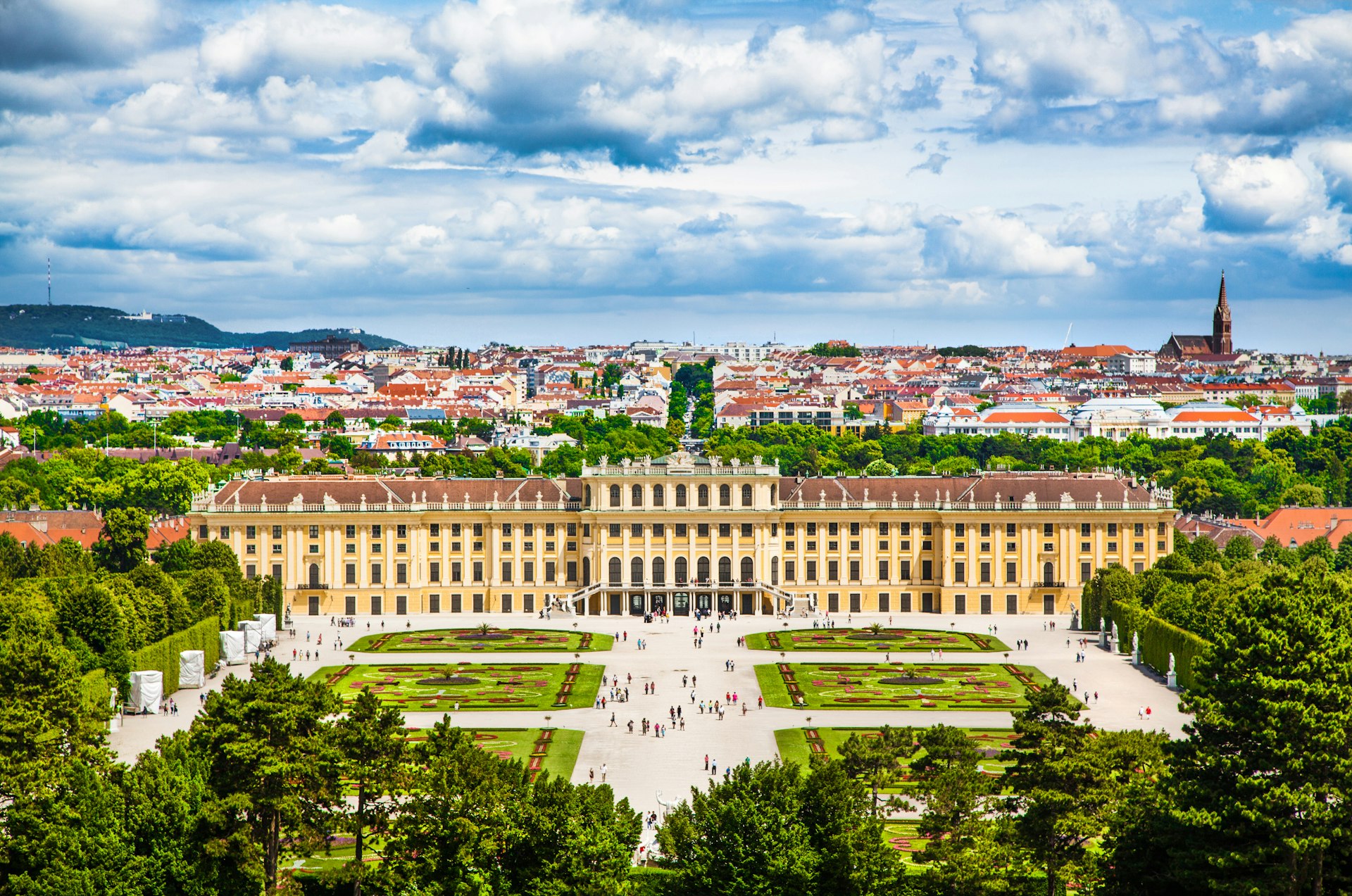
Few cities move so effortlessly between past and present as Vienna, where Hapsburg emperors ruled the roost for 600 years. The pomp and splendor can be almost overwhelming, as you waltz through vast, exuberantly gilded palaces like the Hofburg and Schönbrunn , tour Klimt-filled galleries like the Upper Belvedere , stroll grand baroque streets, and saunter past follies and Greek gods in landscaped gardens that gaze down upon the city with a kindly eye.
The music of Mozart, Beethoven and that old romantic devil Strauss reverberates in some of the world’s most feted and opulent concert halls: the Musikverein and Staatsoper . And even going for a coffee can be a regal affair at the likes of chandelier-lit Café Central , where all the 19th-century bigwigs once hung out.
Vienna isn’t all about show. Venture beyond the big-hitters of the Innere Stadt and the Gothic whack of Stephansdom and you’ll find a liveable, loveable capital that moves to its own urban, edgy beat: in parks sprawling along the banks of the Danube, at the MuseumsQuartier , delivering a serious hit of culture in the former baroque imperial stables, and at food markets like Naschmarkt , where Vienna embraces the world in street food and spice.
Planning tip: As night descends and the city twinkles, take a self-guided tour of the monumental Ringstrasse boulevard that wraps around Vienna’s historic 1st district (Innere Stadt) on trams 1 and 2.
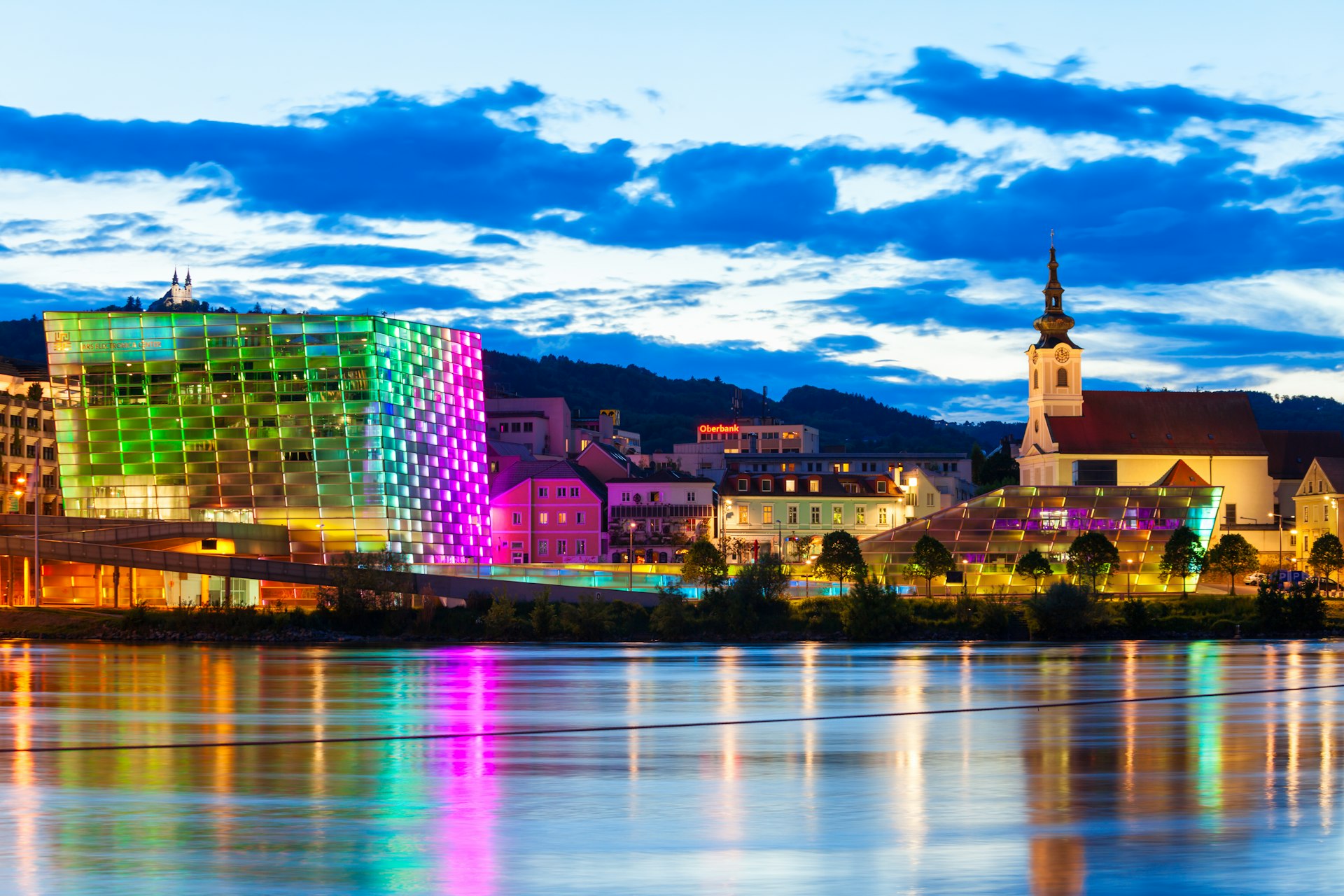
Other Austrian cities flick on the fairy-tale charm, but not Linz . This is where Austria leaps headfirst into the 21st century. With its gaze fixed firmly on the future, this tech-mad trailblazer has an ever-evolving cultural scene, and is making pioneering waves in avant-garde art and architecture, with a flurry of galleries and buildings at the cutting edge of design; all of which helped it snag UNESCO City of Media Arts status back in 2014.
At the top of any itinerary is Ars Electronica Center , zooming in on technology, science and digital media. Here you can interact with robots, animate digital objects, print 3D structures, turn your body into musical instruments and (virtually) travel to outer space. Its over-the-Danube rival is the rectangular glass-and-steel Lentos , a vast repository of modern art, with a stash of Warhol, Schiele, Klimt and Kokoschka originals. Both museums have a face-off of illuminations when they strikingly change color by night.
Planning tip: Tune into the art and technology of the future – from VR to biotech, robotics to media art – at the five-day Ars Electronica Festival held in early September.
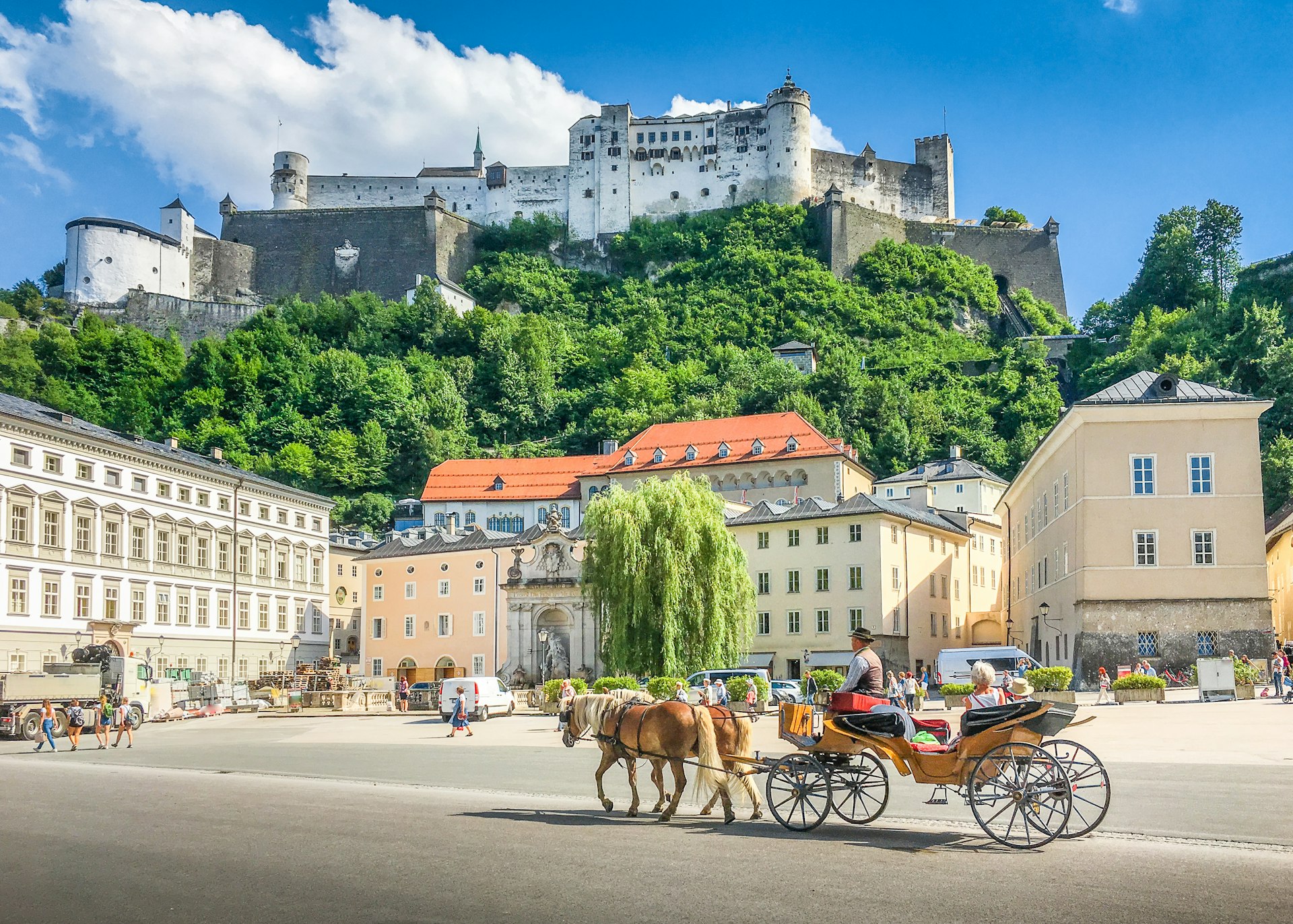
4. Salzburg
On the banks of the fast-flowing, turquoise Salzach River, Salzburg looks freshly minted for Hollywood. From the moment you arrive, you’re forced to gaze up in wide-eyed wonder: at the soaring spires of its brilliantly baroque Altstadt, home to the Residenz palace , where prince-archbishops once held court, and the copper-domed cathedral ; at its high-on-a-hill, 900-year-old fortress, Festung Hohensalzburg ; at the cliffs of 540m-high (1772ft) Mönchsberg flinging up above the city; and at the white-wisped peaks of the Alps that pucker up on the horizon.
Salzburg has churned out many a legend, most notably Mozart, who was born in a bright-yellow townhouse on Getreidegasse, which now harbors a museum that’s an ode to the virtuoso. His high-note-hitting rival is Maria of The Sound of Music (1965) fame. Boundless tours and bike rides whizz around the film locations, or devise your own self-guided spin of them.
Escape the masses by taking a spirit-lifting hike along the wooded cliffs of Mönchsberg to Augustiner Bräustübl , a 400-year-old, monk-founded brewery, with Oktoberfest flavor, vaulted parlors, and a 1000-seat beer garden for quaffing foaming beers under the chestnut trees. For a breath of fresh Alpine air and trails weaving deep into the mountains, hitch a ride on the cable car up to 1853m-high (6079ft) Untersberg on the border with Bavaria.
Planning tip: Salzburg gets totally swamped in peak season. Rooms are like gold dust and rates rocket during the festival from mid-July to late August. Spring and autumn are less crowded, while winter here is cold but beautiful, particularly when Christmas markets sparkle.

5. Graz and the Styrian Wine Roads
With a castle high on a bluff, an Altstadt that’s a jumble of Renaissance courtyards and baroque palaces hinting at nearby Italy, and some strikingly avant-garde galleries, Graz is an endearingly laid-back, cultured city for dipping deeper into the oft-overlooked region of Styria in southern Austria.
Using the city as a base, you can easily strike out onto the Weinstrassen (wine roads) that vein the gently rolling hills, flower-stippled meadows, forests and vineyards that carpet the south of the province. With vineyards marching up steep hillsides and even the odd poppy and cypress tree, this is Austria’s answer to Tuscany (minus the crowds) and perfect road trip territory . As you make your way through towns like Leutschach, Ehrenhausen, Gamlitz and Berghausen, you’ll find wineries opening their doors for tastings and farmhouses offering rustic respite.
Planning tip: On the last weekend in September, the region pops many corks at its Weinlesefest (wine harvest festival).
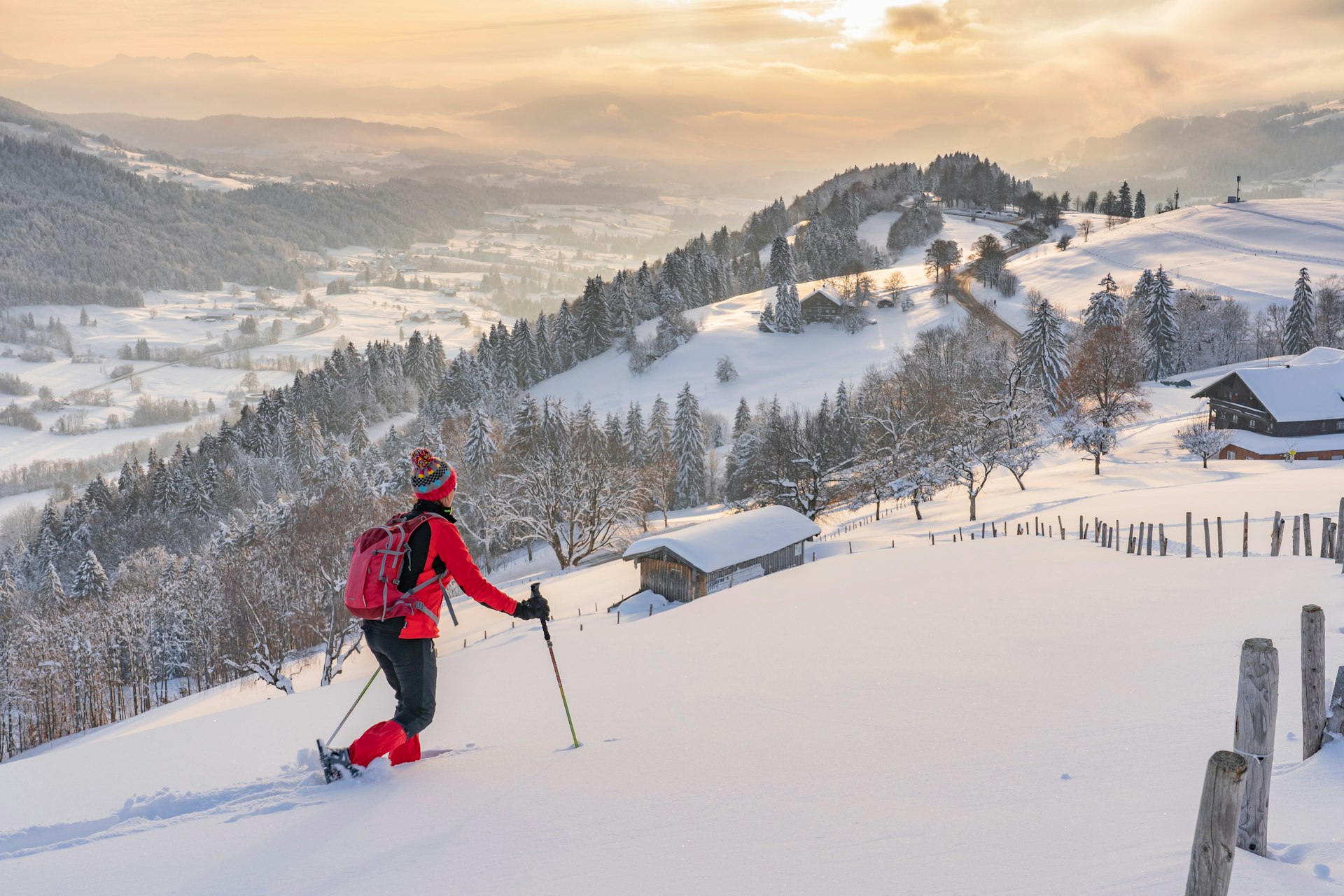
6. Bregenzerwald
Everyone raves about the mountains of Tyrol and Salzburgerland, but there’s a lesser-known region that deserves a look-in. Huge swathes of Austria's far west, Vorarlberg , remain deliciously off-the-radar, with narrow, silent valleys carving up mighty peaks and forests. It is here that the Alpine heights of the Silvretta-Montafon give way to the wavy hills and lush dairy country of the Bregenzerwald, which in turn fall to the Bodensee (Lake Constance), where Austria rolls into Germany and Switzerland.
The Bregenzerwald, in particular, is an incredibly peaceful and deeply rural corner of the country to slip off the map for a few days, whether hiking, cycling or cross-country skiing. Roads here unzip through cow-nibbled pastures, passing limestone peaks and one ludicrously pretty timber chalet-lined village after the next. The dream is Schwarzenberg, where you can visit the Angelika Kauffmann Museum before lunch in the wood-panelled parlor at Gasthof Hirschen .
Planning tip: You’ll need own wheels to explore the region’s KäseStrasse (cheese road), which twists through valley and lush mountain meadow, linking up cheese-makers, farm shops and Schoppernau’s show dairy .
For more great driving routes check out our guide to Austria's best road trips
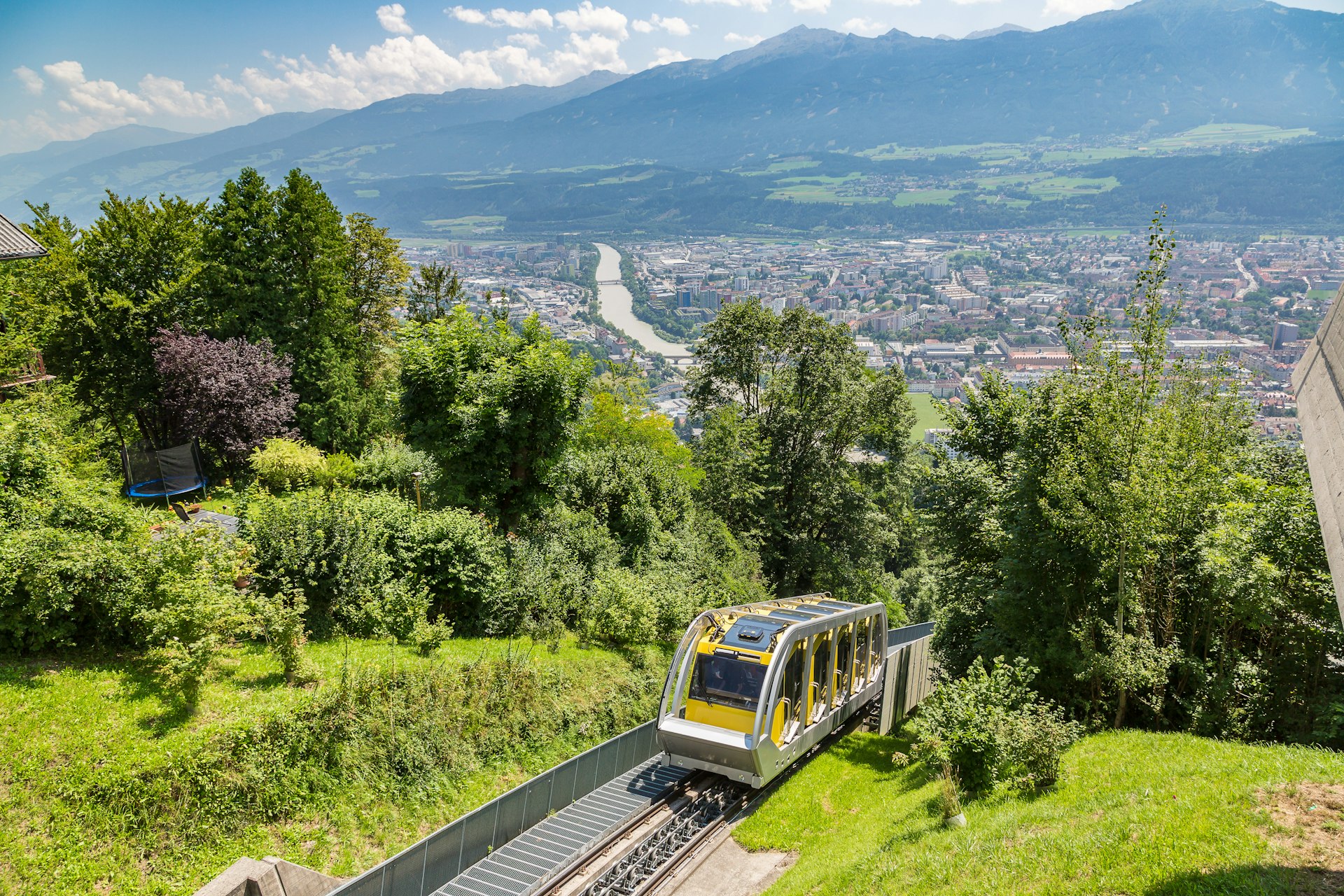
7. Innsbruck
The jagged Nordkette Alps rise like a theater curtain above Innsbruck , Tyrol’s rivetingly pretty capital. Here mountains whoosh up above the turquoise Inn River and seem to sneak into every picture. Can’t decide between city and slopes? Here you get the best of both, with a space-age funicular designed by architect Zaha Hadid winging you up to the Alpine heights of 2334m (7657ft) Hafelekar in mere minutes.
Innsbruck is perhaps unique in the fact you can spend the morning carving powder, hiking or dashing downhill on a mountain bike, and the afternoon with a serious hit of culture. Begin by wafting around the swanky imperial state apartments of the cupola-topped Hofburg palace. Nearby the Goldenes Dachl catches your eye, a late-Gothic oriel shimmering with 2657 fire-gilded copper tiles. But all that glitters here is not gold: just a quick bus hop from town, Swarovski Kristallwelten in Wattens delivers some serious crystal sparkle.
To ramp up the adventure, head to the neighboring village of Igls for a pulse-quickening ride on the Olympiabobbahn, where you’ll pick up speeds of 110km/h (68mph) as you pinball around 10 curves.
Planning tip: With stays of two nights or more, you’ll receive the Innsbruck Welcome Card, which entitles you to benefits like free public transport, bike rental, rides on mountain lifts, guided hikes (in summer) and snowshoe tours (in winter) .
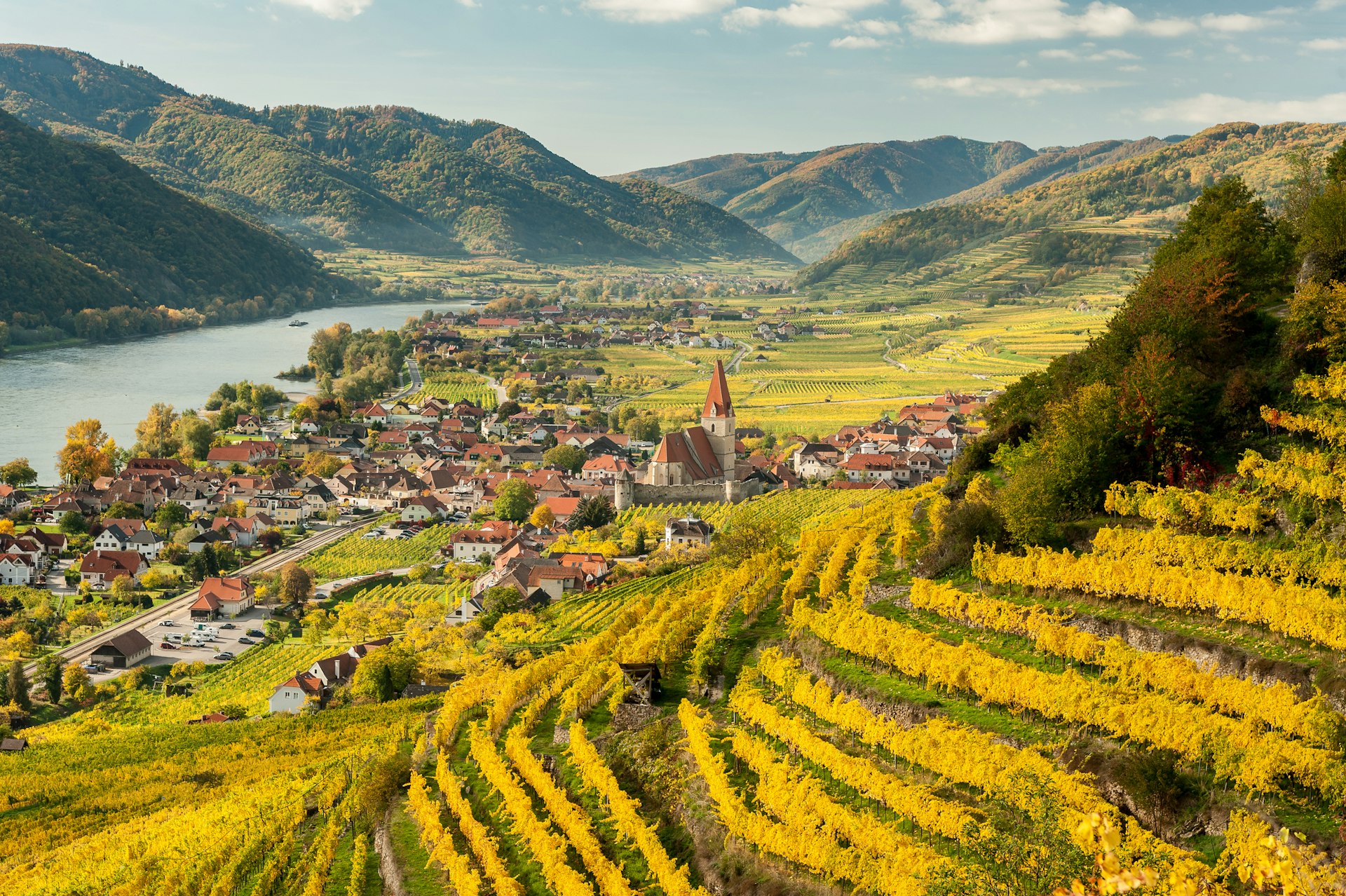
7. The Wachau
Few places capture the soul of Austria like the Wachau , a skip west of Vienna, with mellow landscapes unfolding as harmoniously as a Strauss symphony. Here orchards and vineyards rib terraced slopes that stagger down to the meandering River Danube, and trails waltz through field and forest to medieval castles romantically poised on hillsides. With one of the country’s most exciting food and wine scenes, paths that are a joy to explore on foot or by bike, and poetic landscapes, this stretch of the Danube Valley is so darned scenic that it has been granted UNESCO World Heritage status.
The big-hitter culturally is Stift Melk , a twin-spired, onion-domed baroque stunner of an abbey, with a sunny yellow facade and flamboyantly frescoed monastery church. Beyond this, you’ll want to see the fairy-tale that is Dürnstein’s ruined castle , where Richard the Lionheart was locked up in the late 12th century for insulting Leopold V, and the low-key village of Spitz, topped off by the 1000-Eimer-Berg, so-named for its ability to fill 1000 buckets of wine each season.
Planning tip: Trains run from Vienna to Krems and Melk in an hour, making this a cracking day trip from the capital . Rent wheels with nextbike to pedal along the river and through wine country on a stretch of the Danube Cycle Path.
Looking for other day trips from Vienna? Here are some of the best
9. Bad Gastein
Smuggled away in a wildly romantic valley in the glacier-capped Hohe Tauern mountains, Bad Gastein is an instant heart-stealer, with belle époque villas that evoke the grace of a bygone age clinging to sheer, forested slopes, and a 341m (1119ft) waterfall plummeting over cliffs. Over the centuries the town has beguiled everyone – from beauty-conscious Romans to romantic souls such as Schubert and Klimt and royals like Empress Elisabeth – for the miraculous healing powers of its radon-laced thermal hot springs.
Today you can take these same waters at the grotto-filled Felsentherme and architecturally innovative Alpentherme baths. Or, for greater impact, go deep into the bowels of the Gasteiner Heilstollen , a medieval gold mine turned health center, to absorb the radon (taster sessions are available), said to cure all manner of ills from arthritis to fibromyalgia.
One look at the mountains that fling up above the valley and you’ll be itching to head higher. A gondola swings up to 2200m (7218ft) Stubnerkogel , where you can hike across a 140m-long (459ft) suspension bridge for out-of-this-world views deep into the snowy Hohe Tauern peaks, or ski in winter.
Planning tip: Stay overnight and you get the Gastein Card, which entitles you to free use of local public transport, free guided half-day and full-day hikes, plus substantial discounts on mountain lifts, thermal baths and activities.
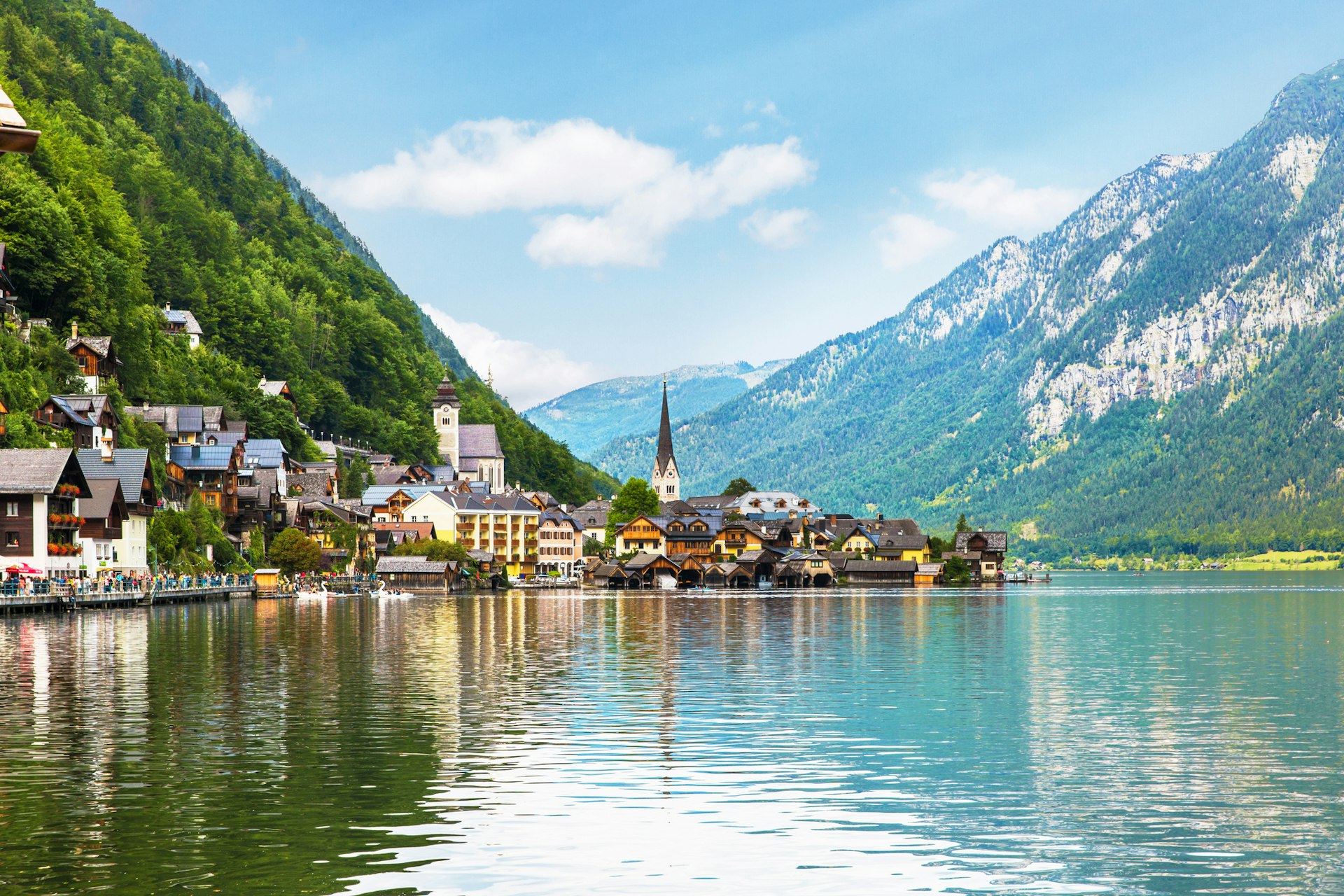
10. Salzkammergut Lakes
If you’ve ever swooned over a lake scene in The Sound of Music it was probably filmed in the Salzkammergut , a fantasy region of jewel-colored Alpine lakes, wildflower-strewn valleys and peaks topping out near the 3000m (9845ft) mark. Should you only have time to see one lake, make it crazily pretty Hallstatt , a heavenly splash of glassy green-blue water, rimmed by the Dachstein Mountains. So gorgeous that it inspired the kingdom of Arendelle in the 2013-Disney blockbuster Frozen , its looks haven’t gone unnoticed and the village’s streets are clogged in summer. A funicular floats up to UNESCO-listed Salzwelten , the world’s oldest salt mines, which peer back on 7000 years of history and once produced the region’s "white gold".
The region rewards those who don’t rush straight off: allow longer so you can soak in thermal baths in spa town Bad Ischl, bathe in the warm waters of crescent-shaped Mondsee , follow in pilgrim’s footsteps to Wolfgangsee, and explore the icy underworld of the Dachstein Caves in Obertraun.
Planning tip: While July to early September are ideal for lake swimming (the water is mighty chilly at other times of the year), you might prefer to visit in the shoulder seasons – spring and autumn are glorious – to escape the selfie stick-wielding throngs and enjoy the lakes in peace.
11. Steyr and Nationalpark Kalkalpen
So you want to go properly off piste? Upper Austria is the place to do just that. Somehow this region has managed to slip under the tourist radar – making it ripe for an away-from-the-crowds adventure. This province has its own quiet, lingering beauty, with golden wheat fields giving way to patchwork fields and apple orchards that in turn rise to mountains rolling to the Czech border. It’s a joy to explore on foot or by bike, with cycle paths hugging river banks, rambling farms selling homegrown Most (cider) and mellow autumn mists.
The fairest town by far is Steyr, which composer Franz Schubert called "inconceivably lovely" and used as the inspiration for his sprightly "Trout Quintet". At the confluence of the swiftly flowing Enns and Steyr rivers, this pretty town of cobblestones and pastel-hued baroque houses makes a brilliant base for diving into the rest of the region.
Planning tip: For hiking, mountain-biking and rock climbing action, the Nationalpark Kalkalpen ’s limestone peaks, gorges, and high moors are within easy striking distance.
12. St Anton am Arlberg
In the beginning there was St Anton am Arlberg... In the place where the country’s first ski club was founded in 1901 and downhill skiing was born, the Austrian Alps take a huge leap into wilder heights. Overshadowed by a real beast of a mountain called Valluga (2809m/9216ft), this resort makes even veteran skiers quiver in their boots with some of Austria’s steepest on- and off-piste skiing . The ultimate challenge is the Run of Fame. One of the longest circuits in the Alps, this 85km (53-mile) marathon ski wraps up the entire Arlberg arena and covers 18km (11 vertical miles). With 305km (190 miles) of slopes to pound, the skiing here is the stuff of legend. And the après-ski scene is bonkers – people here like to party as hard as they play.
While winter is the big deal for most, the outdoor action ramps up in summer too, with hiking trails heading from peak to glorious peak, and adventure pros H2O taking you white water rafting on the fast-flowing Inn River, canyoning in the surrounding gorges, tubing, and mountain biking. If mindfulness is more your bag, mountain yoga is having a moment here too, with the resort playing host to a peak-gazing, mood-lifting, body-bending festival in early September.
Planning tip: From mid-June to early October, all guests receive the handy St Anton Summer Card , including benefits like free use of public transport, entrance to local museums, guided hikes, yoga classes and swimming pool entry.
This article was first published Nov 2, 2021 and updated May 9, 2024.
Explore related stories
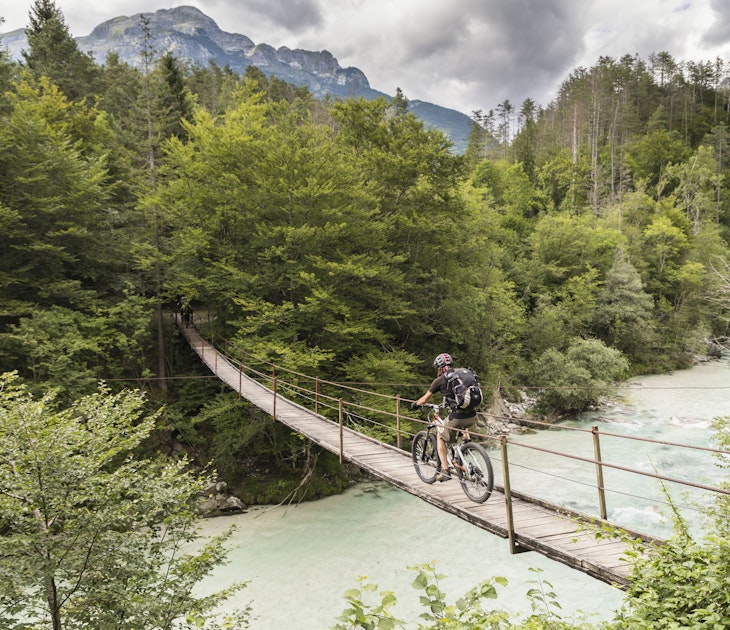
Budget Travel
Apr 27, 2024 • 5 min read
With affordable public transport, great food markets and discount cards, a visit to Slovenia needn't blow up your budget.

Jan 19, 2024 • 11 min read

Jan 5, 2024 • 20 min read
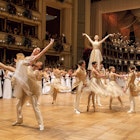
Nov 6, 2023 • 5 min read
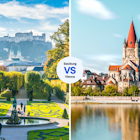
Oct 9, 2023 • 7 min read

Sep 29, 2023 • 7 min read

Jul 3, 2023 • 3 min read
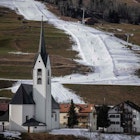
Jan 6, 2023 • 5 min read
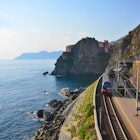
Dec 27, 2022 • 8 min read
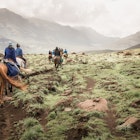
Dec 26, 2022 • 14 min read
Explore Austrian Alps
Plan your trip to austrian alps: best of austrian alps tourism.
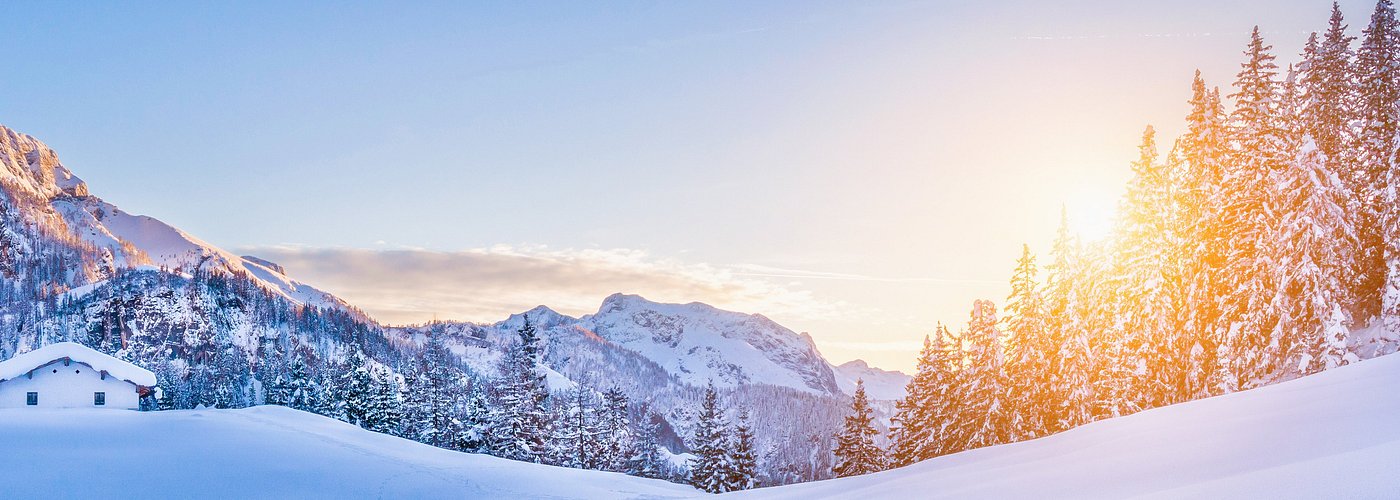
Essential Austrian Alps
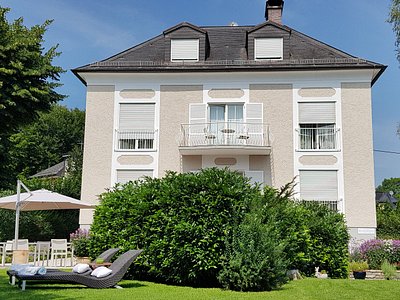
Trending in the forums
Austrian Alps Is Great For
Ski & ride.

Explore Austrian Alps
Plan your trip to austrian alps: best of austrian alps tourism.

Essential Austrian Alps

Trending in the forums
Austrian Alps Is Great For
Historical tours.

Ski & ride

Cultural Tours

Explore Austrian Alps
Plan your trip to austrian alps: best of austrian alps tourism.

Essential Austrian Alps

Trending in the forums
Austrian Alps Is Great For
Historical tours.

Ski & ride

Cultural Tours

Explore Austrian Alps
Plan your trip to austrian alps: best of austrian alps tourism.

Essential Austrian Alps

Trending in the forums
Every product is independently selected by (obsessive) editors. Things you buy through our links may earn us a commission.
I Hut-to-Hut Hiked Through the Austrian Alps for 5 Days
Mountaintop beers, roaming goats, and homemade strudel..
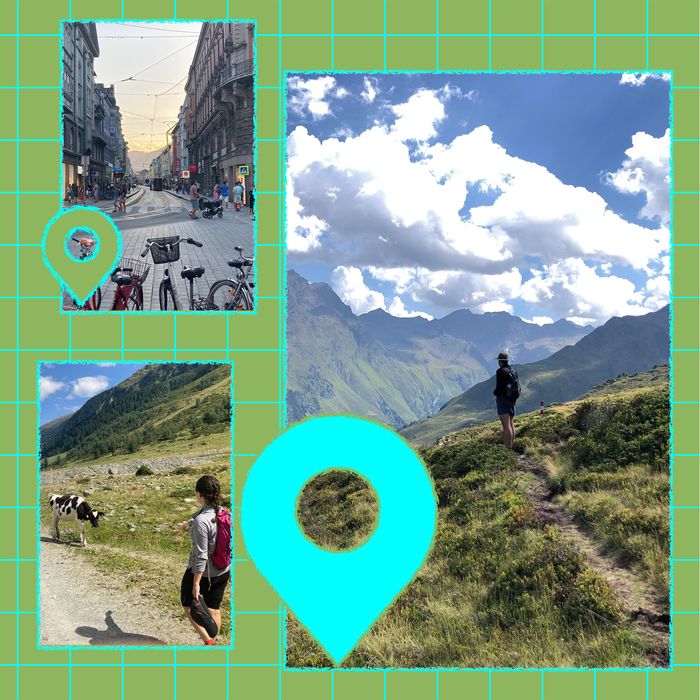
Everyone knows that person who spends weeks sniffing around travel blogs, going deep into Tripadvisor rabbit holes, collecting Google docs from friends of friends, and creating A Beautiful Mind –style spreadsheets to come up with the best vacations and itineraries possible. In this recurring series, we find those people who’ve done all the work for you and have them walk us through a particularly wonderful, especially well-thought-out vacation they took that you can actually steal.
I’m the kind of traveler who will take a mountain over a museum any day, and thankfully, so is my partner, Jack (our first date was a hike). In August, we went on our first international trip together, which, quite fittingly, was hut-to-hut hiking in the Alps, a travel bucket-list item I first learned about in college. Hut-to-hut hikes (which exist internationally but are most well-known in Europe) are multiday treks between fully appointed lodges — the appeal of which is a plush bed, warm shower, and home-cooked meal after a long day of hiking. Also, unlike traditional backpacking, you don’t need to carry much gear.
Since popular Alpine huts are known to fill up six months in advance, we started planning our route in January (using European outdoor sites for guidance) and eventually settled on a 31-mile section of the Stubai High Trail , a well-trafficked, high-alpine route outside Innsbruck, Austria (cheaper and more convenient than options in Switzerland or Italy). Next, we joined the Austrian Alpine Club , a $115 membership that guarantees mountain rescue in case of emergency and affords a discount at most huts. Finally, we booked the huts, prioritizing those with single rooms, a slightly more expensive, but private, option than communal dorms (still, no nightly stay was over $80 per person, including dinner and breakfast, known as “half board”). As this was my first trip to Europe, we tacked on an additional 72 hours in Munich and Vienna.
Although I’ve hiked in the Sierras and backpacked in British Columbia, trekking through the Alps was my most challenging trip yet (made more difficult by some of my gear choices and the fact that we chose an alpine route). One fellow hiker, an experienced mountaineer from Berlin who was surprised to see non-Europeans on the trail, put it like this: “There are American hikers, and then there are hikers .” Still, with the right gear and preparation, it’s well worth it for the friendly cows, cozy huts, and breathtaking views.
2 p.m.: Land in Munich and take the S-Bahn to the hotel
We took an overnight flight from Newark to Munich via Stockholm, a trip that took about 14 hours, including a four-hour layover (if you’re willing to shell out a few extra hundred dollars, United operates direct flights from Newark and JFK). Our plan was to sleep on the flights and land feeling refreshed enough to spend an afternoon exploring the city. In reality, we landed in desperate need of coffee. After guzzling some in the airport, we hopped on a one-hour train ride to the hotel (the S-Bahn commuter rail ran notably smoother than NJ Transit).
We stayed at the MK Hotel Max-Weber-Platz ( Einsteinstraße 34, 81675 ) in Au-Haidhausen. It’s a neighborhood on the west bank of the Isar that’s relatively shielded from tourists but still walking distance (25 minutes) from the old town. The MK has some quirks. For instance, the wall separating the bedroom and bathroom in our room was partially glass, lending itself to very little privacy in the shower. But, as far as budget hotels go, it fits the bill (which was a steal with credit card points). After cleaning up, we were ready to walk around.
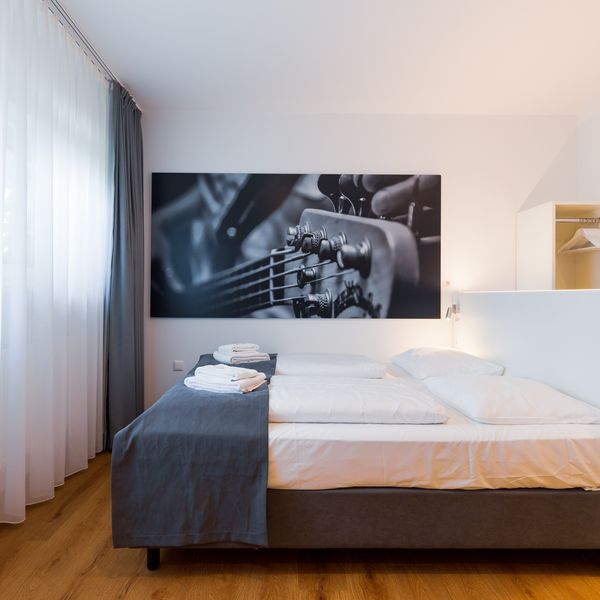
4 p.m.: Tour the city’s biergartens and Bavarian buildings
With only one evening in Munich, we set out to experience the best the city has to offer: beer and historic buildings. Our first stop was Biergarten am Muffatwerk ( Zellstraße 4, 81667 ), a leafy, certified organic beer garden abutting the Isar. Many locals arrived straight from a swim, towels and all, to drink a pint in a cabana chair. We ordered two half-liter pours of Lammsbräu Urstoff, a Bavarian lager, and ate olives with feta, sauerkraut, a pretzel, and a sausage (I’m a vegetarian, though I toe the flexitarian line on vacation). Next was a stroll through the old town, including a stop to admire the Hofgarten , a Renaissance-style garden on former Bavarian palace grounds, and Gothic municipal buildings at the Marienplatz (a city-center square). The night ended at Hofbräukeller ( Innere Wiener Straße 19, 81667 ), a gigantic beer garden where we drank more beer (you can’t buy anything less than a liter in the evening) and tried obatzda , a Bavarian cheese dip reminiscent of pimento cheese. Five miles and five hours later, we fell fast asleep.
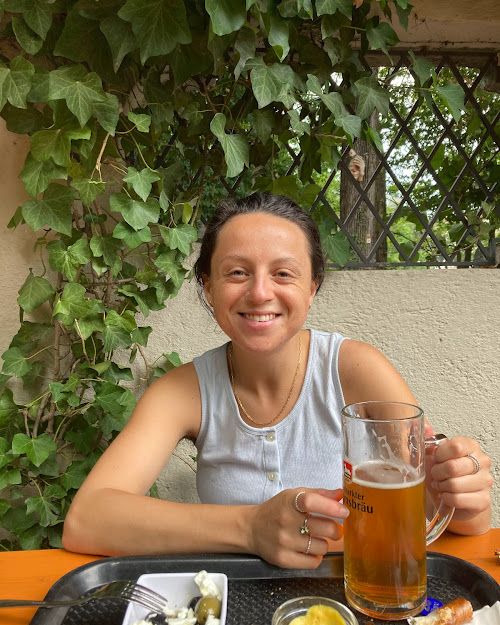
10 a.m.: Visit Dachau Memorial Site
After a slow morning people-watching and nibbling on pastries at Café Am Max-Weber-Platz ( Max-Weber-Platz 11, 81675 ), we took a 45-minute train to the Dachau concentration camp Memorial Site ( Alte Römerstraße 75, 85221 ). As a Jewish person who had never been to Europe before, it was important to me to bear witness to the legacy of the Holocaust. The Dachau Memorial Site is free and spans the grounds of the former concentration camp. Audio guides and group tours are available for under $5, and a comprehensive 40-minute English documentary plays three times per day. We opted to see the documentary at 11:45 a.m. and spent about an hour walking through the educational exhibits and religious memorials. I found the visit to be equal parts informative and emotional.
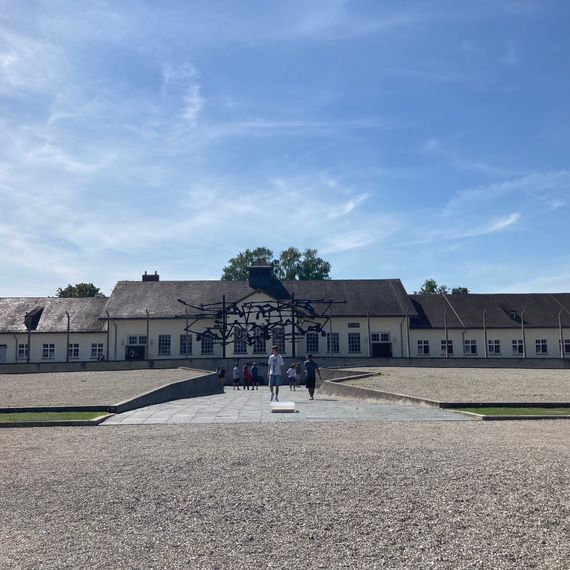
2 p.m.: Picnic on the Isar
Once back in the city, we picked up a döner kebab , falafel salad in a box, and spinach hand pie from a casual Turkish spot and walked ten minutes to eat on the bank of the Isar. The water near us was only calf-deep, but parts of the Isar are popular for swimming and surfing, though not for the faint of heart: The river is only 60-something degrees during the height of summer, and there are powerful currents. After lunch, we waded in to cool off. Before heading to the train station, we stopped at Aldi to stock up on snacks for the hike, including a regional blend of Haribo gummies and lots of sandwich materials. Keep in mind, though, that you have to pack out all of your trash.
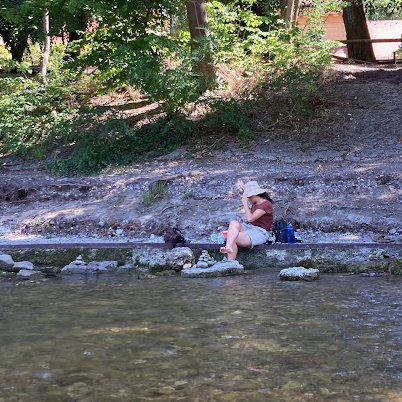
5 p.m.: Take a train to Innsbruck and get Indian food for dinner
We arrived in Innsbruck at 6:30 p.m., the perfect time to drop our backpacks at the (clean and conveniently located) Pension Stoi Guesthouse ( Salurnerstraße 7, 6020 ) and see the city in the final bit of daylight. Innsbruck is exactly how I imagine Aspen, Colorado, to be. A popular destination for Italian and German tourists, the city (which is the capital of Austria’s western state of Tyrol and the site of Swarovski’s headquarters) is riddled with upscale boutiques and ski resorts all set to the striking backdrop of the Alps.
After walking through the historic Altstadt neighborhood to marvel at a 15th-century gilded roof and baroque houses turned boutiques, we crossed a bridge into the quieter (and cheaper) Mariahilf-St. Nikolaus district for dinner. Knowing we’d be eating Tyrolean food for the next five days, we shared baingan bharta and palak paneer at Rama Indian Restaurant ( Innstraße 81, 6020) . It was carb-heavy and salty — an ideal pre-hike meal.
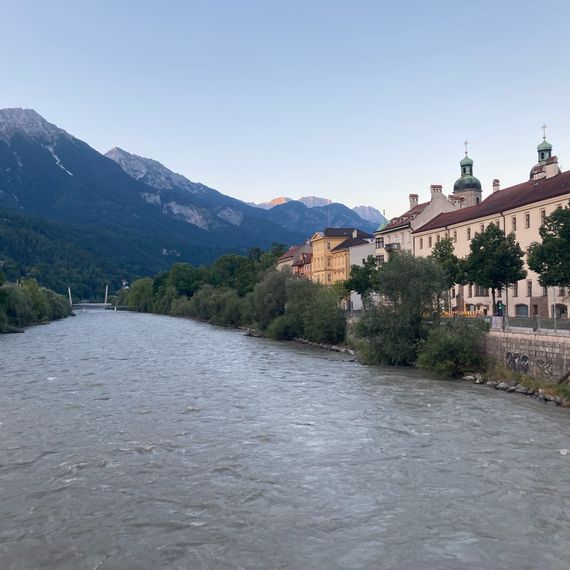
11 a.m.: Hike into the Pforzheimer Hut
From Innsbruck, it’s a 45-minute ride on the 4166 bus to Saint Sigmund im Sellrain, a small village in the heart of the Sellrain valley where our hike began. The bus leaves at 8 a.m., 9 a.m., and 11 a.m. daily. After eating some pastries and packing up, we caught the 11 a.m. bus (though I’d recommend going earlier to avoid the afternoon heat). The day’s 4.5-mile trek, which follows the Gleirschbach River through a picturesque valley dotted with friendly cows, sheep, and goats, took us five hours (including a lunch break and many stops to pet the livestock). Although technically simple — all but the last half-mile or so is on a gravel fire road — the hike sees 2,600 feet of elevation gain. For context, that’s double the elevation gain of Breakneck Ridge , often considered one of the more challenging routes in the Hudson Valley. All well worth it for the breathtaking views.
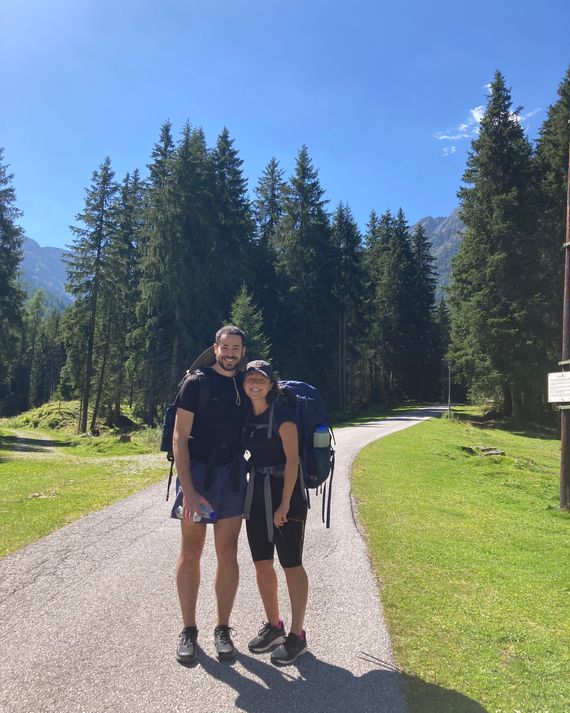
4 p.m.: Get to know other hikers over a beer
Pforzheimer hut is a cozy wood-and-stone structure perched atop a hill right next to the Gleirschbach. For reasons I still can’t quite figure out, the hut has a subtle Buddhist vibe, perhaps the Tibetan prayer flags that hang around the perimeter and an altar on the second floor with a Buddha statue where incense is burned at night set the tone. The communal bathrooms and bedrooms are also on the second floor. On the first floor is the communal dining room and gear room for drying clothes and stashing boots, which cannot be worn inside any hut (they’ll all have slippers for you to borrow). Around the back is an outdoor terrace, where, after a shower, I joined Jack for several beers and a slice of homemade apricot strudel. We chatted with some fellow travelers and got a helpful tip about how to stick to the trail (instead of off-roading as we’d thought necessary) the following day.
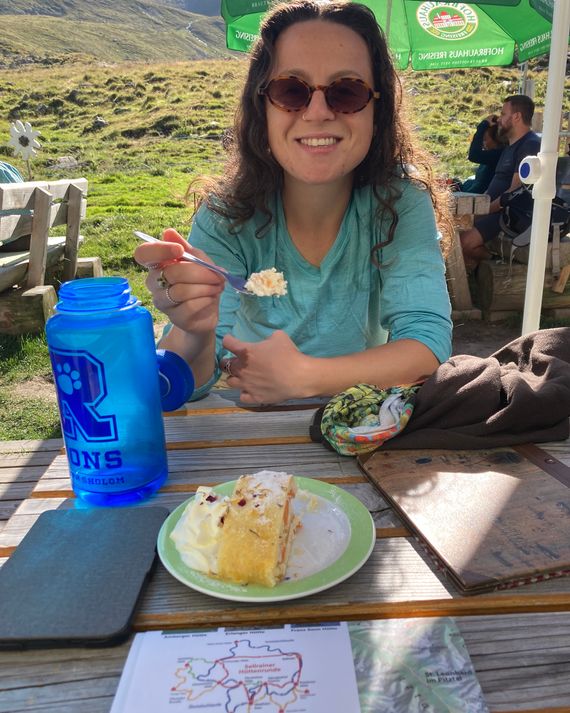
6:30 p.m.: Tuck into a four-course, home-cooked meal
I’m the kind of person who will eat anything while on the trail (I once gleefully chowed down on tuna-jelly-mustard-cheese sandwiches while backpacking). Still, it was the height of luxury to be served a multicourse, home-cooked meal after a long day of hiking. Dinner, which began promptly at assigned tables in the communal dining room, was carrot-ginger soup, salad with fennel and seeds, pasta (meat for Jack and spinach for me), and chocolate quark crème , a yogurt-like German dessert. We paid for our stay in cash before bed (as required at all the huts) and fell asleep by 9 p.m. to the sound of cowbells.
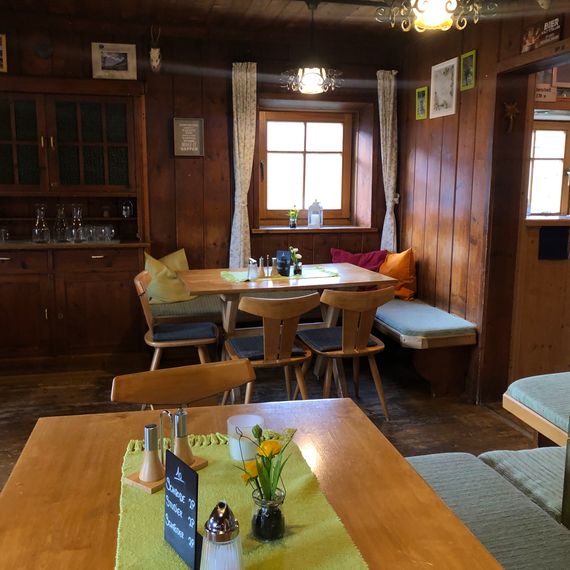
8 a.m.: Trek up the Zischgenscharte pass
After an early wake up (6:30 a.m.) and a fully loaded breakfast buffet of bread, sliced cheese, meat, muesli, yogurt, and spreads, we set out to the second hut of our trip. This hike of just over four miles ended up taking eight hours. The trek took all day for two reasons: (1) As you will see is a pattern, we took our time — stopping to admire the views, pet cows, and eat snacks; (2) the hike was the most difficult of our trip (for me, not Jack).
After descending into the valley and climbing a steep but well-marked dirt-and-gravel path through the Stubai Alps, we hit scree fields (sections of unstable, broken rock), ascending the 10,000-foot Zischgenscharte pass . Here, the trail is only partially marked with cairns, and you have to use ropes and cables on the last two-thirds of the scree field. In Jack’s defense, I made the whole ordeal longer by having a mini breakdown and then leaving my bag partway up the pass, requiring him to go down and grab it. In my defense, the gully is very steep, and it’s hard to hike in scree, especially without proper gear. If I were to do it again, I would wear hiking boots, carry poles, and try to maintain better form (keep your nose above your toes and keep going, as the adage goes) instead of cowering on the rocks. At the top, there’s a striking view of the entire mountain range, and the dirt path down was steep but (mercifully) well-marked.
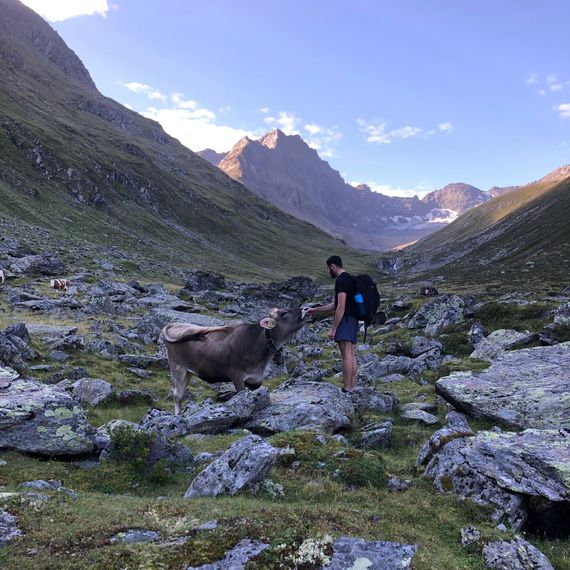
4 p.m.: Toast to your arrival at Westfalenhaus
Descending into the lush valley surrounding the Westfalenhaus hut was a scene straight out of The Sound of Music (and laying eyes on it after our day of hiking had me more excited than the von Trapp children reuniting with Maria). The two-story hut was renovated a couple of years ago and sleeps nearly double the number of guests as at Pforzheimer. All of the communal spaces — the dining hall, outdoor terrace, bathrooms, and gear room — are on the first floor, and the bedrooms are upstairs. Ours had a bunk bed and window overlooking the valley. After settling in, we toasted our arrival with a couple of half-liter pours of hefeweizen (a German wheat beer) on the terrace, which has panoramic views of the Stubai Alps.
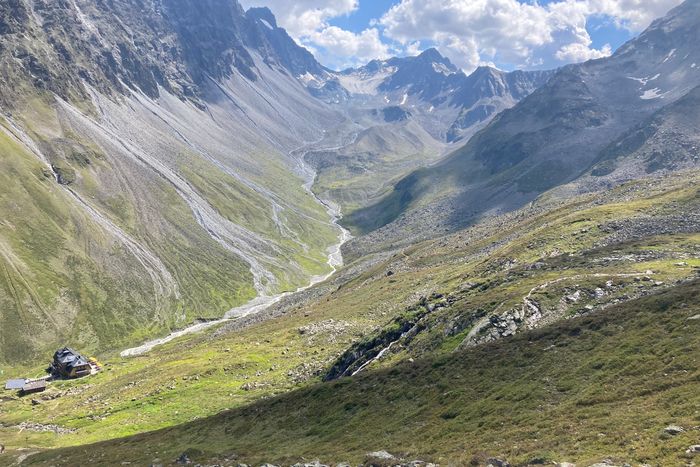
7 p.m.: Dine overlooking the Alps
Here, dinner service was a bit more casual, beginning at 7 p.m. with the option to choose your own seats. We cozied up in wool blankets and ate on the terrace, watching the sunset throughout the valley. The three-course meal consisted of potato soup with big, homemade croutons (my favorite food of the trip), followed by sweet potato curry for me and a pork dish for Jack. Since Westfalenhaus is a more remote hut, it serves fewer fresh vegetables (those that we ate were cooked from frozen), but the food tasted good nonetheless. Also, in an effort to reduce food waste, the portions are small, but you can always ask for seconds. Dessert, a highlight for us both, was Bavarian crème and berries.
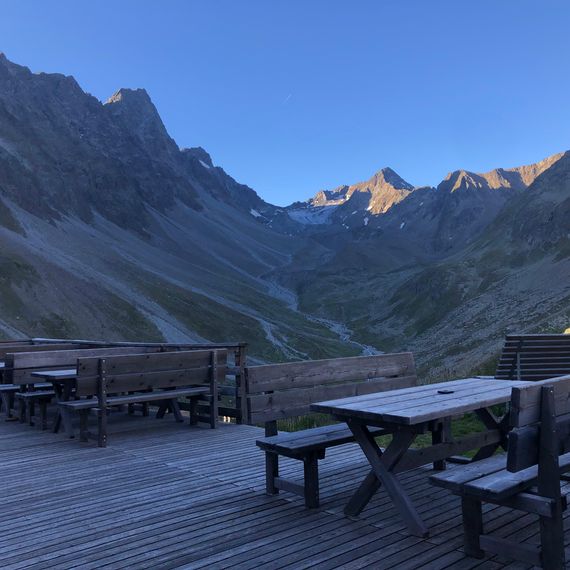
8 a.m.: Scramble up to a waterfall suspension bridge
Another early morning (6:30 a.m.) and breakfast buffet, this one with stand-out mini pretzel rolls in addition to all the typical fixings. We stayed at Westfalenhaus for two nights, so this day’s hike was sans backpacks — and it showed. All told, we covered eight miles and about 3,600 feet of total elevation gain (the most in any one day) in less time than the previous day’s hike. The bulk of that climbing was up to the Hängebrücke Horntal , a recently opened waterfall suspension bridge partway up the towering Lüsener Fernerkogel, known as “the Matterhorn of Tyrol.” Most of the hike was on a well-marked path next to a river, and up the mountainside, but toward the top, you have to scramble up some steep metal ladders and grab onto metal ropes. At the bridge, there are sweeping views of the valley, though I was preoccupied with the intense sound of the waterfall.
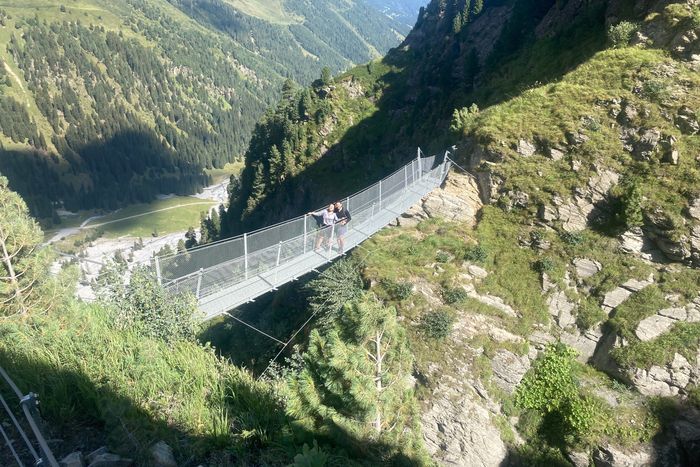
3 p.m.: Reward yourself with apple strudel
The loop back to Westfalenhaus took us through the Lüsener Valley, past educational posters about climate change–induced glacial retreat and many friendly animals. There was also a stretch of trail covered in raspberry bushes (which, after confirmation with an app on Jack’s phone, we ate from). There was plenty of time to hang out at the hut before dinner, so we drank beer, ate a hearty slice of apple strudel, and read on a reclining chair overlooking the valley.
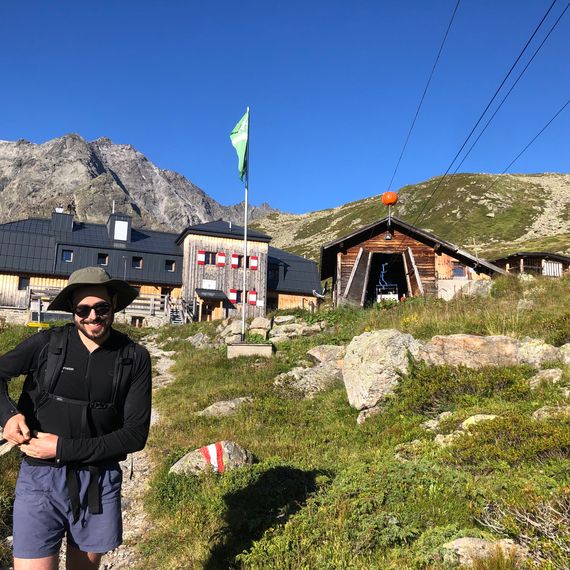
7 p.m.: Play dominoes during dinner
It’s typical for the Alpine huts to have a collection of books and games, seemingly amassed from many countries over the years. Very few were in English, so we opted for dominoes and played over the dinner of pumpkin soup and chicken (for Jack) or gnocchi (for me). Bavarian crème with berries was for dessert once again. Let the record show that I won the match.
10:45 a.m.: Nibble on cake after a hike into Praxmar
After breakfast, we bade farewell ( auf wiedersehen , good-bye!) to Westfalenhaus and set off on a three-hour hike into Praxmar, a small alpine village where we planned to stay the night. The four-mile route was almost entirely downhill and reminiscent of the Pacific Northwest, a welcome respite for these two West Coasters. Upon arrival, it was time for a second breakfast of berry–poppy seed cheesecake and Almdudler , a popular herbal Austrian soda.
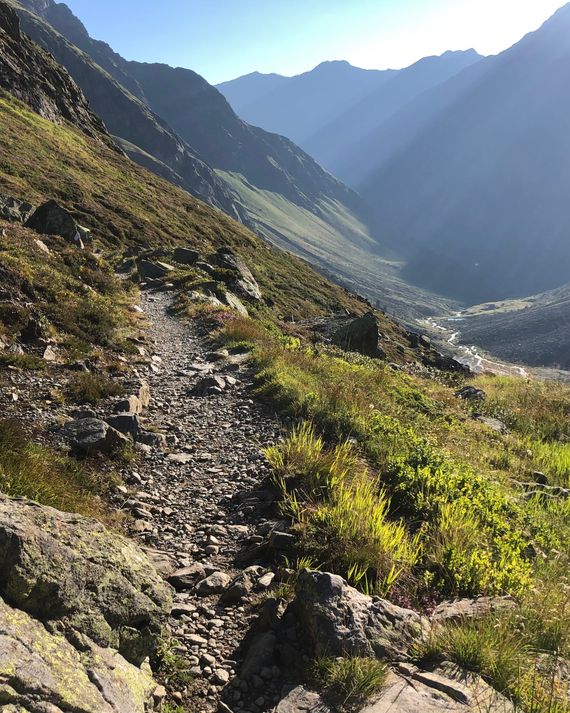
2 p.m.: Take a cold dip in the Bergersee
It was too early to check in to the guesthouse, so we swapped our backpacks for day packs and hiked to the Bergersee, a small alpine lake. Like the morning route, the short (three-mile) hike was mainly forested but this time entirely uphill. Also, the final stretch through the hillside is marked only by cairns, so I’d recommend downloading an offline trail map to steer you in the right direction. We got to the lake in the heat of the day and went for a quick skinny dip. With no one but a herd of goats to see us, I figured it was okay.
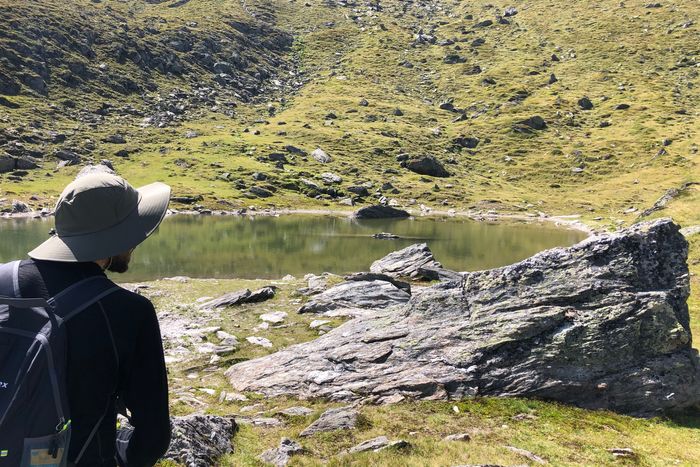
4:30 p.m.: Warm up with a 185-degree Finnish sauna
Not a true Alpine hut, the Alpengasthof Praxmar is accessible by car and bus and boasts traditional, hotel-like amenities — including TVs and towels in the rooms. Jack and I are big fans of a shvitz, so our favorite perk, by far, was the spa. Open daily from 4:30 to 6:30 p.m., the all-gender, clothing-optional spa boasts three different saunas — two dry heat and one infrared — plus a rainfall shower and reclining chairs. The bulk of our time was spent in the 185-degree Finnish sauna, which I single-handedly credit with alleviating my (at this point severe) leg pain.
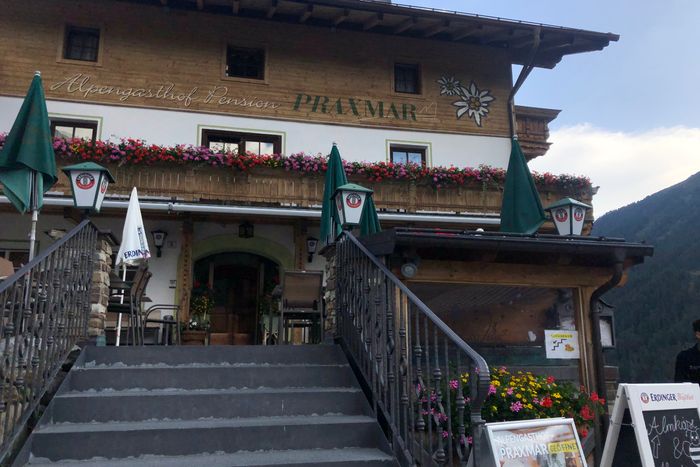
6:30 p.m.: Skip half-board and get the schnitzel
Jack and I each made one food-related mistake on our travels; his was booking half-board at the Praxmar guesthouse (mine comes later). The multicourse meal of boar carpaccio, fish, and veal was served in a white-tablecloth dining room full of taxidermied animals and felt a bit too formal for our taste (though the salad bar was very good). We both agreed that, given the opportunity to do it again, we would have just ordered schnitzel, dumplings, and fries from the à la carte menu.
7 a.m.: Hike to a mountain dairy
Another breakfast buffet, this one the most lavish of the trip, including assorted pastries, several kinds of yogurt, and a substantial spread of fresh fruits and vegetables. The first part of our hike (three almost entirely uphill miles) was to Juifenalm ( Juifen 1, 6181 ), a family-owned mountain dairy that doubles as a restaurant and guesthouse, not uncommon in the Alps. We stopped to drink beer and eat traditional Tyrolean food. The standouts were sauerkraut, a speckknödel dumpling, sausage, and graukase saur, pickled cheese topped with onions, olive oil, and vinegar.
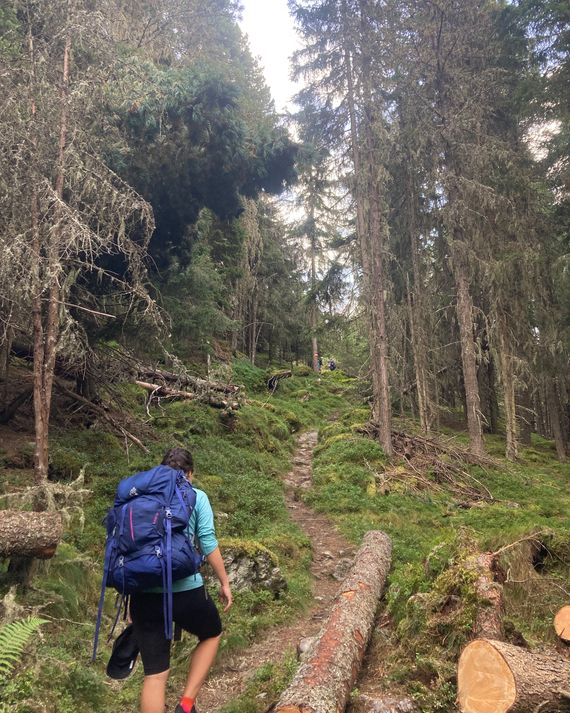
We covered the remaining 4.5 miles, which was almost entirely downhill through gentle fields, in 90 minutes and made it to the village of Gries im Sellrain to catch a 2:20 p.m. bus back to Innsbruck (the bus comes hourly, so if we’d missed it there were other options).
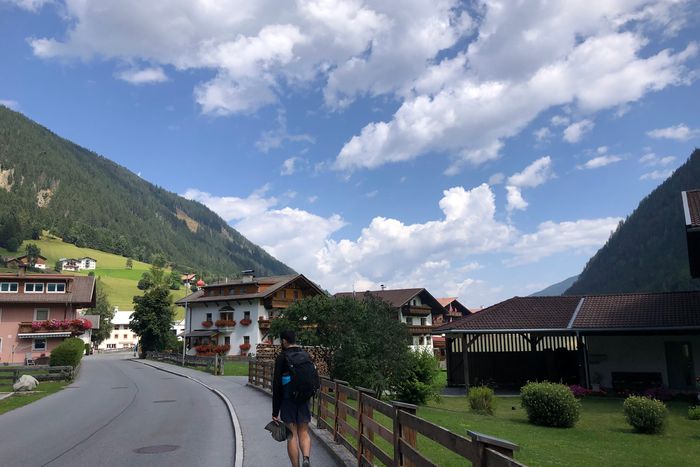
4 p.m.: Shower before the train to Vienna
Back in Innsbruck, I was ready to do whatever it took to shower before getting on a four-hour train ride to Vienna. As it turns out, all I had to do was ask a generous employee at Pension Stoi Guesthouse (where we stayed earlier and stashed a few bags during our hike), who, in response to my ask to use a shower, said, “It looks like you need it.” Jack and I were both nice and clean when we boarded our 6:30 p.m. train to Vienna.
11 p.m.: Snack on a sausage
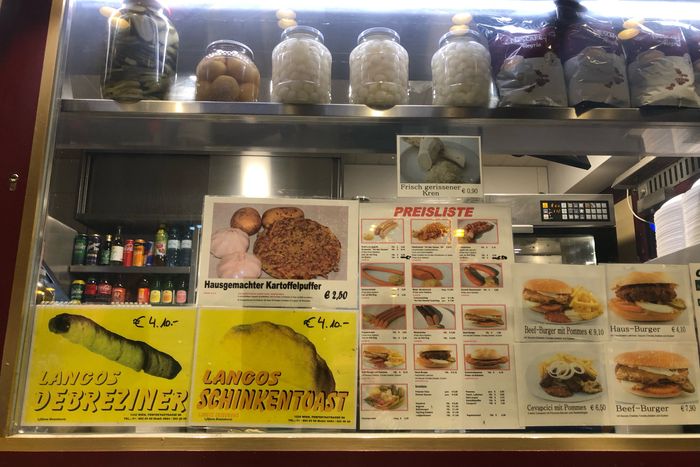
The train got us in late, but Würstelstand am Südtiroler Platz ( Wiedner Gürtel 3, 1040 Wien ), one of Vienna’s ubiquitous to-go sausage stands, was still open. We grabbed a kasekrainer (Austrian cheese-stuffed sausage), kartoffelpuffer (potato pancake), and pickles and walked the five minutes to our Airbnb . Knowing we were getting in so late, we chose this garden unit for its proximity to the central station. It abuts a city park and has all the amenities you’d need for a short stay (though it’s worth noting that the bathroom is in the private entryway hallway, not the apartment itself).
9 a.m.: Discover the city by foot
With only 48 hours in Vienna, we started the day early to take in the city by foot. Most of our morning was spent ambling in and around the Innere Stadt, known for its historic buildings and museums. Entry into these sites is ticketed (often well in advance), so we instead chose to admire the architecture from the outside. At Belvedere Palace Garden ( Prinz Eugen-Straße 27, 1030), we even found a tucked-away Louise Bourgeois Spider statue. It’s important to both of us to connect with our Jewish history when traveling, so we paid for entry to the Jewish Museum ( Dorotheergasse 11, 1010 ). Lunch was falafel at the Naschmarkt , an outdoor market with over 100 stalls. We bought spices and a slice of walnut baklava on our way out.
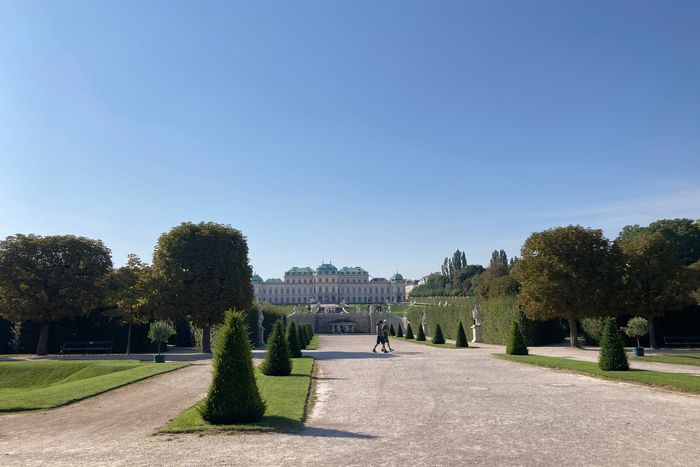
2 p.m.: Read at the Schönbrunn Palace
Another historic site where we made the most of the grounds, these being truly palatial (400 acres in all) and beautifully manicured. After walking through flower gardens and past giant fountains, we settled down in some grass to eat chocolate and read. I felt like a guest at one of the White Lotus palazzos.
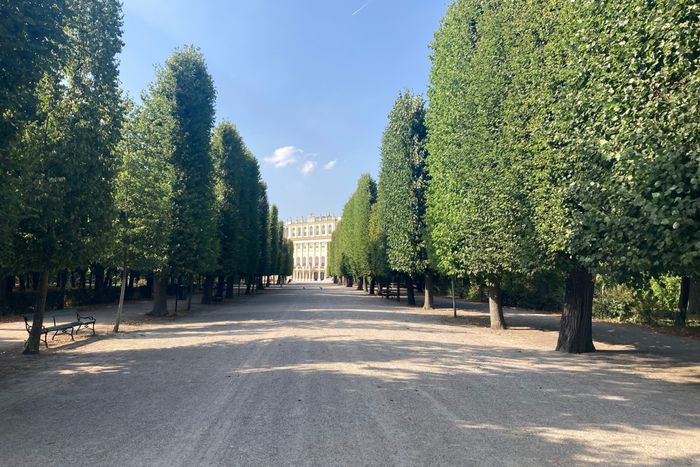
6 p.m.: Dine at a Viennese cafe (but don’t forget to make a reservation)
This is the part of the trip when I made my food mistake. I planned for us to eat dinner at Café Rüdigerhof ( Hamburgerstraße 20, 1050 ), a longtime Austrian cafe known for its schnitzel and cakes. However, I did not make a reservation, and unlike many of New York’s so-called impossible reservations, you actually cannot get seated without one. We managed to drink one beer in the cafe’s backyard and snack on some fries before a party came for their table. After three other unsuccessful attempts to walk into Viennese cafes, we ended up at a below-average Mexican restaurant. Learn from my mistake and call ahead.
10 a.m.: Go thrifting in Leopoldstadt
The second district, known as Leopoldstadt, was gentrified in the early aughts, shifting the once-working-class Jewish ghetto into a trendy neighborhood. It has plenty of cute cafes and street art (plus some kosher restaurants and grocery stores due to the community of religious Jews still living in the area). We went thrifting at a couple of local spots, including Humana ( Taborstraße 20A, 1020 ), which seems to be the Viennese equivalent of Beacon’s Closet. There, I bought a chunky brown cardigan. Our last stop in Leopoldstadt was the Karmelitermarkt, an outdoor market where we grabbed grapes and cucumbers from a produce stall and hefty döner bowls from a to-go spot called Ugis ( Karmelitermarkt 64, 1020 ).
1 p.m.: Lounge on the bank of the Danube
Swimming is popular along the entirety of the Danube, and many stretches are built up with private clubs (where you can pay a few euros for pools and showers) and sandy beaches. We went to Liegewiese am Arbeiterinnenstrand ( Arbeiterstrandbadstraße 89, 1210 ), a free beach on the north side of the river that’s more like a grassy lakefront. The crowd was mostly local families, some of whom made use of the beach’s grills. We spent a couple of hours alternating between swimming, eating, and lounging around.
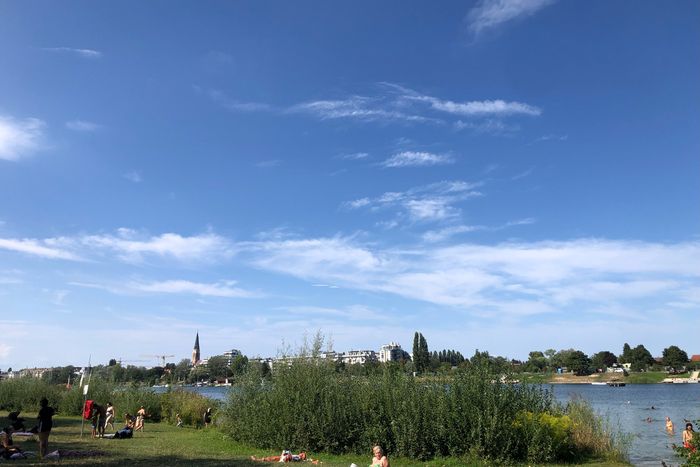
6 p.m.: Head to a winery for a farewell dinner
Within Vienna’s city limits are over two square miles of vineyards dotted with heurigen , wine taverns eponymously named after the “young wine” they serve fresh from the vine. The taverns are concentrated in a few different areas, including Nussdorf, a neighborhood at the end of the D tram about 40 minutes from the city center. At the recommendation of a friend, we went to Heuriger Schübel-Auer ( Kahlenberger Straße 22, 1190) and were seated in the leafy garden without a reservation (though I’d recommend making one on a weekend evening). We ordered a liter of white wine and sparking water, as is customary, and made spritzes to go along with Austrian snack food (cheese, meat, cucumber salad, roasted tomatoes), which is sold by the pound. Part of the appeal of Nussdorf is strolling through the hillside vineyards, but by the time we got around to this, it was more of a drunken amble. Still, we managed to catch sweeping views of the city and drink one more glass of wine — a final Viennese experience before sleeping for a few hours and heading to the airport for an early morning flight.
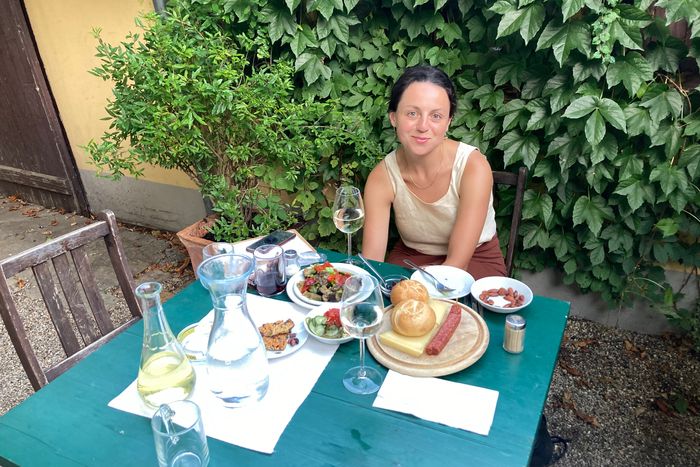
Kayla’s Europe packing list
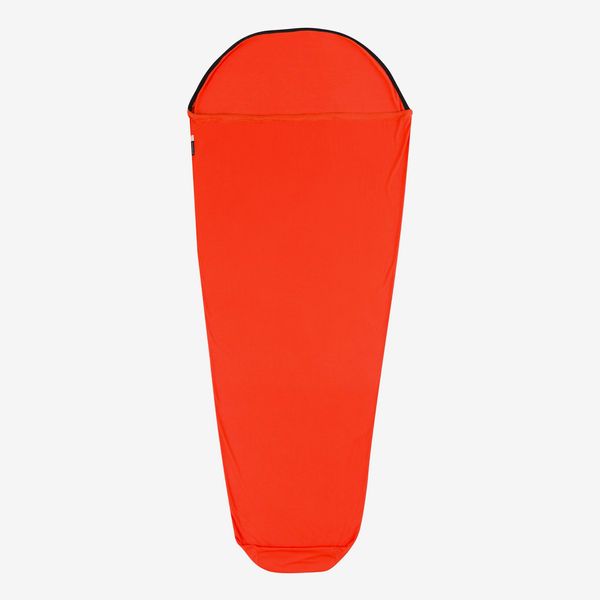
While the huts provide blankets and pillows, this bedding isn’t routinely washed, so guests are required to bring a “hut sleeping bag,” which is basically anything to put under the bedding. This liner, which I’ve used for years on camping trips, keeps you extra warm and weighs less than one pound (since you have to hike with all of your personal belongings, every ounce counts).
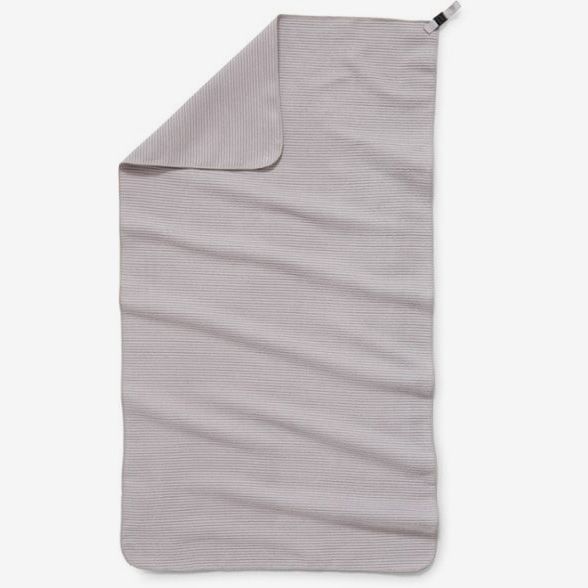
The huts also don’t provide hand or body towels. I got this one in college, and it’s held up on beach days and backpacking trips alike, but any microfiber, packable towel will do (though, if you want to splurge, Nomadix has some actually nice-looking, Dusen Dusen–esque prints).
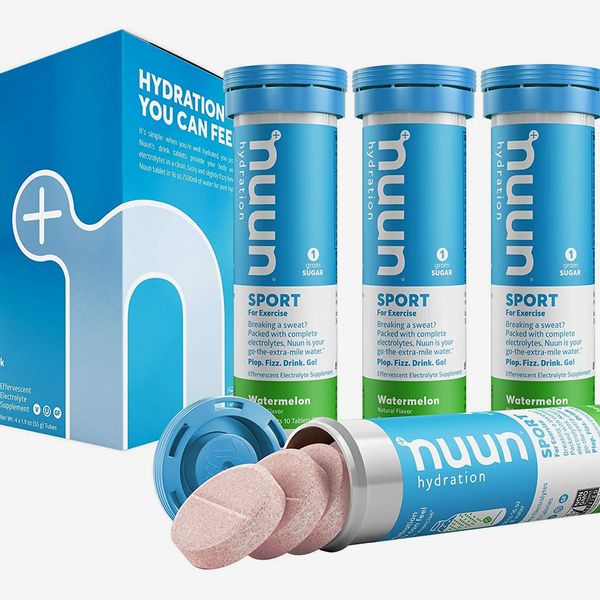
My first water bottle of the day was always filled with one of these tablets for extra hydration and energy. My other toiletry bag must-haves were Aleve, deodorant, and sunscreen.
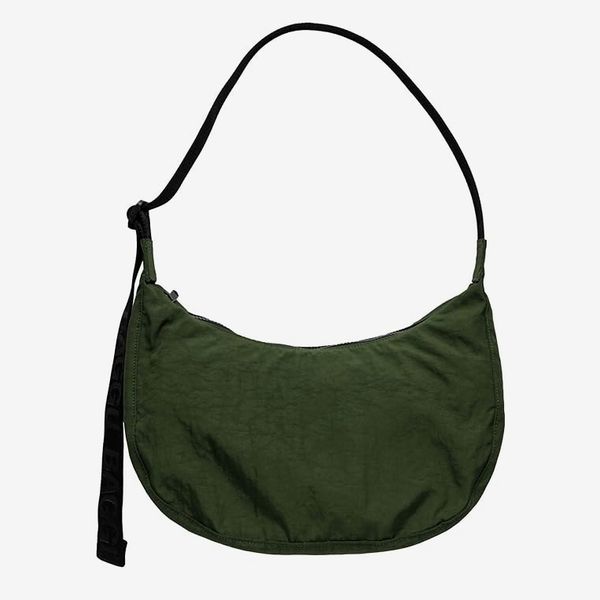
For the days when you’re walking around a city and need something to put a water bottle, book, disposable camera, and extra layer in. My go-to day bag is a small, vintage backpack from my mom, and Jack’s is a crossbody from a defunct California-based outdoor brand, but this bag (which I’ve coveted for a while) comes highly recommended by other travelers . If you plan to stash items in a hotel while on the trail, I’d also suggest bringing an ultralight tote or duffel (ours is from Osprey ).

An honorary mention from Jack, who is an extremely minimalist packer but doesn’t travel without this e-reader (my best birthday gift to him yet). We did have a lot of downtime to read (and no Wi-Fi or cell service), so this came in handy. I downloaded and read two full books on my phone but know that’s not everybody’s cup of tea.
Kayla’s Europe Wish List
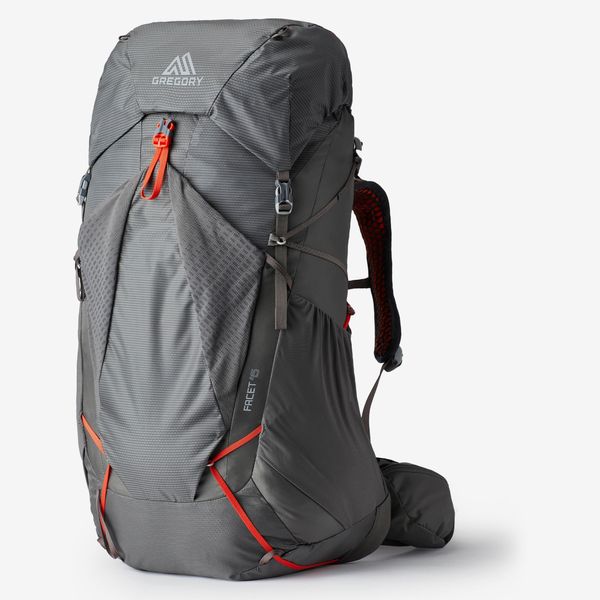
I’ve had the same Deva 60-liter capacity backpack for nearly a decade and can’t say enough good things about it (almost every part of the pack is adjustable, even to my 5-foot-2 frame, and the hip belt is padded). Unsurprisingly, it held up well on this trip, but if I were to do it again (and money was no object), I would spring for a smaller pack. Sixty liters is great for carrying a full load of backpacking gear, but something like this Facet 45-liter pack (which seems to have a lot of the same features as my bag) would suffice for hut-to-hut hiking. Jack was pleased with how his REI 40-liter pack held up, but I don’t like how much weight it puts on your shoulders.
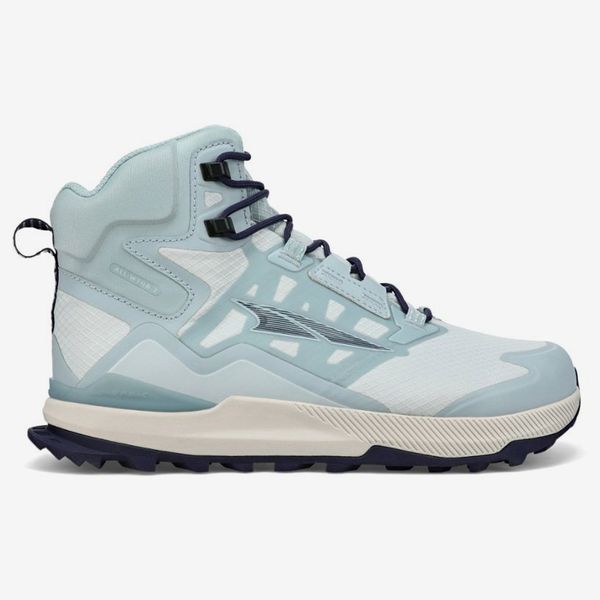
While I stand by my New Balance running shoes for almost all activities (I ran the New York City Marathon in them, for instance), I wouldn’t recommend them for alpine hiking. To put it simply, they lack sufficient traction and ankle support. At the very least, I’d recommend a pair of trail runners. Jack, for instance, wore the Saucony Peregrine 12 without complaint (though he has since mentioned the waterproof version may be better). If I had my pick, I’d choose a pair with more ankle support, like these expert-recommended boots from trail running brand Altra.
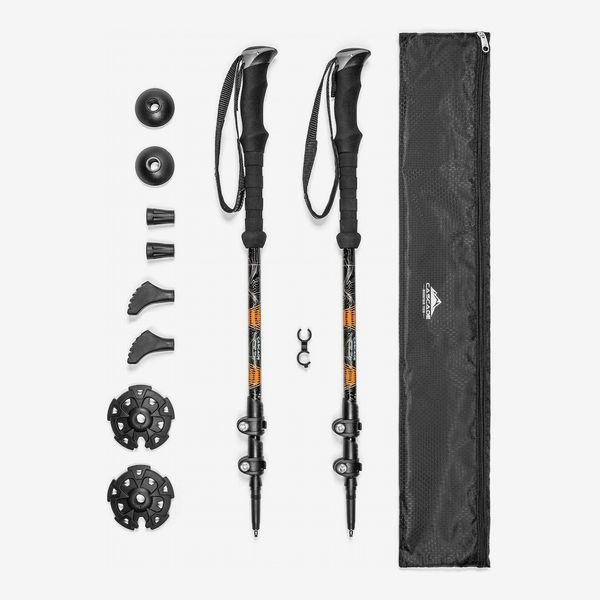
I read a lot of Reddit forums and blogs before this trip, and many suggested that hiking poles were not essential for hiking in the Alps. Let me tell you once and for all: If you are doing any alpine routes, you need a pair of hiking poles. As a beginner, I’d start off with a budget-friendly ( but vetted ) pair like these. Keep in mind that hiking poles are technically not allowed in a carry-on (though, if you believe what you read on Reddit, this rule is not always enforced).
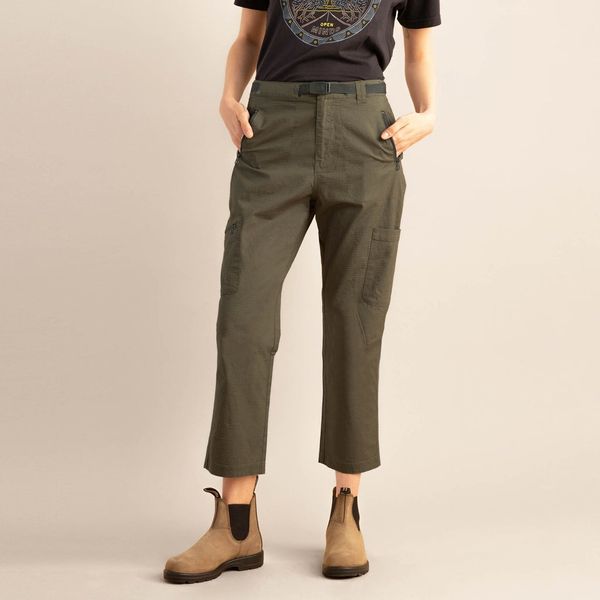
My Athleta leggings got the job done on the trail, but they aren’t a substitute for a pair of hiking pants. I genuinely love the look of this pair from Roark, which has several pockets and a built-in adjustable belt. For a more size-inclusive option, I recommend a cargo or pull-on version from Alder, where I’ve bought durable athletic gear before.
The Strategist is designed to surface the most useful, expert recommendations for things to buy across the vast e-commerce landscape. Some of our latest conquests include the best acne treatments , rolling luggage , pillows for side sleepers , natural anxiety remedies , and bath towels . We update links when possible, but note that deals can expire and all prices are subject to change.
- the strategist
- steal my vacation
Every product is independently selected by (obsessive) editors. Things you buy through our links may earn us a commission.
Deal of the Day
Micro sales, greatest hits, most viewed stories.
- Every Question You Have About Temu, Answered
- 28 Things on Sale That Would Make Excellent Mother’s Day Gifts
- What Adam Scott (Still) Can’t Live Without
- All of the Best Mother’s Day Gift Ideas
- 43 Last-Minute Gifts That Will Arrive by Mother’s Day
Today’s Top Clicked

The Austrian Alps: 7 Best Places That Adventurers Will Love
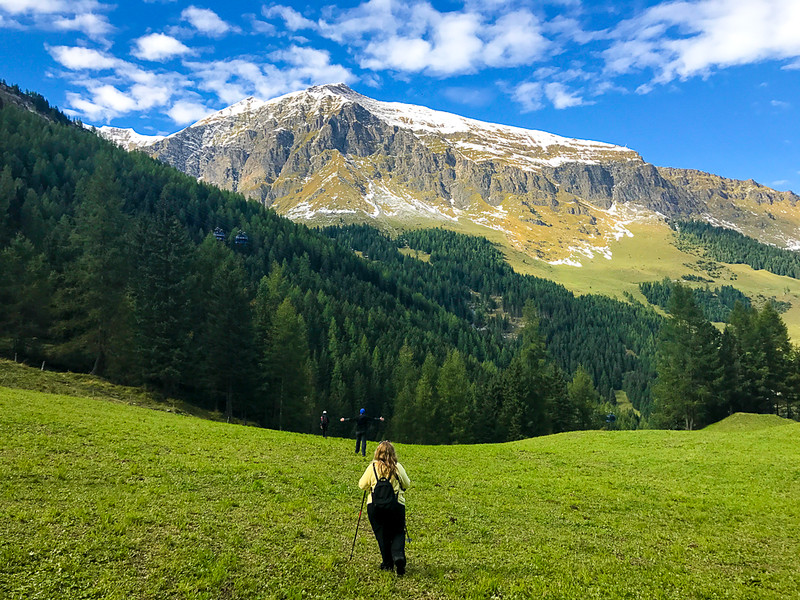
Austria is one of the most exciting places I have visited and the Austrian Alps are just as much adventure as relaxation.
Table of Contents
The Austrian Alps have a variety of adventures that will keep you occupied during summer and winter. I visited a few different destinations in the Austrian Alps and I loved all of them. Here are some of the best places to visit that you’ll love.
The Start of your Austrian Alps Trip
Ideally, you’ll have plenty of time to visit these seven magnificent places and be amazed by the wonders you’ll encounter.
Fortunately, distances in Austria aren’t particularly long so you can drive around the country, and it won’t take you more than six hours to go from Nassfeld to Schruns for example.
If you plan in advance and visit all these places in order, you won’t be driving for more than two hours each day.

Wherever you choose to start from, you will be sure to have a great Austrian alps trip. If you don’t have a vehicle of your own don’t worry. You can easily rent a car from most major cities and airports to visit these magnificent Austrian Alps.
CHECK AVAILABILITY
Nassfeld, Austria
The Nassfeld is well known as a ski resort in Kårnten (Carinthia in English), Austria’s most southern state.
It’s near the Italian border. With 110 km of ski areas, 1000km of hiking trails and 950km of cycling trails, it is an adventurer’s paradise.

Many of the trails are reached from the Milleniumsbahn, a gondola that whisks you up high into the Austrian mountains so that you already have amazing views from the start of your hike.
Austria Travel Tip: Stay at the Falkensteiner Hotel & Spa Carinzia you will receive a +Card which gives you a free gondola ride.
Make sure to try the Summer Rodelbahn, which is, in essence, a summer sled. In this case, it’s a 2 km track where you can reach speeds of up to 40km/hr!
There are a couple of different options and courses depending on your abilities. And there’s even a course designed for kids, so it’s very family-friendly.
Related Reading: Best Hiking Underwear: Top Picks for Wool, Moisture-Wicking and Antichafing
Where to Stay Near Nassfeld
Top Pick: Hotel & Spa Belibergerhof
A good option is the Hotel & Spa Belibergerhof in Bad Bleiberg, located ~30 minutes away from the Nassfeld Ski Area. This wellness hotel offers a spa, sauna and wellness area. It’s surrounded by a beautiful natural landscape.
Each guest room offers guests a mixture of traditional and modern decor. There is a daily breakfast buffet that caters to specific dietary needs such as gluten intolerance.
There are 2 fantastic restaurants to choose from and the hotel itself offers a wonderfully cozy ambience making guests feel at home and relaxed. Each room offers wonderful views of the Austrian mountains from the balcony.
Top Pick: Der Tröpolacherhof Hotel & Restaurant
Der Tröpolacherhof Hotel & Restaurant is located in the heart of Tröpolach just 300m from the Millenium Express Cable Car. Guests can enjoy the on-site sauna, steam bath and infrared cabin.
The guest rooms are spacious and come equipped with a balcony. Bathrobes are included in the private bathrooms. There’s an onsite restaurant that serves traditional Carinthian cuisine.
Guests can use the billiards table, table tennis and wi-fi in public areas. Bicycles are provided to guests free of charge.
Recommended Reading: Tour du Mont Blanc: The Best Way to Plan Your Epic Trek!
Grossarl
Grossarl is located just 86 km south of Salzburg or 205 km if you’re coming from Munich. It’s a perfect weekend getaway in the Austrian Alps.
It’s the ultimate travel destination if you’re seeking active relaxation – my favorite type of relaxation. It offers a mix of activities, in this case, hiking, but with spa time and time to relax as well.
We visited Grossarl in mid-September. Fall is a fantastic time to visit.
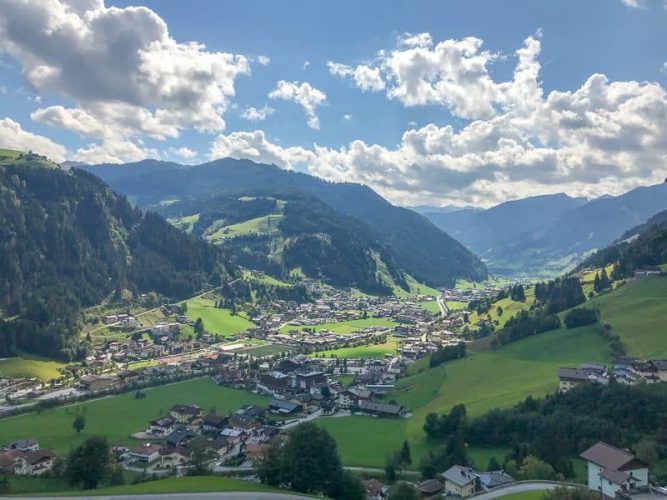
Grossarl offers an incredible 400 km of signposted hiking trails, many leading to one of the 40 or so mountain huts.
We tried a few different hikes including the Shuhflicker which is a ridge walk that culminates in an Alpine mountain peak with panoramic views. We also hiked to the Saukarkopf, one of the most beloved mountains in Grossarl.
Where to Stay When You Go to Grossarl
Top Pick: Berg-Leben Grossarl Hotel
The recently extended Berg-Leben Grossarl Hotel is located in the center of Grossarl and features a large top-floor spa area. It is conveniently located near the cable car and offers elegant rooms.
The rustic decor of the property adds to its charm and each room comes with bathrobes and slippers. Guests can make use of the spa facilities during their free time, which include a Finnish sauna, a steam room (sauna) and a hay bath. You can enjoy wonderful views of the Austrian Alps from the terrace.
Top Pick: Hotel Roslehen
The Hotel Roslehen is located in a quiet location in the center of Grossarl. The south-facing sun terrace offers guests perfect views of the mountains.
Guests can relax and enjoy the spacious Rosen Spa which includes a steam bath, Finnish sauna, infrared cabin and herbal sauna.
The Rosen Spa is unique and offers guests a rose garden and relaxation rooms with waterbeds. Massage treatments are also available. Bathrobes are provided free of charge.
Most rooms have a balcony. Breakfast is served daily and includes organic products. The property also offers a playroom, playground and petting zoo for children to enjoy. Free parking is also available.
Schruns: Snowshoeing in the Austrian Alps
I found out about Schruns, in the Austrian Alps by accident. I was itching to get in a weekend of snowshoeing but really didn’t know where to go that was reasonably close to Stuttgart, my home base.
Schruns is a small village of 3800 people in Vorarlberg in western Austria. It’s surrounded by mountains and lies 500 km west of Vienna and ~250km south of Stuttgart. You’ll need a car to get around easily.
Snowshoeing is not very popular in Europe, but luckily Schruns has a good selection of snowshoe trails and “winterwanderrouten” ( winter hiking trails).
The lady at the tourist office was good enough to recommend two snowshoeing trails. You should also be advised that the hiking trails are only accessible with snowshoes.
Austria Travel Tip: If you’re looking for good routes to snowshoe or take part in other winter activities, ask the locals. I have discovered some best spots this way.
We did the Bartholomäberg region, just a few kilometres from Schruns. A good portion of the hike takes you past cottages and across roads.
Austria Travel Tip: Always make sure to have some food in case the mountain hut is closed which happens during off-seasons.
The next day, we found ourselves at the Silbertal Ski Area, just a short drive from Schruns. Our chosen trail started at the bottom of a downhill ski run. We cautiously trekked up the side of the trail.
The first viewpoint overlooked the mountain and had a small valley before leading up another mountain range. Spectacular! At one portion of the trail, we had to wade through knee-deep snow as there was no path.

Where to Stay When You Go to Schruns
Top Pick: Haus Stüttler/Duchscherer
Haus Stüttler/Duchscherer is located in Schruns and offers accommodation with a garden and free Wifi. The rooms are well furnished and offer comfort and charm.
Some units have balconies with a wonderful Austrian Mountain View. Guests can choose between rooms with private bathrooms or shared bathrooms. The property also offers parking with no extra cost.
Top Pick: Hotel Auhof
Hotel Auhof provides guests with comfortable accommodation and a spa area. The property also has its own on-site restaurant for your convenience.
Each unit comes with a TV and a bathroom with a shower and the apartments come equipped with a seating area and a kitchenette that includes a dishwasher.
The spa offers guests a Finnish sauna, a bio sauna and a steam bath and guests can request massages. Guests can relax in front of the fireplace in the common lounge and free Wi-Fi is provided in public areas.
Know Before You Go Snowshoeing in The Austrian Alps
- Due to its relatively low elevation, it’s a good idea to check the Snow Report before you go.
- For more info, see the Montafon Tourist Info Site.
- You can pick up the free “Aktivkarte Winter” in English, “Winter Activities Map”. The map is only available in German.
- It’s useful and relatively easy to use even if you don’t speak German. You may also get lucky as we did with the tourism information lady being a skier.
Stuiben Waterfall
Fortunately, Stuiben Waterfall was near the Aqua Dome where we were staying. They were even kind enough to arrange our own private guide to visit it. The hiking path up the waterfall is incredibly well designed.
There are several viewing platforms along the way, providing the best vantage points of the waterfall. Hiking to the top of the waterfall was just a short walk which only takes less than an hour and puts you just over 300m elevation gain on a gradual path.
Just past the waterfall, there’s the Stuiben Restaurant which makes a great rest stop if you’ve worked up an appetite after your walking tour.

The more adventurous can even climb up Stuiben Falls. Not only do you climb up alongside the 150m waterfall, but you actually cross it near the top on a wire cable. This looks like pure adrenalin!
Where to Stay When You Go to Stuiben Waterfall
Top Pick: Gasthof Leiter’s Hoatmatl
Gasthof Leiter’s Hoatmatl in Umhausen is the perfect place to get a full immersion in nature with a great view of the mountains. Guests can enjoy the onsite restaurant, free private parking and a garden to relax in.
The property offers guests free access to the sauna as well as free wifi throughout the property. Each room comes equipped with a closet, desk and private bathroom.
Top Pick: Aqua Dome
Aqua Dome in Längenfeld is a beautiful hotel to relax and enjoy a huge Spa area. With stunning views of the mountains and a selection of thermal baths, the hotel is the perfect wellness getaway.
There are several restaurants to choose from as well as a lounge and bar which are warmed by fireplaces. Read more about my stay here . I LOVE the Aqua Dome and highly recommend it.
Plan to be there on a Friday so that you can enjoy the unique outdoor pools that are lit up each Friday night.
Know Before You Visit Stuiben Waterfall:
- We visited Stuiben Waterfall with a guide, but it’s very well-marked, so it’s easy to visit on your own.
- We also stopped by the Archaeological Open-Air Park, which is en route to the waterfall. The open-air museum shows what life was like in prehistoric times. It’s more suited to children than to adults.
- The climb up Stuiben Waterfall is considered easy in that it’s not technical, so if you are familiar with Klettersteig (climbing along ropes while in a harness) you could do this on your own. If not, you can arrange a guided tour in Umhausen.
- Austria Travel tip: Most stores are closed on Sundays. We tried to find a place to rent climbing harnesses on Sunday morning, but they were all closed, so get your gear on Saturday.
- There are so many great hikes in the Ötztal that you should stay for several days.
- If you like waterfalls, also be sure to check out Krimml Waterfall – it’s Austria’s highest waterfall!
A Special Hiking Tour in The Austrian Alps

MoaAlm is a holiday concept where adventures are shared, and new friends are made. You will arrive as guests, but you’ll leave as friends is the promise on their website. After spending a couple of days with Barbara and Hubert, I can vouch that this is true!
MoaAlm is one of two WearActive homes – a small company that offers ‘Relaxingly Active’ holidays in Hohe Tauern National Park, Austria and on the Croatian Island of Vis.
You engage in activities tailored to you and to your adventure level. In the summer months, this includes hiking, mountain biking, rafting, and rock climbing to name a few. In winter, guests can choose between downhill and cross-country skiing, snowshoeing, winter hiking and sledding in this alpine region.
We did several easy trails including hiking to the Dorfertal Valley and enjoyed several trips into the Hohe Tauern National Park and got in some views of the Grossglockner, Austria’s highest mountain peak. During these hikes, I also had the opportunity to enjoy the beautiful alpine pastures that litter the Austrian Alpine mountains.

Know Before Your Adventure in the Austrian Alps Begins:
- The nearest train station is in Lienz, about 30 minutes away. They will pick you up from there.
- Notify them of food allergies in advance. I have gluten allergy which was well accommodated, but given how remote MoaAlm is, the chef needs time to prepare.
- Check the MoaAlm website for themed weeks or sign up for their newsletter!
- There are no TVs in the rooms – which I saw as a huge plus!
- You will interact a lot with Barbara, Hubert and the other guests. If you are looking for a solace away from people, or time alone with your sweetheart, you may want to choose a more traditional type hotel where you will have more privacy.
Wilder Kaiser: Summer & Winter Activities
I visited Wilder Kaiser in summer and colder months of winter and I absolutely love it. This is my first option for a weekend getaway. Wilder Kaiser is conveniently located in the Tirolean Alps of Austria between Innsbruck, Munich, and Salzburg.
The Hintersteinsee (Hinterstein Lake) is perfect for swimming and hiking and summer and cross-country skiing in winter.
You can hike or e-bike to Gruberhof. The “Gruberhof” is the home of the “Bergdoktor” (alpine doctor), a popular TV show in Germany. Outside of filming site the farm is called “Köpfing”. If you are feeling ambitious you can continue up to Hohe Salve which I have snowshoed up in winter.
Hike the Asterbergsee. From the Asterbergbahn you can either take a chairlift or hike up to the Astbergsee. It’s a small alpine lake, but the views are stunning. There are a variety of paths you can do depending on how hard of a hike you’re looking for.

Check out Elmmau’s Summer Night. It’s held every Tuesday in the summer. Admission is free. Starting at 6:00 pm the street turns into a car-free pedestrian zone where you can shop traditional crafts. There are live bands playing music of all different types of genres, so you’ll find something to your taste.
In winter, on selected Monday evenings, you’ll find music, mulled wine stands and a festive après-ski atmosphere. Then, at 8:30 local skiers will demonstrate their skills. You can expect synchronized skiing to music and nostalgia skiing. The night ends up with a bang that lights up the night sky with a flurry of fireworks.
I enjoyed alpine skiing at Skiwelt . It is one of the largest and most modern ski resorts in the world. They have some great special events like night skiing. You can even watch the sunset from Skiwelt which I highly recommend.
Visit the ALPENIGLU – Igloo Village . Stop by for a drink, take a tour of the village or if you like to keep things cool, spend the night in the igloo hotel.
You can also try out Moonlight Tobogganing at Söll its really fun and not just for the kids.

Where to Stay When You Go to Wilder Kaiser
Top Pick: Bergpension-Ebental
Bergpension-Ebental offers comfortable accommodation just 1.7km from the Igloo Village. All rooms have a balcony with a view of the gardens as well as an on-site bar. The hotel has ski-to-door access as well as a barbecue area for guests and a daily buffet breakfast.
Top Pick: Gästehaus Hofer
Gästehaus Hofer offers ski to door access as well as a steam bath and a balcony. Apartments come equipped with a kitchen and dishwasher. Ski storage and an infrared room are available at the premises as well as a children’s playground and sun terrace.
Know Before You Go To Wilder Kaiser
- I stayed at the Gasthof Postwir in Söll. I LOVED my stay here
- I’d recommend spending 5 to 7 days at Wilder Kaiser. There’s so much to do, no matter how active you want to be.
- The Wilder Kaiser Guest Card (free when you’re staying in Wilder Kaiser) entitles you to free public transportation between all four villages and to the start of hiking trails.
- The tourism board offers a varied weekly program with 12 activities and guided hikes each week. Most of these are free. Ask for the updated program at the local tourist office.
- There are four villages that comprise Wilder Kaiser; Ellmau , Going , Scheffau and Söll . Ellmau and Söll are the largest of the four villages and the most popular with English-speaking tourists.
- The peak season at SkiWelt is from December to March, but it’s also open pre-season: in early December and post-season from March to April. Check the SkiWelt site for the most up-to-date information .
- Ski at SkiWelt but also get off the slopes to try snowshoeing winter hiking, and tobogganing.
- You can get to Wilder Kaiser from Kufstein with a shuttle. The cost is €15 each way. Details here .
- There are also shuttles to the ski lifts.
Innsbruck, The Austrian Alps
Innsbruck is a perfect place to visit if you are looking for city exploration and outdoor activities all in one.
You can visit the Swarovski Crystal World, which is very artsy and probably not what you will expect – I didn’t love it to be honest. Stroll down Maria-Theresien Strasse and lose yourself in the beautiful architecture and the perfect atmosphere.
You can marvel at the famous Golden Roof and visit the Ambras Castle. Enjoy the views from the Bergisel Ski Jump and take a cable car right up to the highest peak of this Austrian Alps.

Enjoy some of the most beautiful hiking trails in the Austrian Alps and in winter find the most exciting snowshoeing trails that you can think of. Don’t forget to take a ride on the Hungerburg Funicular and to get in some mountain biking. And most importantly make sure to visit a Käserei (cheese shop).
Where to Stay in Innsbruck
Top Pick: Hotel Zach
Hotel Zach is located in a quiet location very close to Innsbruck’s old town. The hotel offers free wifi. Guests can enjoy rooms with bright wooden furniture and a private bathroom.
Enjoy a daily breakfast buffet with fresh fruit and more. Guests can enjoy the fitness room free of charge.
Top Pick: Hotel Innsbruck
Hotel Innsbruck is located at the bank of the Inn River, in the heart of the old town. Guests can enjoy spacious and comfortable rooms with air-conditioning and a minibar.
The hotel offers rooms with accessibility for disabled guests. Guests can enjoy the indoor pool and 2 spa areas.
Know Before You Go To Innsbruck
- Stay at the Hotel Schwarzer Adler, Austria Trend Hotel Congress Innsbruck or Hotel Zach which all have great locations.
- Get a city card or try something adventurous like paragliding.
- Innsbruck is an Austrian town located ~150km south of Munich. It wasn’t really far for us to travel to, around 90 minutes by car.
The Austrian Alps are incredibly beautiful and an amazing destination for hiking, snowshoeing, or skiing. And reward yourself for your efforts in one of the amazing wellness hotels you can find there for a perfect active relaxation vacation.

Leave a Comment Cancel reply

7 Reasons To Explore The Enchanting Austrian Alps
- November 3, 2023
- Jack Baumann
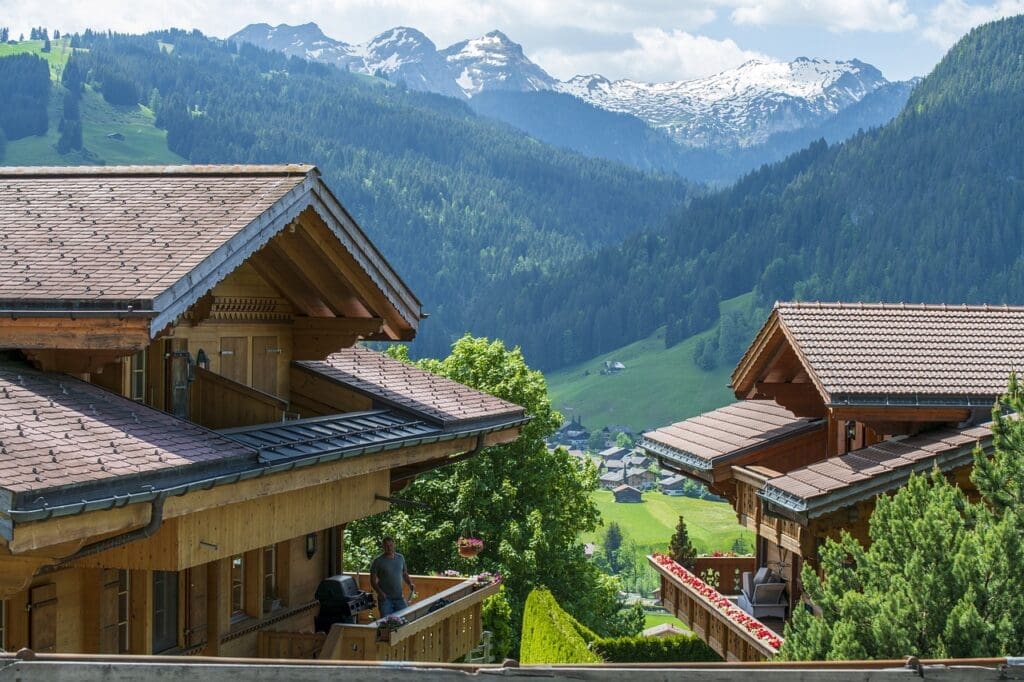
In the heart of Europe, the Austrian Alps stand as an awe-inspiring testament to the beauty of nature. With towering peaks, serene lakes, and charming Alpine villages, the Austrian Alps are a dream destination for adventurers and seekers of picturesque landscapes.
In this article, we will delve into breathtaking landscapes, outdoor adventures, and cultural splendor. Here’s 7 great reasons to visit the Austrian Alps!
The Austrian Alps are a gift to travelers, offering a harmonious blend of natural beauty, exhilarating adventures, and cultural immersion. Whether you are a nature lover, an adventure enthusiast, or a history buff, the Austrian Alps offer a world of discovery.
Embark on a journey to explore this wondrous destination, where every season brings new marvels and memories etched in the heart. The Austrian Alps beckon you to discover their enduring splendor.
1. A Landscape of Majesty
The Austrian Alps are a geological masterpiece, with their snow-capped peaks and rugged terrain. This picturesque landscape is a paradise for photographers, hikers, and anyone who appreciates the splendor of nature.
Throughout the year, the Alps offer a wide range of landscapes, from lush, blooming meadows in spring to pristine winter wonderlands in December.
Grossglockner High Alpine Road: This iconic alpine road takes you on a journey through the Hohe Tauern National Park, offering stunning vistas of Austria’s highest peak, Grossglockner, as well as beautiful alpine meadows and glaciers.
Ötztal Valley: This valley is famed for its dramatic landscapes, including steep-sided mountains, lush alpine meadows, and the Ötztaler Ache river. The Ötztal Alps provide a rugged backdrop for outdoor adventures.
2. Winter Wonderland
Winter in the Austrian Alps is a magical experience. The region is celebrated for its top-notch skiing and snowboarding opportunities. Iconic destinations like Kitzbühel, St. Anton, and Zell am See provide an array of slopes suitable for both beginners and experts.
The Austrian Alps also host cozy winter villages where visitors can relish local cuisine and unwind in thermal spas.
Kitzbühel: Kitzbühel is one of Austria’s most famous ski resorts, known for its challenging slopes and vibrant après-ski scene. It offers a mix of skiing and snowboarding opportunities, along with charming Alpine architecture and a historic town center.
Innsbruck: The capital of Tyrol offers the unique experience of combining urban attractions with easy access to nearby ski resorts. You can enjoy cultural experiences in the city and hit the slopes in the surrounding mountains, such as the Nordkette.
3. Summer Adventures
When summer arrives, the Austrian Alps shed their snowy blankets, revealing an intricate network of lakes, rivers, and hiking trails. From leisurely walks to challenging treks, the Alps cater to all levels of hikers.
Notable trails include the Eagle Walk in Tyrol and the Salzkammergut Lakes region, where you can explore wildflower-strewn meadows and take in stunning panoramas. Also, consider taking a lake cruise past one of the many picturesque Alpine villages.
Salzkammergut Region: Known for its crystal-clear lakes, this region offers opportunities for swimming, sailing, and exploring historic towns like Hallstatt (pictured above) and Bad Ischl. The Dachstein Alps provide a dramatic backdrop for hiking.
Wachau Valley: Known for its picturesque vineyards and charming villages, the Wachau Valley is perfect for leisurely bike rides along the Danube River, as well as wine tastings and cultural explorations.
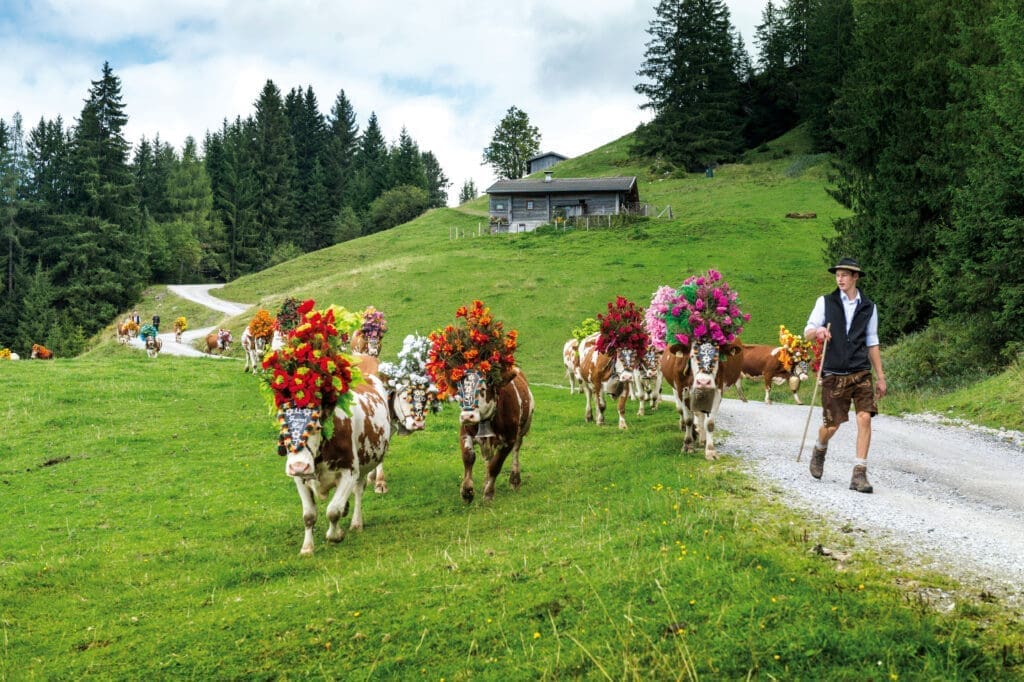
Planning a Trip to Austria?
We can help create your perfect itinerary!
- Worried you'll miss the hidden gems?
- How long should you stay in each place?
- Should you rent a car, train it, or both?
4. Cultural Gems
The Austrian Alps are not just about breathtaking landscapes; they also offer a glimpse into a rich cultural heritage.
Swarovski Crystal Headquarters: (pictured above), is the official home of the Swarovski Crystal makers and one of the coolest exhibits – museums – promotional stores I’ve ever seen. It’s an entire complex you can tour with the most amazing displays, like the largest cut crystal in the world and crystal studded outfits worn by many celebrities over the years.
Innsbruck: The capital of Tyrol, Innsbruck is a cultural hub surrounded by majestic mountains. You can explore the city’s historic Old Town, visit the Imperial Palace, and admire the Golden Roof, a symbol of Innsbruck’s rich history. The city is also known for its museums, including the Tyrolean Folk Art Museum and the Ferdinandeum.
5. Thrilling Adventures
For those seeking an adrenaline rush, the Austrian Alps offer an array of adventure sports. From paragliding over lush valleys to white-water rafting down the Ötztaler Ache river, the options are boundless.
The Alps are a mecca for rock climbing, mountain biking, and canyoning, providing ample excitement for thrill-seekers.
Kaprun: For those seeking high-speed thrills, visit Kaprun’s Kitzsteinhorn Glacier. Here, you can enjoy summer skiing and snowboarding on the glacier or take a ride on the Gipfelwelt 3000, a panoramic platform with breathtaking views.
Zell am See: Paragliding and tandem skydiving are popular adrenaline activities around Lake Zell. Soar above the lake, enjoying stunning views of the water and the surrounding mountains.
6. Gastronomic Treasures
Austrian cuisine is renowned for its hearty and flavorsome dishes. Don’t miss out on trying traditional favorites, ideally paired with local wines or beers. Alpine huts and mountain restaurants create a great ambiance for savoring these culinary delights.
Wiener Schnitzel: Although it’s not exclusive to the Alps, this iconic Austrian dish is a must-try. It consists of a breaded and fried veal or pork cutlet, typically served with a slice of lemon and potato salad.
Kasnocken: These cheesy dumplings are a comforting and hearty dish. Made from spätzle (egg noodles), they are typically mixed with grated cheese and fried onions. Kasnocken are a popular comfort food in the Austrian Alps.
7. Sustainable Tourism
Many hotels and accommodations in Austria have adopted renewable energy sources, implement energy-efficient measures, and reduce water consumption. Austria offers a range of eco-friendly and nature-based activities. Tourists can enjoy activities like hiking, biking, and wildlife observation while respecting the natural environment.
Austria has a robust waste management system, with a strong focus on recycling and waste reduction. Visitors are encouraged to participate in responsible waste disposal practices, such as separating recyclables from general waste.
Austrian cuisine often emphasizes local and organic ingredients. By supporting local and sustainable food production, tourists can contribute to the region’s environmental and economic sustainability.
And That’s A Wrap!
The ultimate pre-travel checklist.
Download ‘ 10 Crucial Things To Do Before Traveling Abroad’ to avoid mistakes and ensure a smooth trip; adapters and electronics, packing tips, foreign currency, phone plans, and more!

Each trip is a unique experience. Guidester personalizes your adventure, guiding you to those breathtaking sites, authentic local eateries, and hidden gems!
Recent Articles
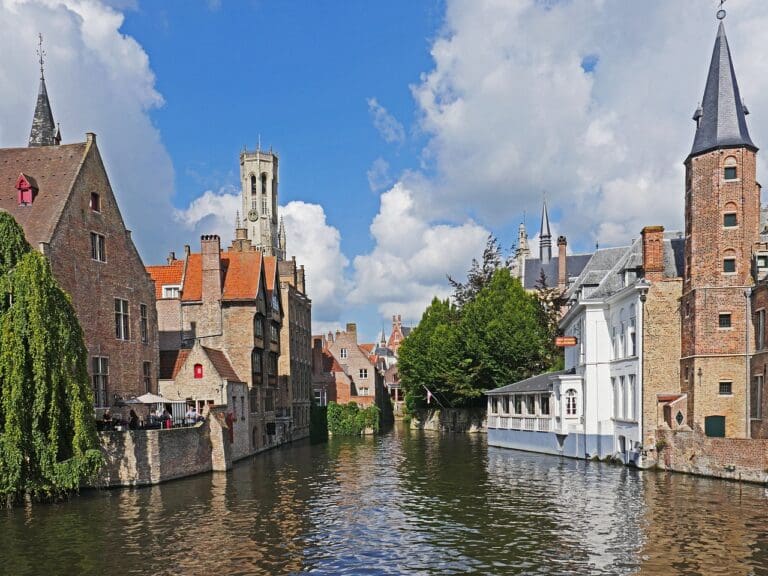
Exploring Bruges: A Journey Through Time and Beauty

European Delights: 10 Must-Try European Dishes
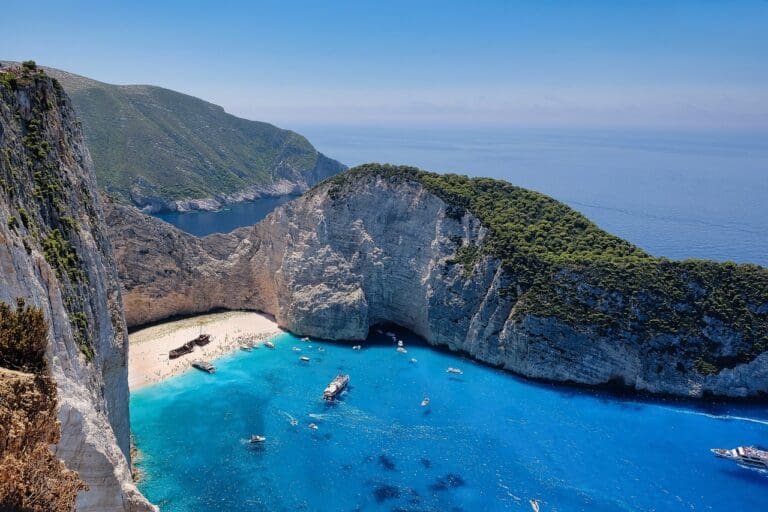

Best Wild Swimming Beaches in Europe

7 Best Places To Visit In Normandy: From D-Day Beaches to Coastal Towns
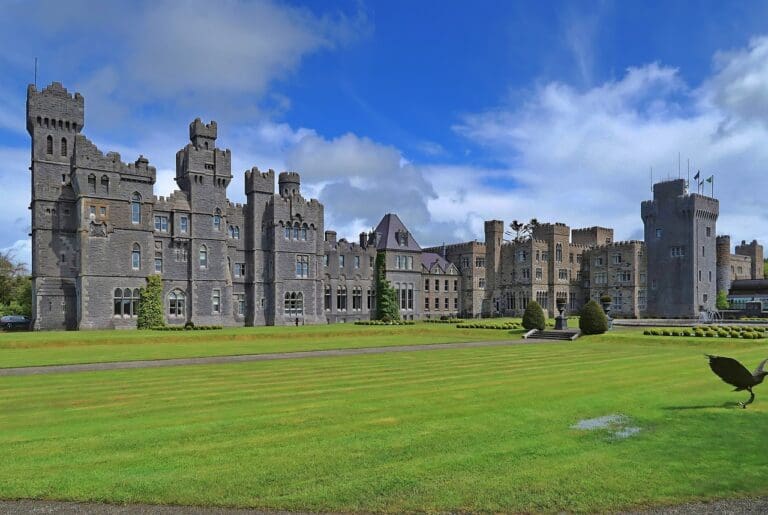
Best Castle Hotels in Europe

Does Europe Have Cicadas? Comparing the 2024 Double Emergence in the USA

Travel tips and unforgettable adventures with Travelin Jack
Popular Posts
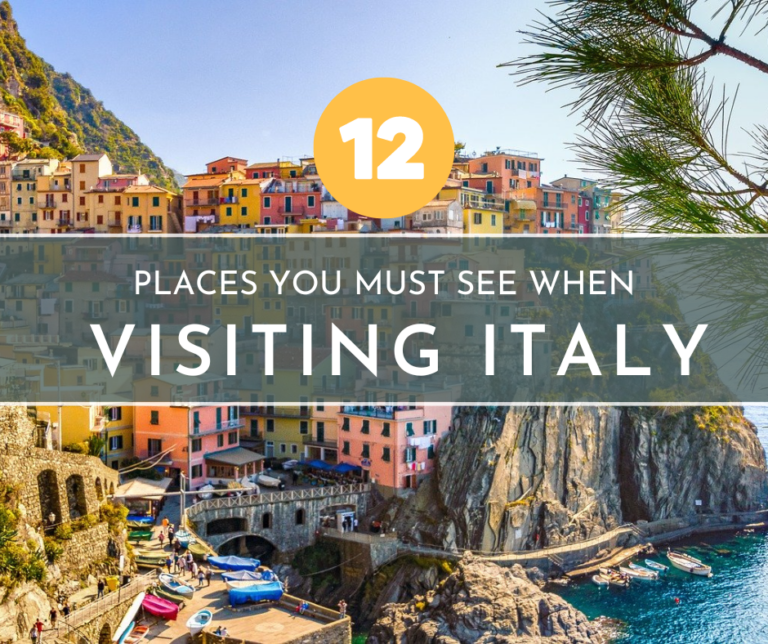
There are many places you must see when visiting Italy, but your personal interests, timeframe, and budget will dictate how

While it is normally easy to acquire or renew a passport, the State Department says there’s about to be a
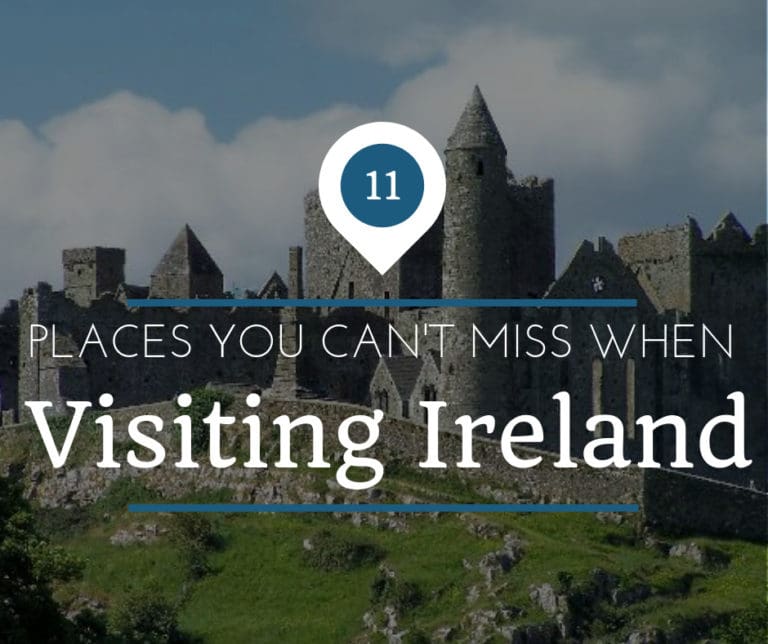
With beauty around every corner, deciding on places to visit in Ireland can prove difficult. In my opinion, it’s all
Recent Posts
Leave a comment cancel reply.
Your email address will not be published. Required fields are marked *
Guide to the Alps in Austria – TOP attractions in Austrian Alps!
Going to the Austrian Alps for skiing or hiking in summer? Learn about top Austrian Alps towns and places to visit on your alpine holiday!
When you think of the Alps , your mind probably wanders to the French or Italian Alps ( the Dolomites ) and their well-known ski destinations. When booking your Alp ski trip, you may not consider Austria . However, the Austrian Alps cover a large proportion of Austria.
Looking for the best things to do in the Austrian Alps?
With so many beautiful landscapes , this comes as no surprise that most Austria’s favourite pastimes of hiking, skiing and snowboarding take place in this beautiful mountain region. From the best places to visit in Austria in summer to the top road trip Austrian Alps – we have covered them all!
So, should you add the Austrian Alps to your travel bucket list ? Read on to find out more! 🙂
Austrian Alps – car hire:
We have rented cars many times during holidays and we always used discovercars.com
Check out our guide to the best car rental companies in Austria or simply explore the options directly on discovercars.com if you need a car during a trip to Österreich.
Pssst… To us, the Austrian Alps are one of the top places to visit in Austria ! 😉
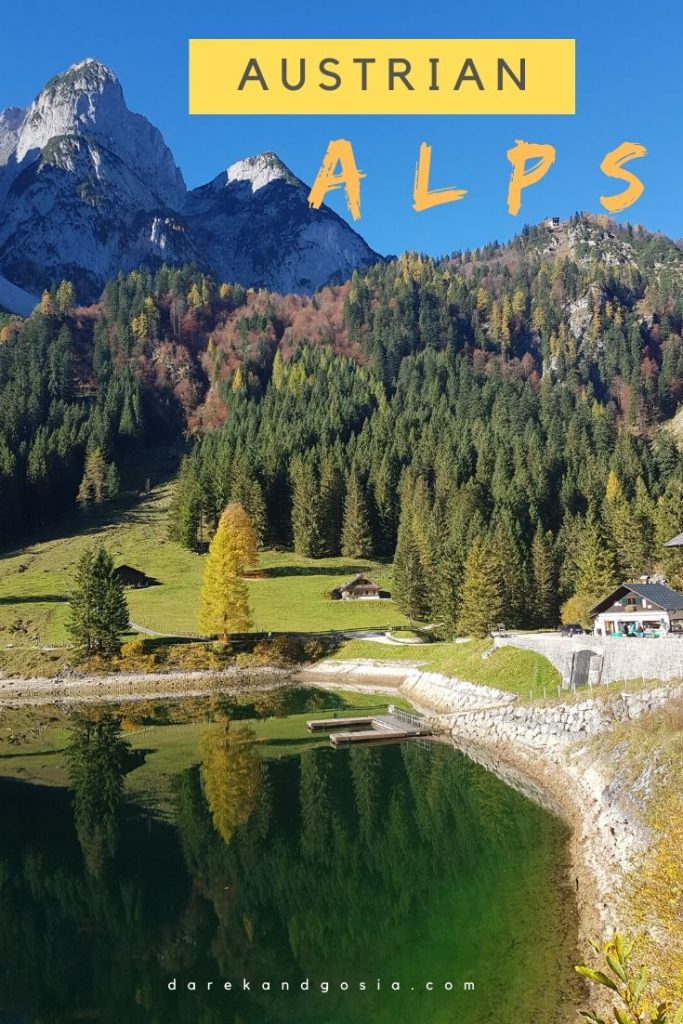
Where are the Austrian Alps?
Are you going to visit Austrian Alps? But where are the Alps in Austria? The Alps cover an incredible 80,000 square miles and feature in eleven countries. However, arguably only Austria and Switzerland can be considered truly ‘alpine’.
The Austrian Alps covers around 62% of Austria’s total area and Austria has the most significant total area of the Alps with a 28.7% share. The area of the Austrian Alps is also known as the Central Eastern Alps.
The Austrian Alps cover the south-westerly area of Austria and stretches east as far as Graz and north-east but stop just short of Vienna.
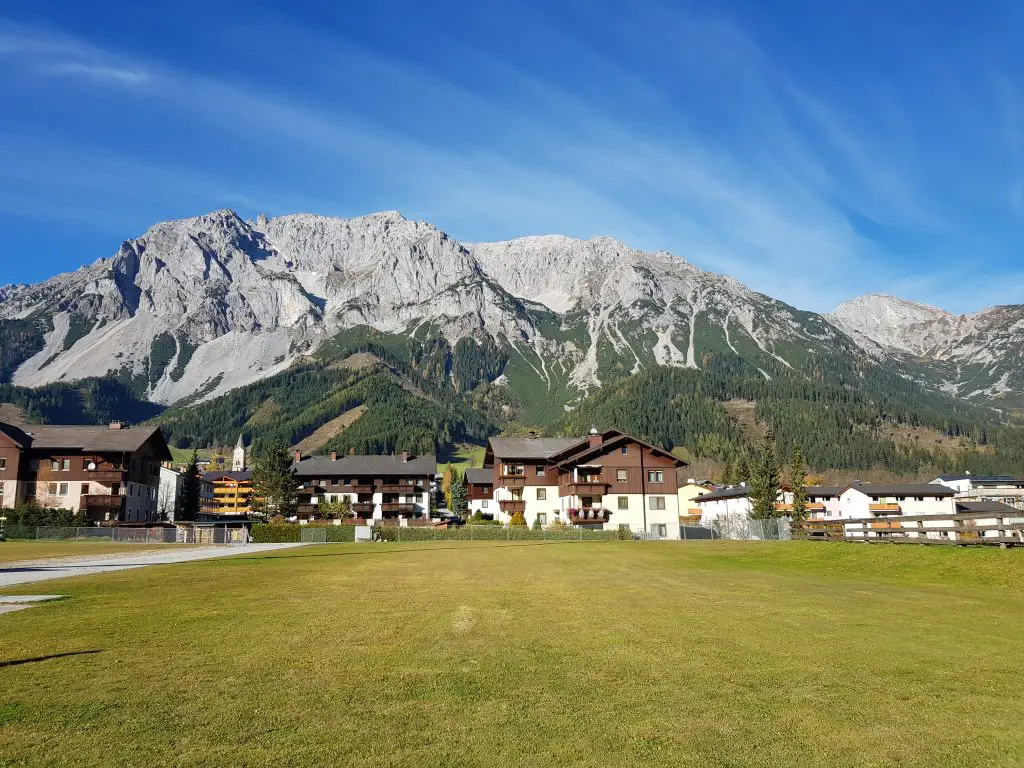
How were the Austrian Alps formed?
Incredibly, the Alps first began their formation 220 million years ago when the continental crust Pangea split to form two continents, known as Laurasia and Gondwanaland, complete with the Tethys sea in the middle.
Then, 135 million years ago, a slip-strike fault between plates occurred which create a wedge while the sedimentary rocks from the base were subducted back into the earth’s mantle.
Thirty-four million years ago, the tectonic plates of Africa and Europe pushed against each other, pushing the rocks up. The plate movement created a fold which caused the creation of the Alps mountain range, with a fold that reached up to 4000m high.
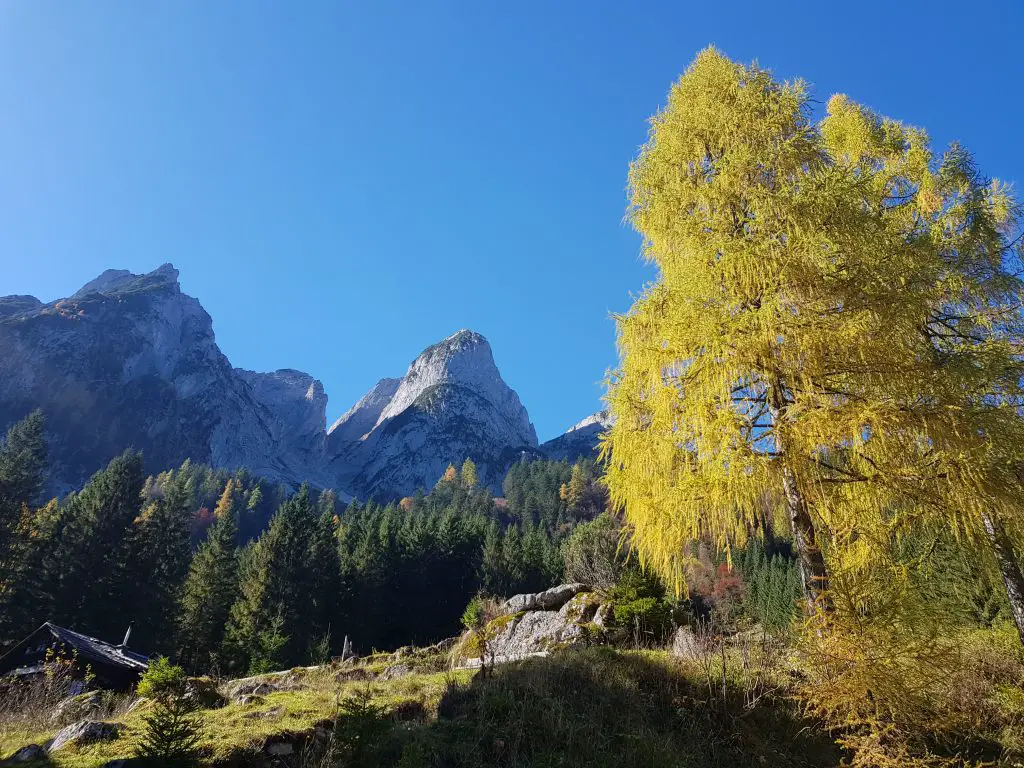
How tall are the Alps in Austria?
The tallest part of the Alps in Austria is the Grossglockner Mountain. The Grossglockner stands at 12,461 feet or 3798 metres tall. It is followed closely by Wildspitze, which is 3770 metres high and Weisskugel which is 3739 metres tall.
There are over 150 mountain summits in Austria that are over 3150 metres. However, Grossglockner is the highest point in the Austrian Alps and the whole of Austria itself.
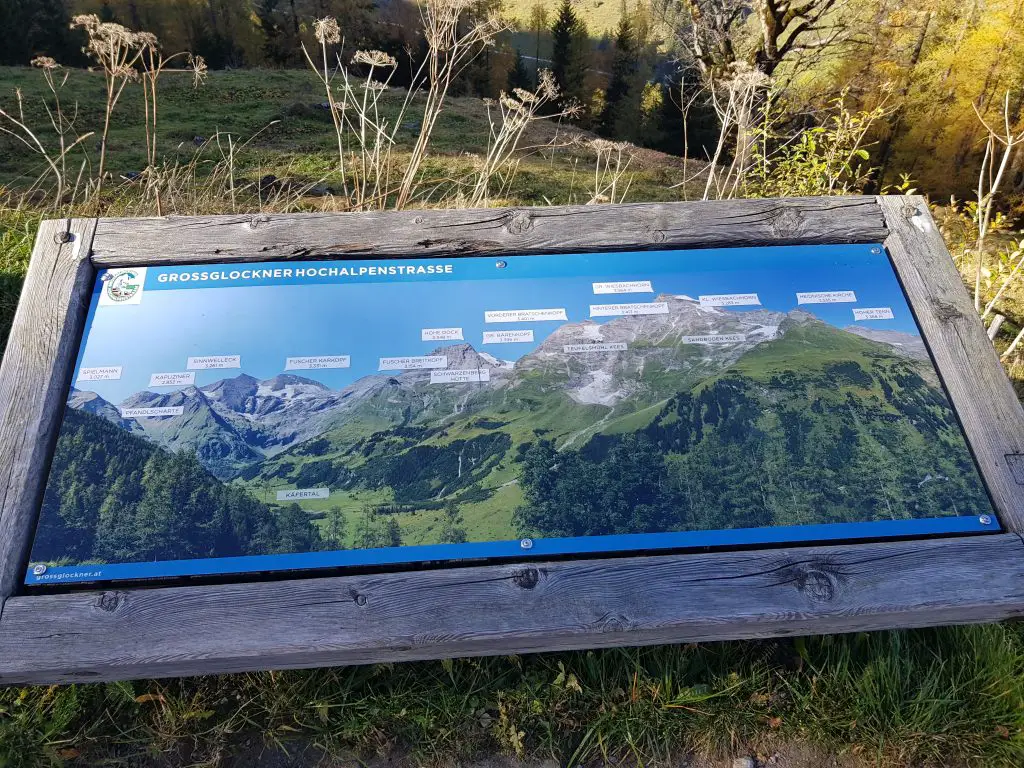
How to get to the Austrian Alps?
The austrian alps from salzburg:.
As Salzburg is perched on the edge of the Alps, you can enjoy truly breath-taking mountain views from the city. While public transport is an excellent option in Salzburg, if you want to have day trips to the mountains, it is well worth using a car.
You can also get the bus to places such as Berchtesgaden and Konigsee, which are great for access to the mountains. There is also a train service to Zell am See.
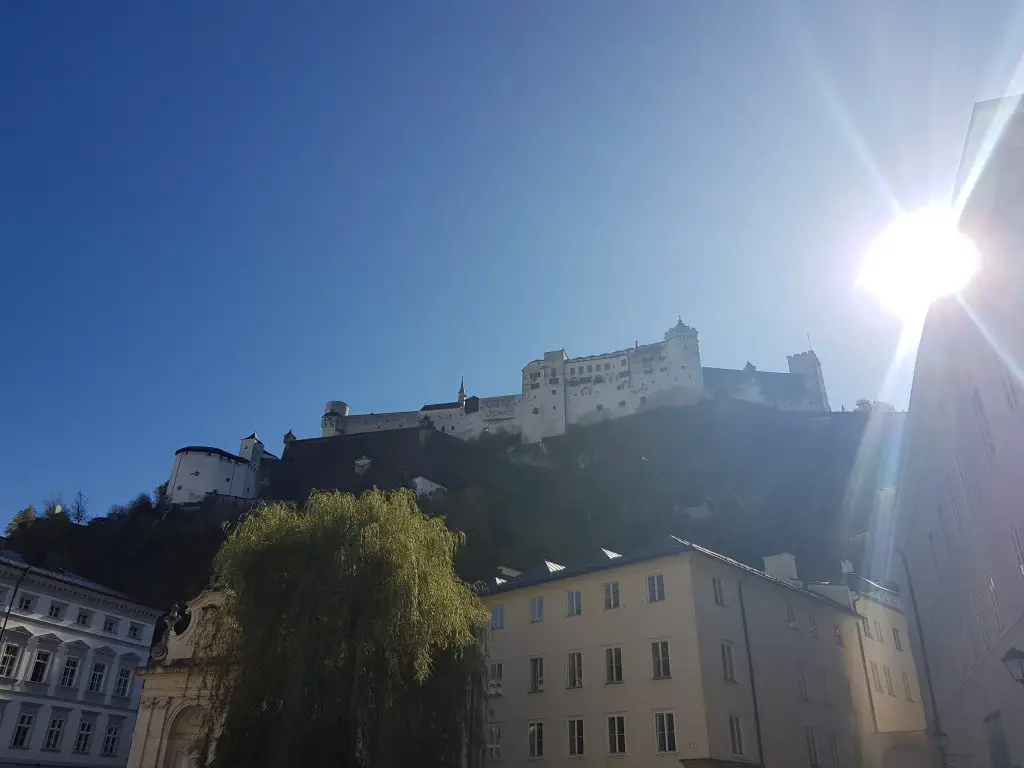
Read also: Best Weekend Getaways in Europe – Where are you off this Weekend?
The Austrian Alps from Innsbruck:
Innsbruck is known as the capital of the Alps, so is a great location to get to know the heart of the Alps. At the city outskirts, you can reach the mountain ski slopes of the Alps by cable car.
If you like hiking, in the centre of Innsbruck there is the Patscherkofel Cable Car which can take you to the mountain trails.
The Austrian Alps from Germany:
If you want to travel via public transport, there are several trains you can get to Alpine cities in Austria.
As the Alps cover such a large proportion of Austria, it is best to work out precisely where you want to visit and then to look for rail, road and air links to get to the nearest big Austrian town or city from Germany.
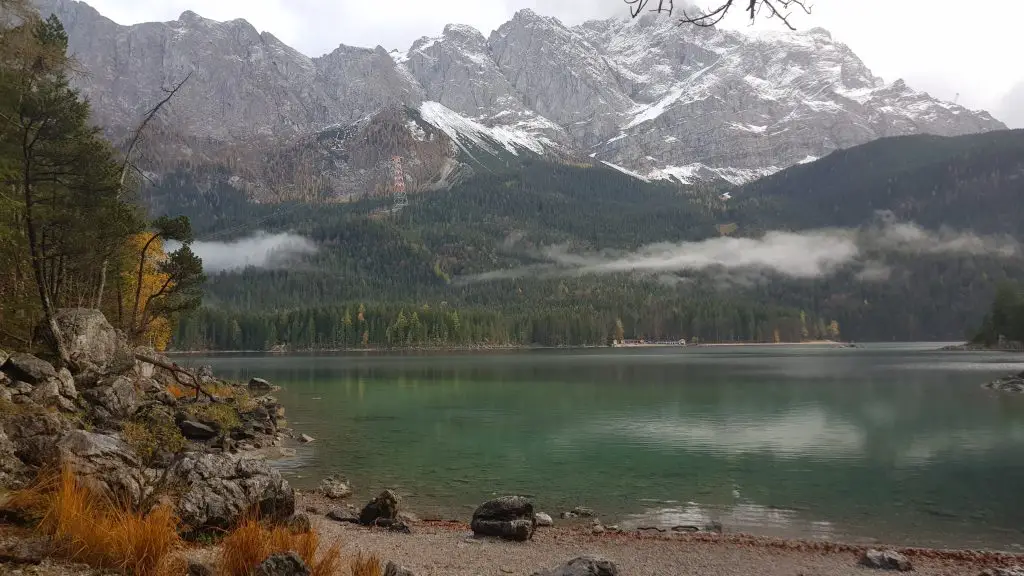
Read also: 4 days in Garmisch-Partenkirchen, Germany – Best Things to do in GaPa
Can you see the Alps from Vienna?
While the Alps do not quite reach into Vienna, from certain parts of the city outskirts, you can see the Alps although it may not provide a truly Alpine experience.
However, to experience the Alps in all their glory from Vienna you can take a day trip into the mountains.
Schneeberg, Simmering and Rax are all Alpine mountain resorts you can visit on a day trip or weekend trip from Vienna as they are all within an 80km radius from the city.
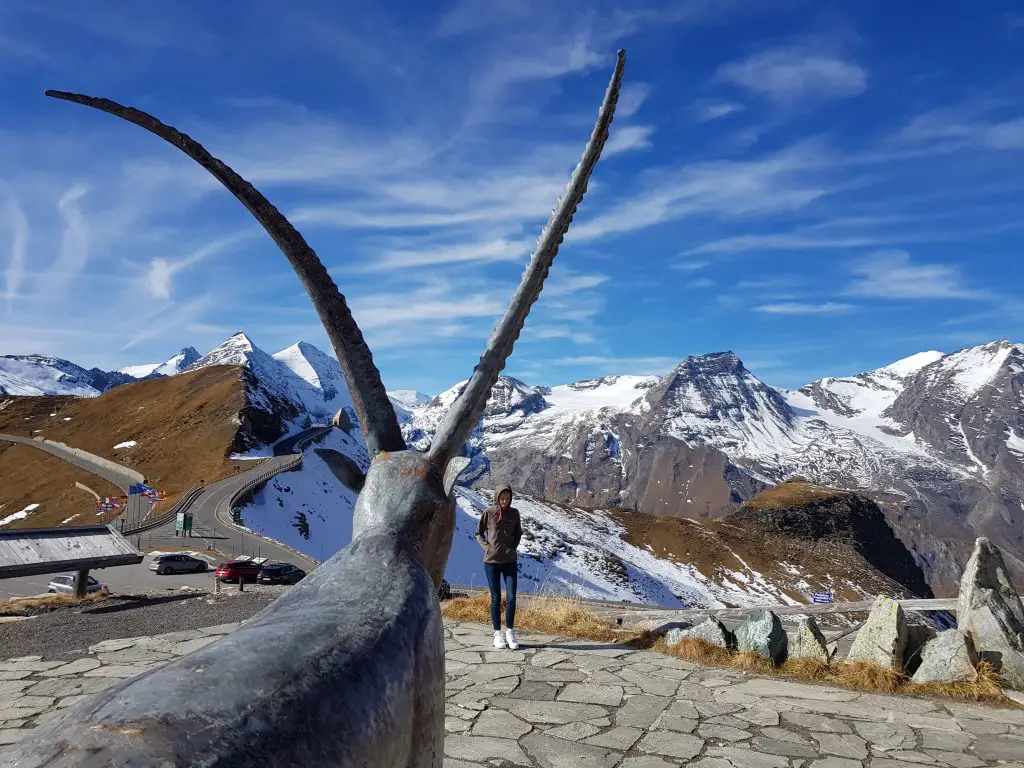
How to get around in the Alps?
For flexibility and ease of exploring as much of the Alps as possible, a car is usually the best mode of transport. However, if you prefer public transport, then the train network in Austria is excellent and enables you to access different parts of the Alps with ease.
Furthermore, you’ll be able to enjoy the beautiful views of the mountains from the comfort of your train carriage.
All of the major cities in Austria have airports too such as Linz, Graz, Innsbruck and Salzburg, which make it easy to explore as much of Alps as possible.
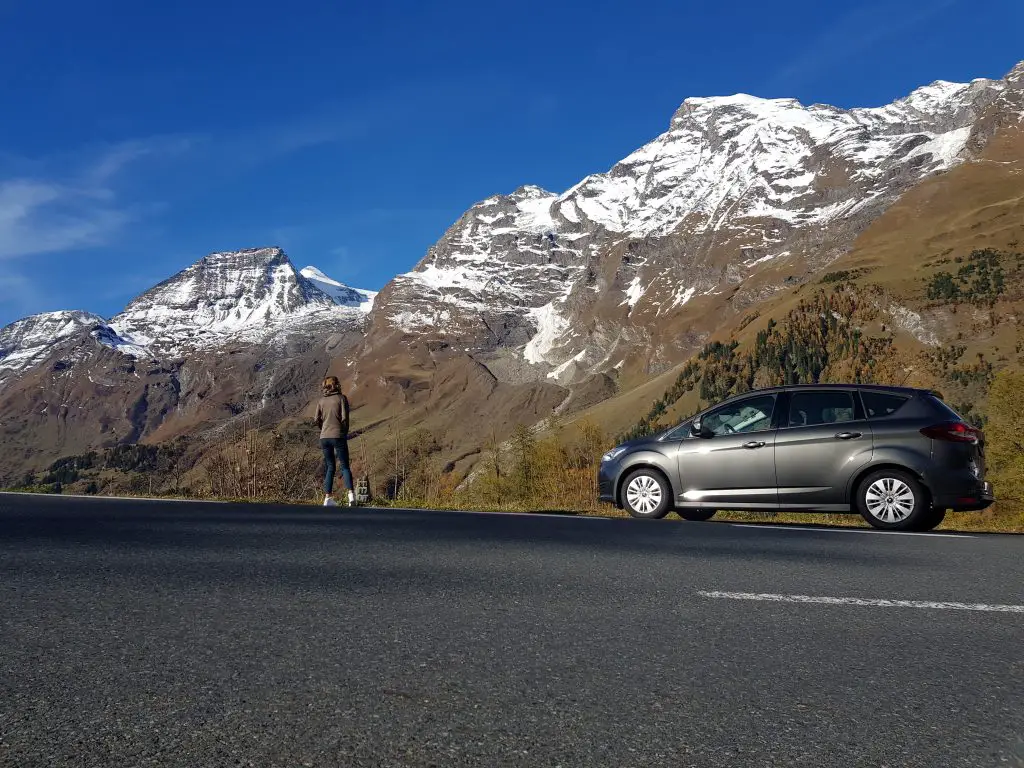
Is it worth visiting the Austrian Alps in summer?
Absolutely! There are many things to do in the Alps in summer. Unless you want to visit the Austrian Alps specifically to ski, then there are lots of reasons to visit the Austrian Alps in the summer.
Summer in Austria generally brings lovely weather with an average temperature of 25oC, with plenty of blue skies, sunshine and crisp mountain air. In spring and summer, you’ll see the beautiful Alpine flowers begin to show, and the whole area looks green and lush.
The summer activities in the Austrian Alps include sightseeing of the beautiful towns and Alpine villages. For more adventure, there is plenty of cycling, hiking, mountain climbing, mountain biking as well as horse riding, paragliding and ziplining. The Austrian lakes are also home to many activities from SUP to swimming, water skiing and wakeboarding.
Whether you want to relax in a spa while enjoying the view or are fuelling your adrenaline junkie side, the Austrian Alps in the summer have something for everyone.
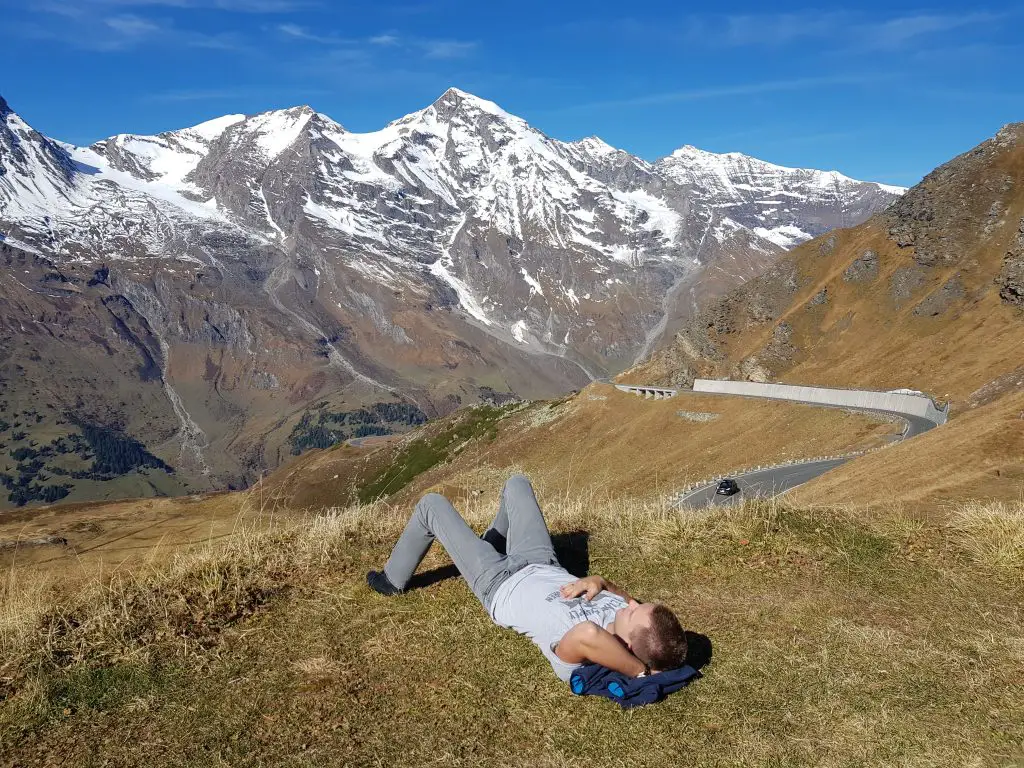
Where to go in the Austrian Alps for ski?
Where to stay in Austrian Alps? Filzmoos is a pretty mountain village in the state of Salzburg. It offers a compact ski resort which means it is ideal for families, and there are plenty of slope options that serve beginners and children right through to the advanced skier.
There is also a 16km cross country ski run too. The beauty of Filzmoos is the ski runs right back into the resort for total convenience. Top Austrian Alps skiing destination!
The village has many luxury hotels to unwind in as well as lots of restaurants to enjoy gastronomic delights.
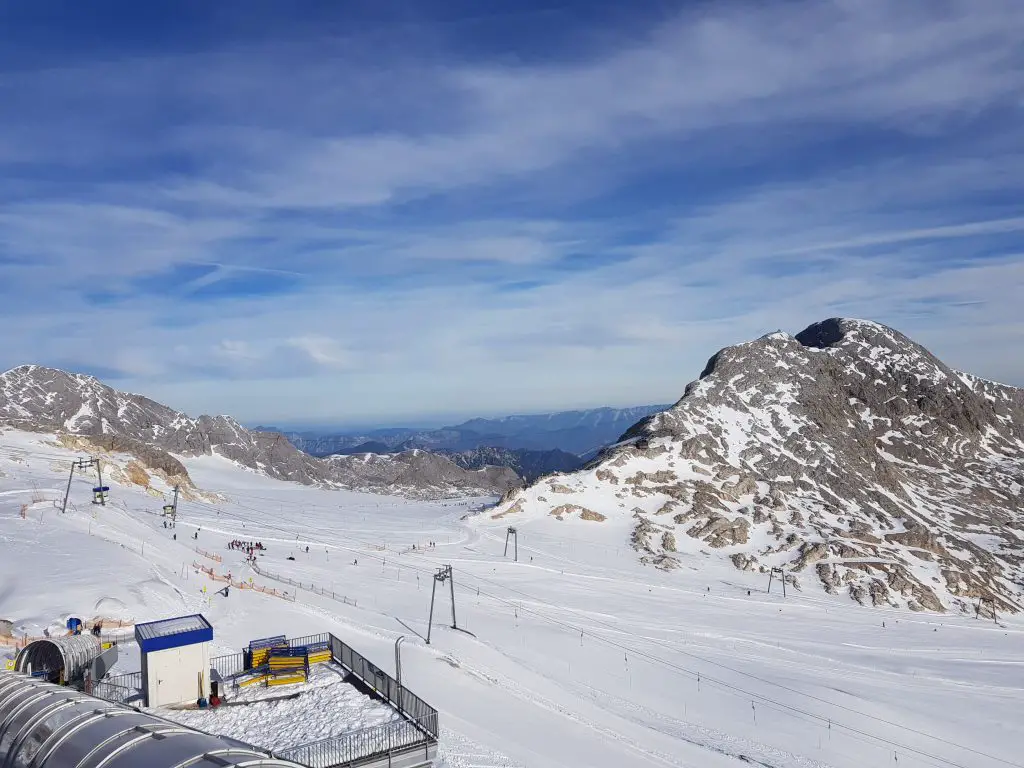
Best Alps towns? In the state of Tyrol and the Tyrolean Alps, St Anton is the perfect place for ski and relaxation. St Anton is regularly rated as one of the top ski resorts in the Alps with over 200km of off-piste routes and 340km of slopes. The town is bustling with luxury chalets, hotels and fine dining.
With the challenge of the slopes, St Anton is best for intermediate and advanced skiers. However, there are some nursery slopes at the base too.
Best places to visit in the Alps in summer? Alpbach is in the Tyrol state and is regularly voted as the most beautiful Alpine village thanks to the beautiful flowers of the region and the typical Alpine architecture.
There are three ski lifts in Alpbach which covers 145km on ski runs. There are also 20km of cross-country ski trails. Other winter activities in Alpbach include tobogganing, winter hiking and paragliding – top Alps tourist attractions!
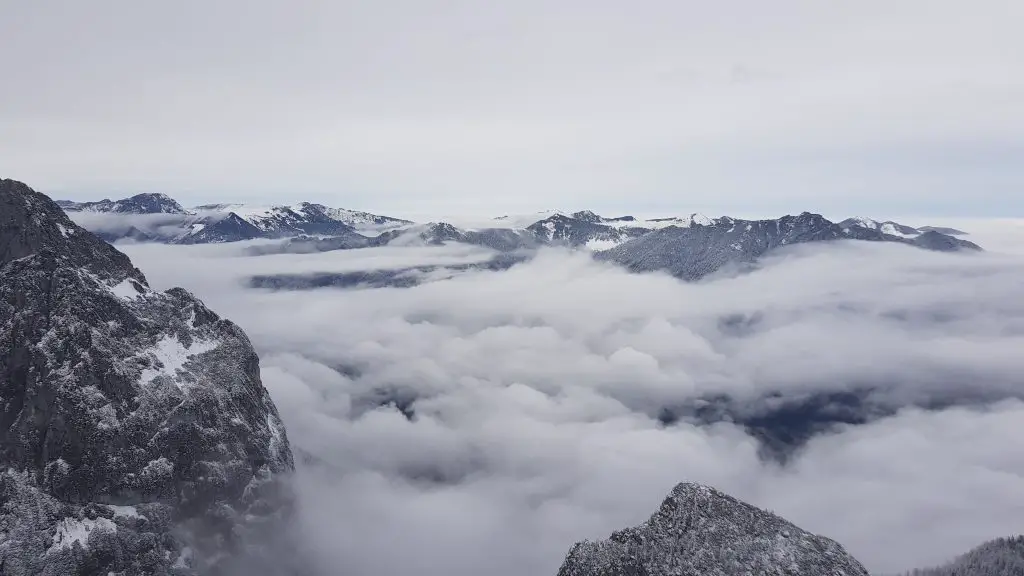
Looking for luxury hotels Austrian Alps? Perched on the banks of the river Lech, the mountain village resort is in the Austrian state of Vorarlberg. It is a popular resort for royalty and celebrities thanks to the luxury hotels and chalets available as well as the many gastronomic delights. However, the biggest draw for Lech is the ski terrain which suits intermediates and above complete with lots of exciting variations on the slopes.
Lech shares its resort with the nearby village of Zürs, so connections across the ski area are perfect which is ideal if you want to explore the whole Arlberg ski region and the 305km of pistes it has to offer.
Top things to do in the Austrian Alps:
Walking and hiking.
Best activities to do in the Alps? The Austrian Alps are home to truly magnificent scenery, and there is no better way to explore the Alps than through roaming across the many trekking trails or hiking up to the top of the mountain peaks. The Austrian Alps are one of the best places to hike in Europe !
From comfortable lakeside walks to mountain climbs there is something for every hiking style and ability. One of the most popular trails in the Austrian Alps is the Eagle Walk; a long-distance trail covering 413km over the heart of the beautiful Alps. This makes for a great walking holiday.
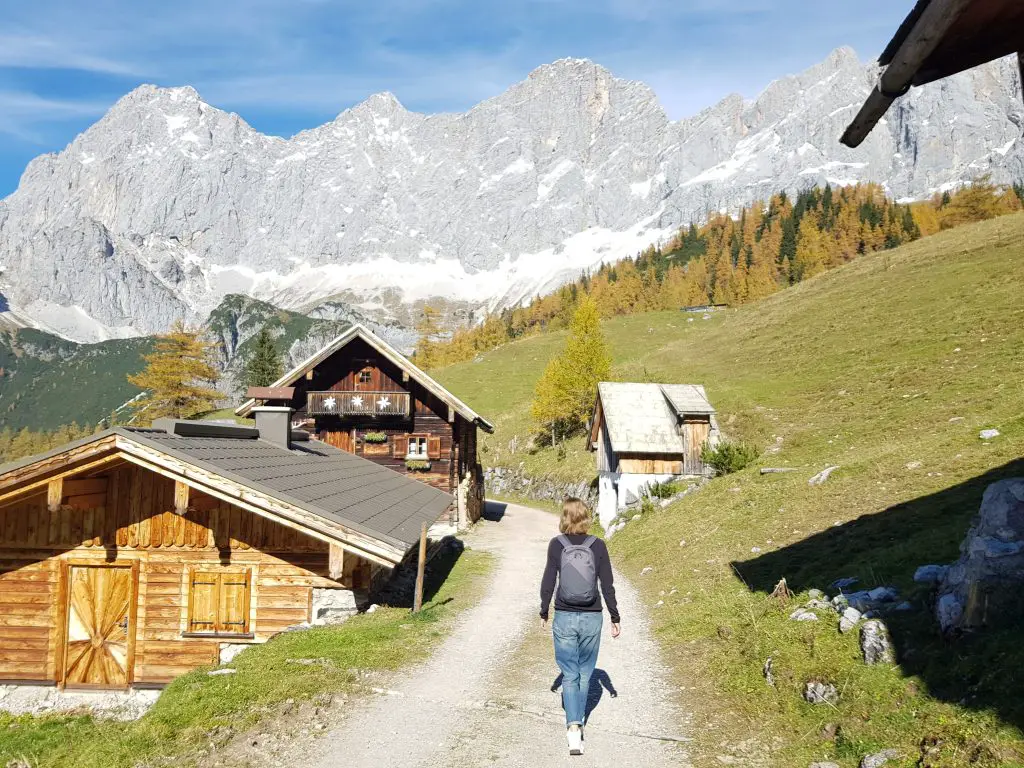
How to find the best places to visit in Austrian Alps? Austrians love their cars, and with incredible roads that traverse through the Austrian mountains, it is easy to see why. Of course, driving is dangerous in the winter due to icy conditions and avalanches. However, a road trip in the summer through the Austrian Alps is an unforgettable experience.
The Grossglockner High Alpine Road is a must for the bucket list as it’s one of the most scenic road trips in Europe ! It offers sensational views and covers 48km with altitudes reaching 2500m. On the route, you’ll have information points, viewpoints and exhibitions.
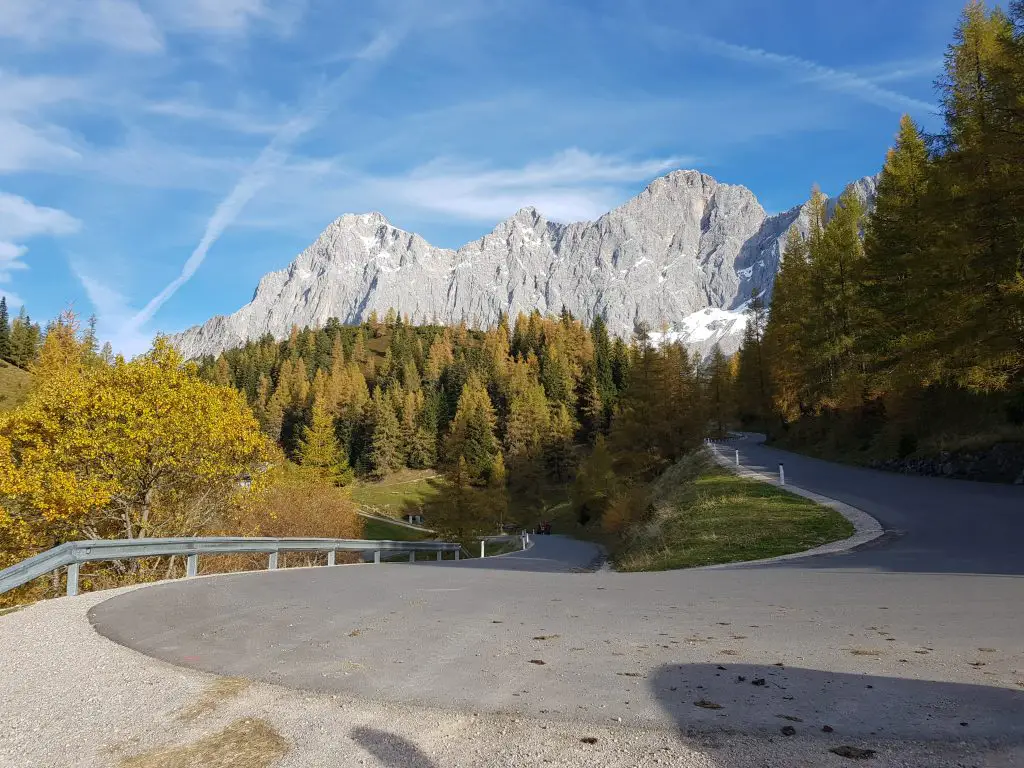
Visiting fairy-tale towns
Looking for the best towns to visit in Austria Alsp? The Austrian Alps are home to so many enchanting fairy-tale towns and villages that are impossible not to fall in love with. For example, there is Kitzbugel which is a small mediaeval town that looks straight out of a fairy-tale complete with a stunning Alpine Flower Garden in summer.
Similarly, Feldkirch offers fairy-tale charm with its dazzling turquoise river and beautifully lush mountain backdrop and a town full of beautiful and narrow cobbled streets.
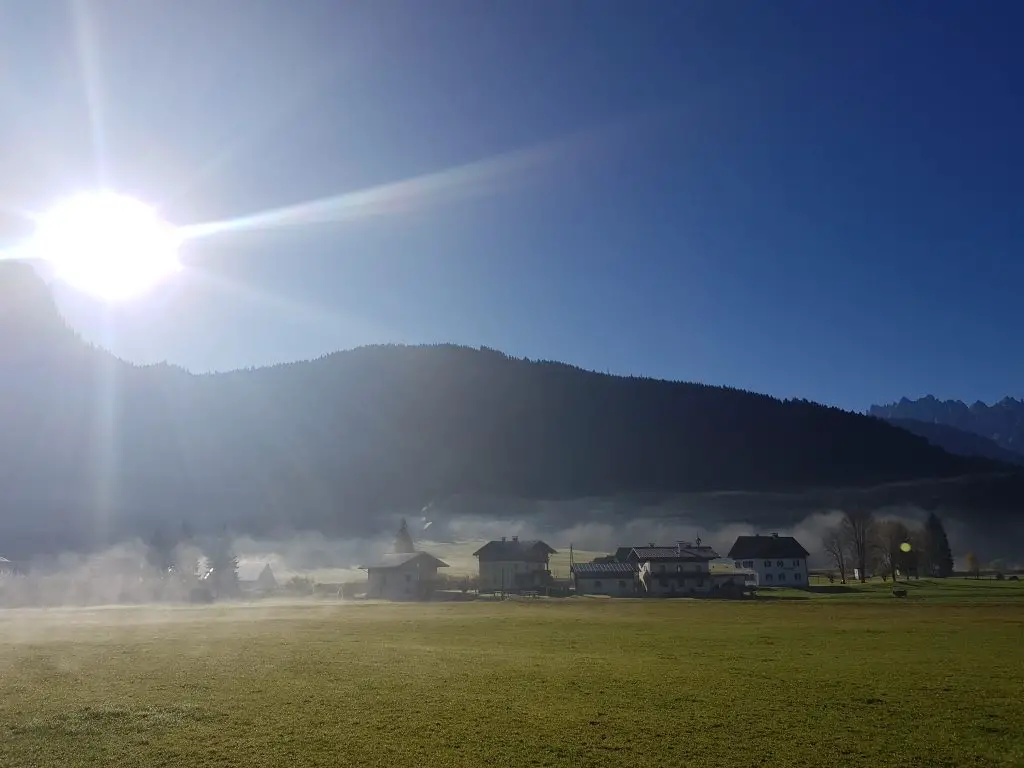
Austrian Alps top towns to visit:
There are many great places to visit in the Alps. As the fourth largest city in Austria, Salzburg has plenty to see and do. Most notably the 11 th -century Fortress Hohensalzburg which perches high above the city or the charming Mirabell Palace which features beautifully manicured 17 th -century gardens.
There is also the magnificent Salzburg Cathedral and the Schloss Hellbrunn castle, which makes the city a perfect place for a weekend getaway !
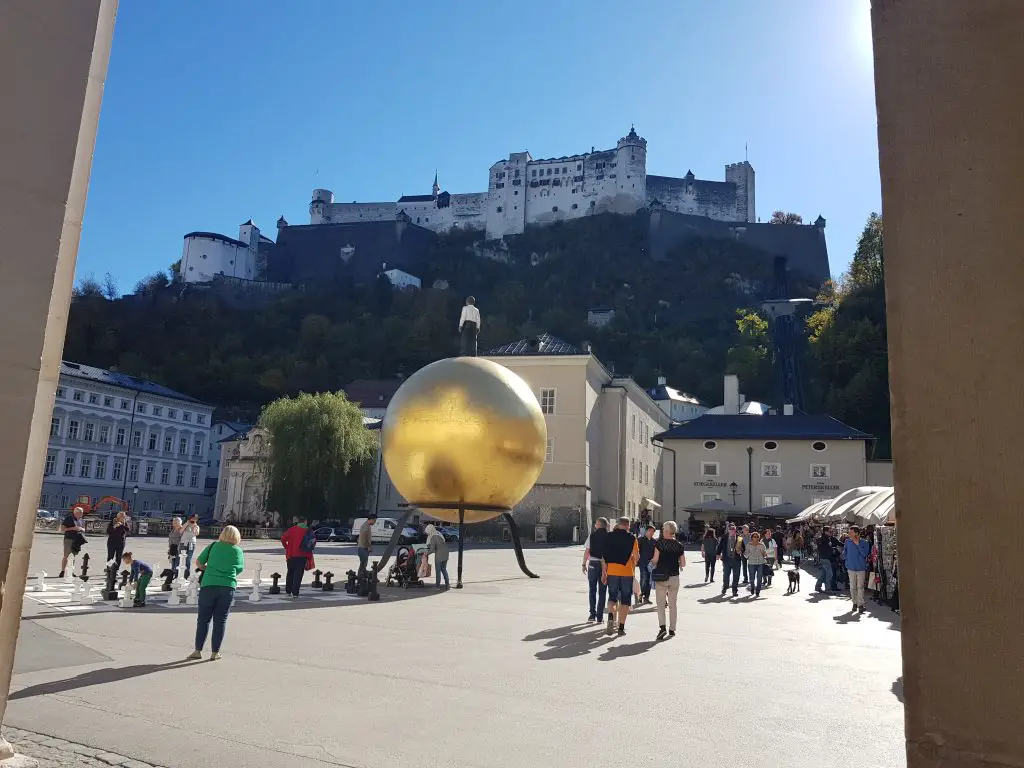
Read also: What to see in Salzburg Austria in one day: 16 Things to do!
Complete with traditional pastel-coloured buildings, Innsbruck is full of colour and life. Sitting perfectly in the Austrian Alps, Innsbruck is surrounded by snow-capped mountains with the river running through the centre of the city.
Innsbruck offers cable cars to the peaks, and ski jumps too. However, the history and architecture of the town make it perfect for simply exploring on foot. It really is one of the best Austrian Alps towns.
Looking for best places in Austrian Alps? Nestled on the banks of a lake, Hallstatt has beautiful waterside views complete with snowy mountaintops in the background. The beautiful town itself features charming pastel houses and traditional architecture.
Wherever you go in Hallstatt, it always offers picture-postcard views. Many tourists say, that Hallstatt is one of the most romantic places in Europe !
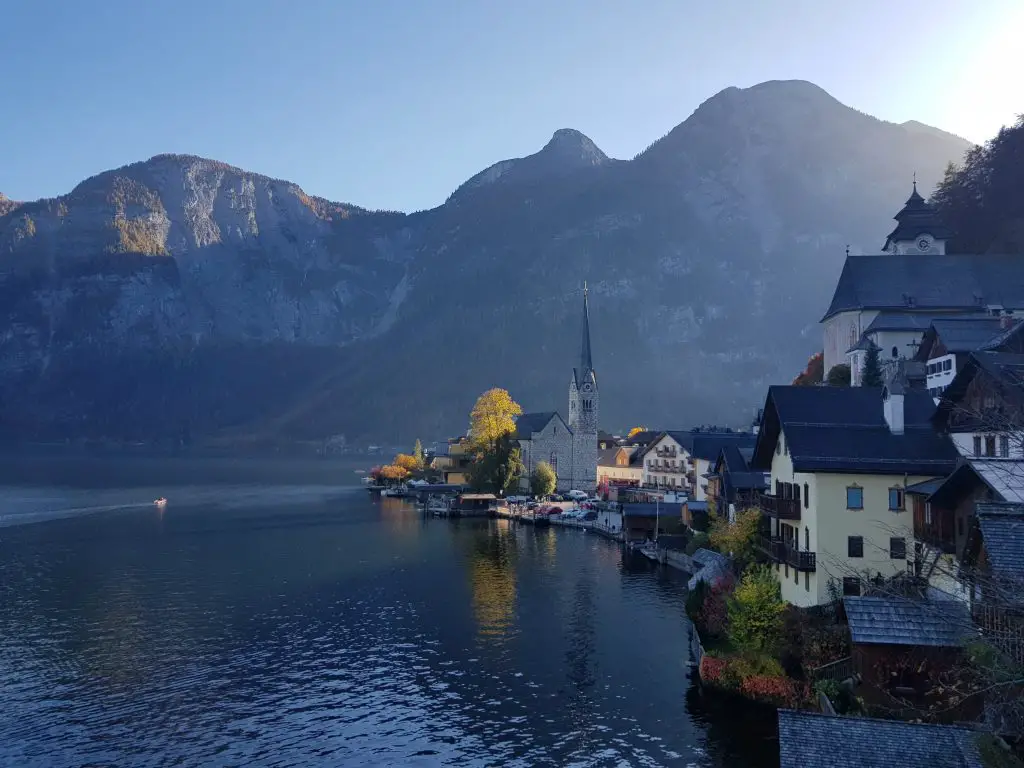
Read also: Is Hallstatt Austria worth visiting or is the Town a tourist TRAP?
Unusual places to visit in the Austrian Alps:
Alps mountain range in Austria is full of stunning places. In the Salzkammergut Mountains, a great activity is to take the rack railway to Schafberg . The railway is the steepest steam cog railway in Austria and has been in operation since 1893. Starting in Wolfgang, the leisurely 35-minute journey covers a 1,190-metre ascent in just 5.85km.
At the summit top which is 1783metres, you can enjoy 360-degree panoramas covering the beautiful lakes below and the Alps that stretch out as far as the eye can see.
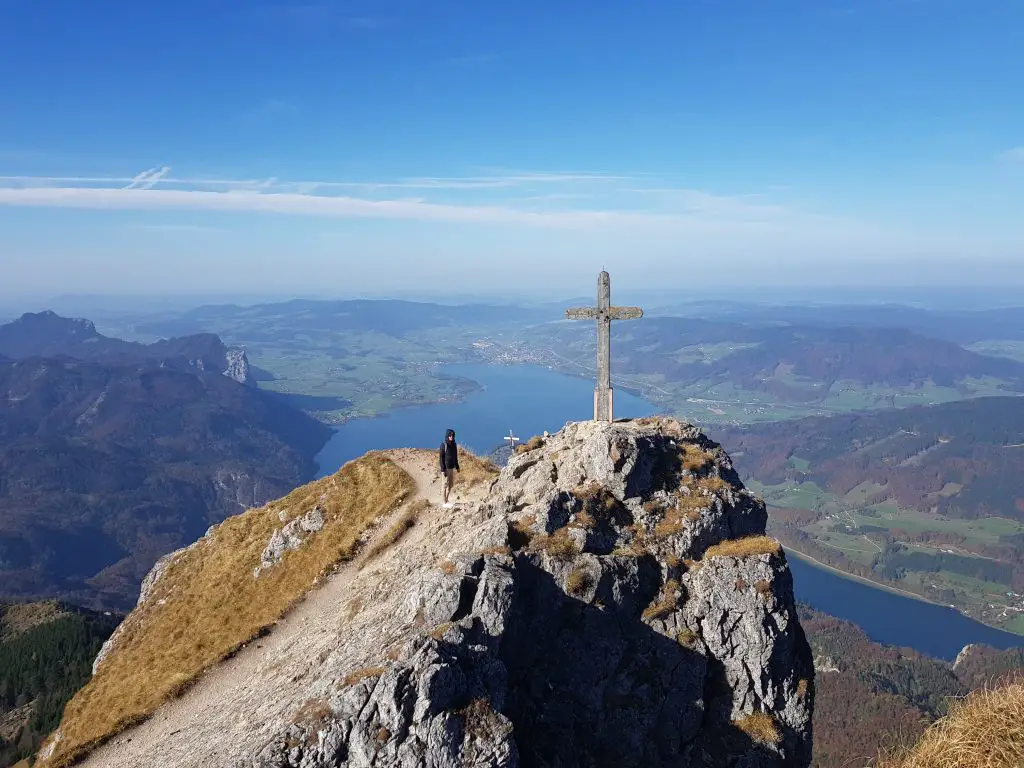
Read also: How to get to Schafberg mountain Austria? Europe’s travel at its prettiest!
Stairway to nothingness Dachstein
One of the top attractions Austria and best places in the Alps! If you have a strong nerve, then the stairway to nothingness is a great way to challenge your bravery and enjoy some unforgettable views in the process. The stairway to nothingness is a just 14 narrow steps down to a glass platform where you are suspended high in the valley of the mountains. It really is one of the most unique places in Europe !
The platform is vertigo-inducing, but it does offer stunning views of the mountains and Dachstein glacier below on a clear day. In clouds, it really does feel like it is a stairway into the unknown!
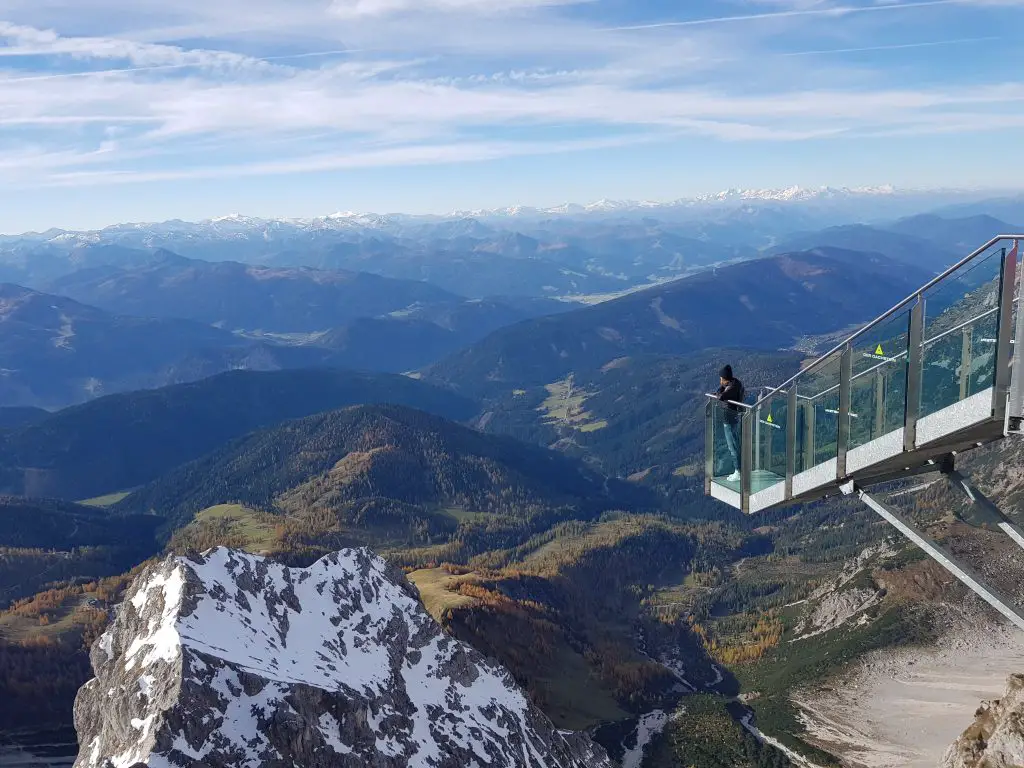
Read also: Unique places to visit in Europe for true American Cowboys!
Kebema Panoramabrücke
The Kebema Panoramabrücke is an incredible suspension bridge that offers truly spectacular views. The bridge sits high above Lake Schlegeis and makes for beautiful photographs.
There is a lovely, but short hike to get to the bridge which makes the views even more worthwhile. For Instagram, it is a must-visit!
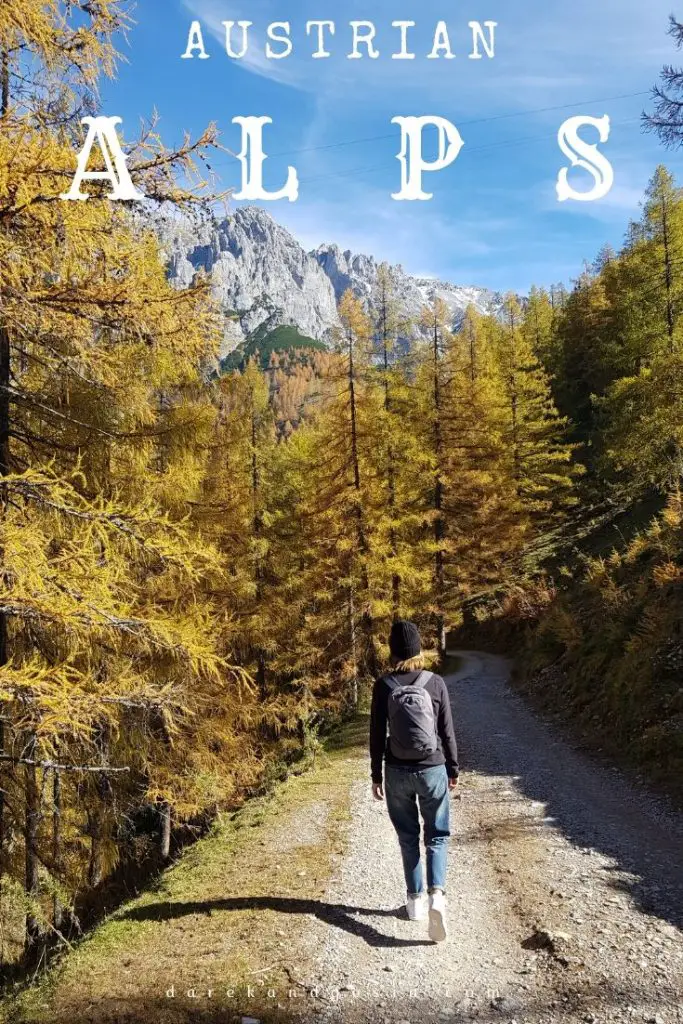
Articles you may like:
- Cheddar Gorge caves vs. Cheddar Gorge cliff-top walk
- Visiting Stonehenge – TOP Tips for 1st-time visitors
- 3 days Ring of Kerry itinerary – Is driving tour worth it?
- Best Beaches in Europe – TOP Beach Holiday Destinations!
Further reading
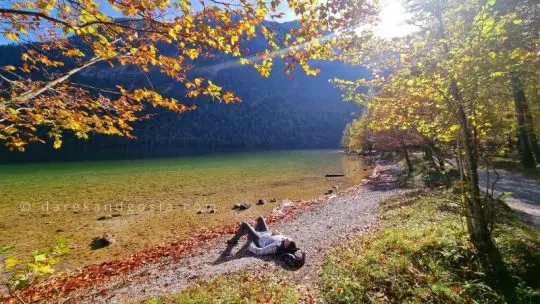
17 Places in the Bavarian Alps That Even Gosia Couldn’t Love
Take a holiday in Bavaria and you’ll regret how magnificent it is. Discover landscapes that ruin all other views and flavours that turn you into a food snob. Read on to know why this German gem sets an unfairly high bar for every other...
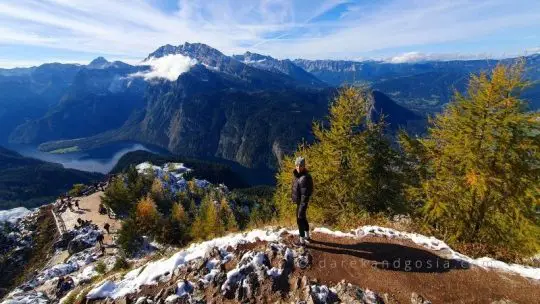
Give Jenner Aussichtsplattform a Miss: It’s Simply Too Lovely
Tag along with Darek and Gosia as they dissect Jenner’s observation deck – the spot so ludicrously lovely, it’s the valedictorian of viewpoints. What’s the catch? Do your other travel photos even stand a chance? Find out in...

55 Best Things to do in the Austrian Alps: Top Places to visit
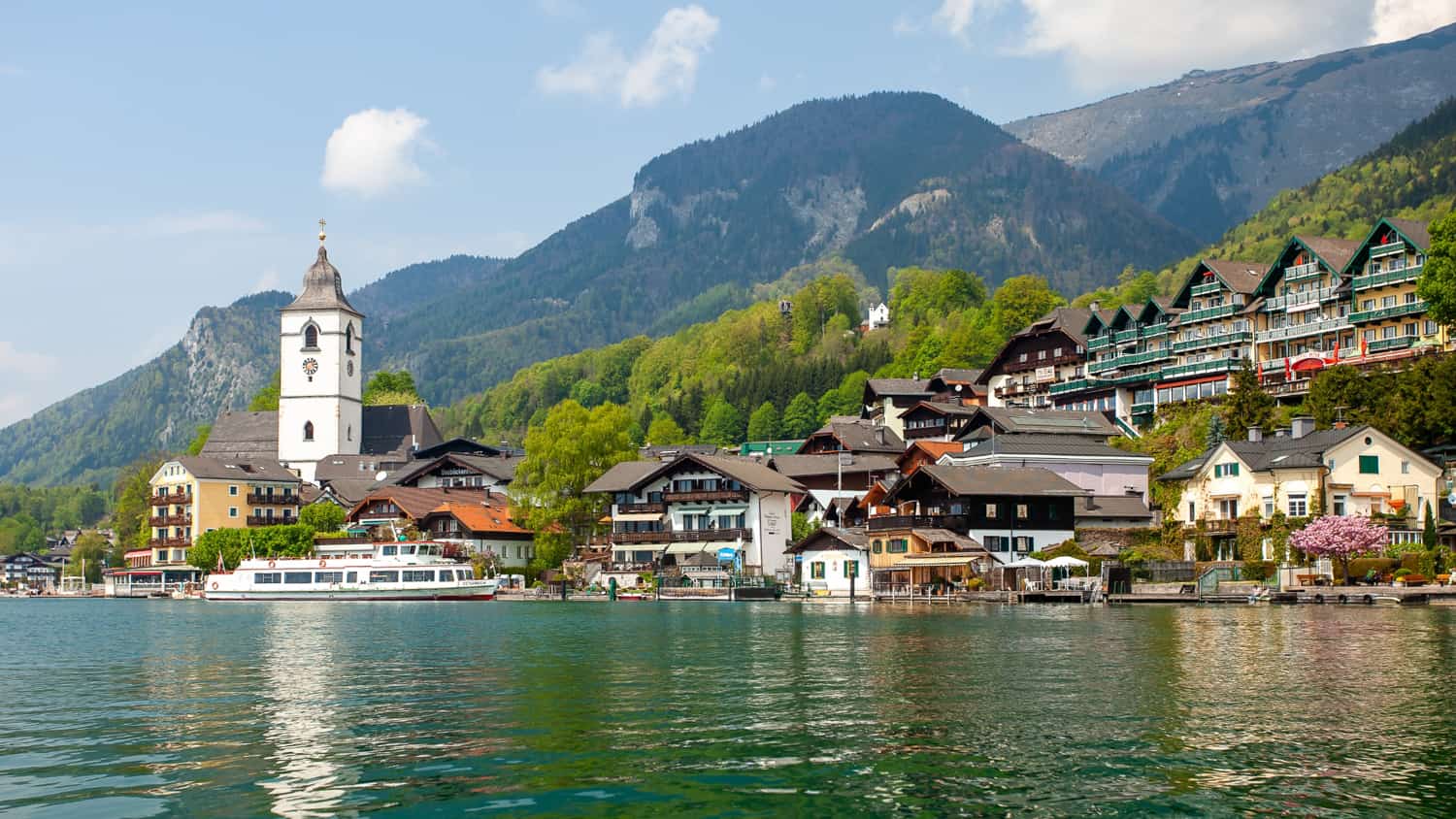
Austrian Alps – welcome to a postcard-perfect destination that beckons with its majestic mountains, lush valleys and picturesque villages. Today we show you the best things to do in Austria with tips for trips and hiking routes to the Austrian Alps for your holiday. Enjoy the Austrian Alps in summer as a couple or as a family with children.
Things to do in the Austrian Alps in summer – map
HOW TO USE THIS MAP: Above you will find a detailed map of the best things to do in the Austrian Alps. Click at the top left of the map to see separate layers with highlighted locations. You can hide and show the different layers or click on the icons on the map to see the names of the places I mention in the guide to where to go in the Austrian Alps. If you want to save the map, star it. For a larger version, click on the icon in the upper right corner.
Best Things to do in Austrian Alps, Austria: Top Places to visit
1. wolfgangsee.
Wolfgangsee in Austria, a lake with turquoise water surrounded by forests and high mountains, is located in the Salzkammergut area near Salzburg. It is perfectly situated for day trips to Salzburg as well as Hallstatt and the Dachstein mountains (see next point).
Enjoy a swim in the crystal clear water or a boat trip, follow the lake’s well-maintained path around the lake and enjoy the charm of the traditional lakeside villages of St. Wolfgang, St. Gilgen and Strobl.
HOTELS WOLFGANGSEE 😴
These accommodations include a SommerCard, which gives you free access to the Schafberg Toboggan Run, the Wolfgangsee ferries, the Strobl toboggan run and other attractions in the area.
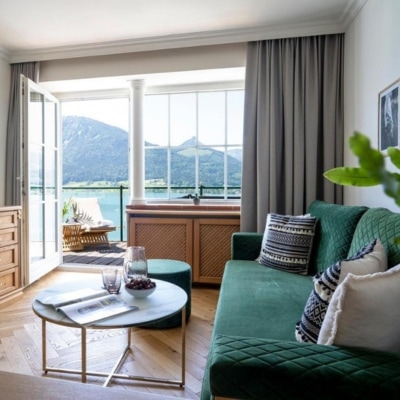
Hotel Peter
Stylish hotel by the promenade
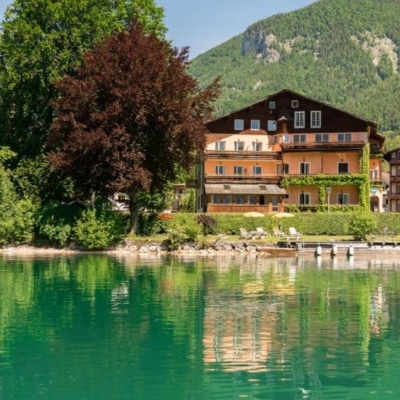
Seehaus Familie Leifer
Fully equipped apartments
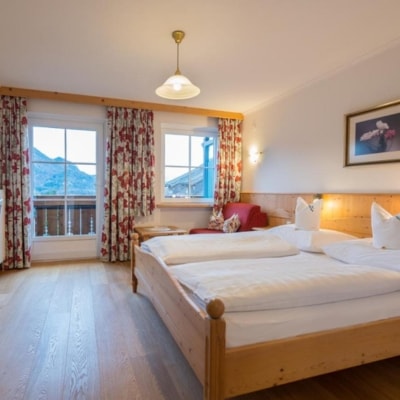
Hotel-Garni Schernthaner
Family hotel
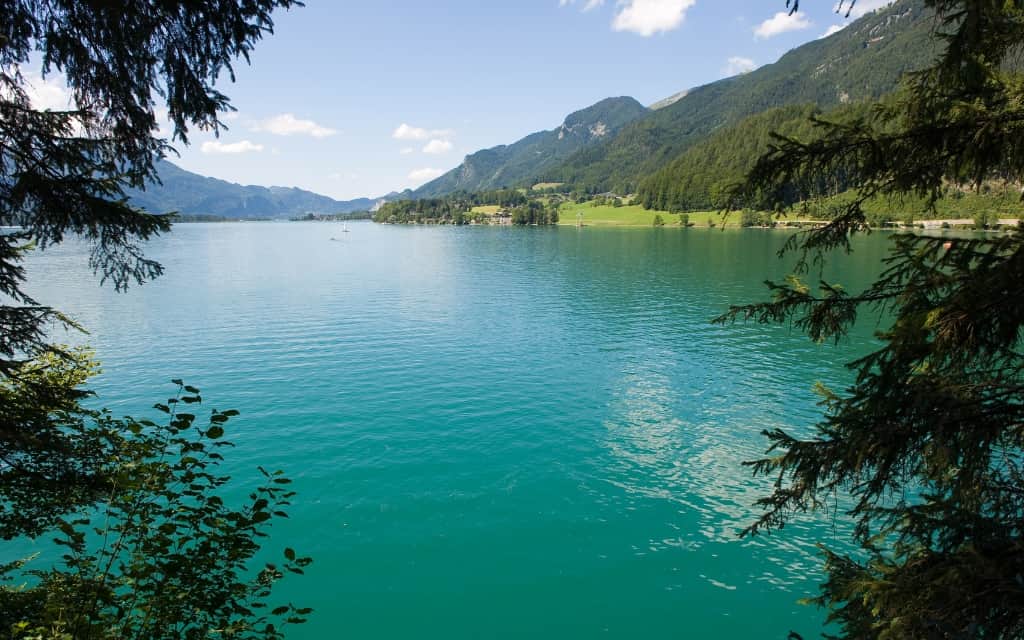
Things to do in the Wolfgangsee area:
Circular route around bürglstein.
The easy circular route around Bürglstein is located near Strobl and runs partly along the lake and partly through the forest. There is a free car park at the beginning. The route is 4 km long and will take you about 1-1.5 hours.
Zwölferhorn
The Zwölferhorn is a popular peak at Wolfgangsee, from where you can enjoy some of the best views of the lake. If you are looking for an area where you can spend the whole day, the Zwölferhorn is ideal. There are a number of hiking trails and mountain huts.
You can reach the top by an easy route or by cable car from Sankt Gilgen.
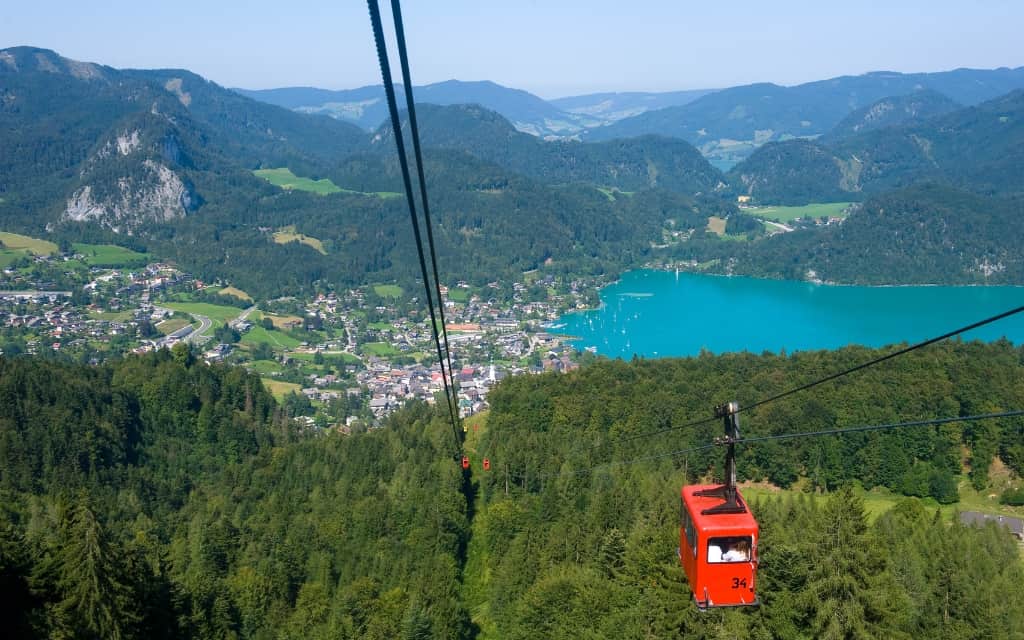
The Schafberg Railway
The Schafberg Railway is one of the best things to do at Wolfgangsee. The lower station is in St. Wolfgang and the ride up takes 35 minutes. In high season there are a lot of people here, it is better to book tickets in advance. Along the way, you can expect spectacular views and an unusual experience, because you don’t just see a cog in the Alps. Check out the official website for more information.
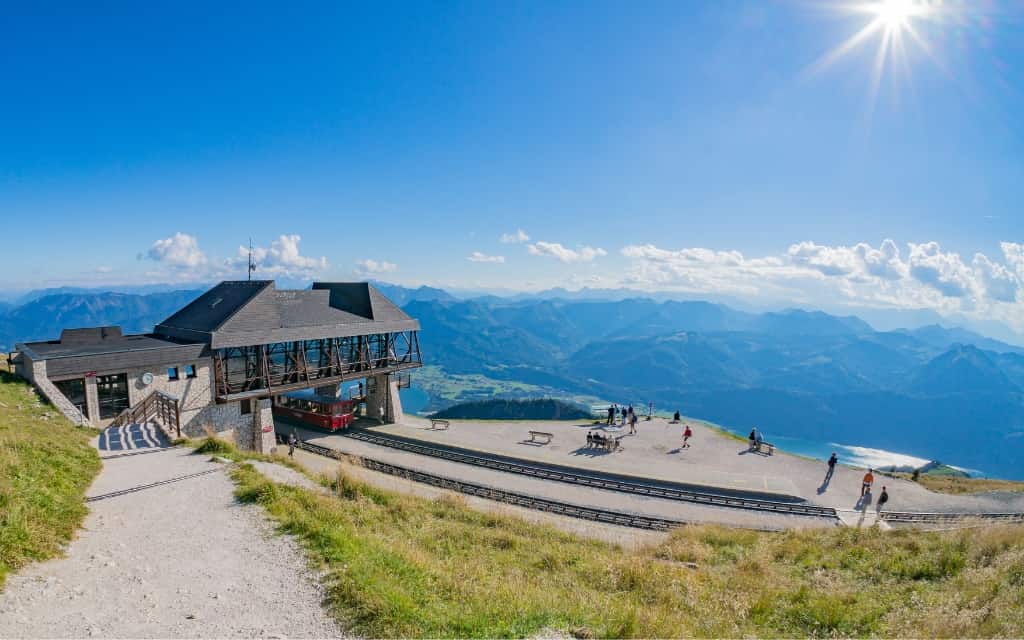
You can also walk to the top of the Schafberg – the hike up takes about 3-4 hours depending on your fitness and the weather. From the top, you’ll enjoy a postcard-like view of turquoise lakes nestled among the Alpine peaks.
Where to stay at Lake Wolfgangsee:
- Hotel Peter : Stylish four-star hotel right on the promenade in St. Wolfgang, with free parking and excellent cuisine.
- Strandhotel Margaretha : Design hotel right on the lake with a private beach and free parking.
- Hotel-Garni Schernthaner : Family-run hotel in the centre of Sankt Gilgen just a few steps from the lake
- Seehaus Familie Leifer : Studios and apartments with kitchenette, free parking and lake views in St. Wolfgang
- B&B Schwarzes Rossl : Cheap B&B near the lake in St. Wolfgang
Read more about Wolfgangsee in the previous article (including photos, tips for trips and hiking routes).
2. Dachstein mountain range
The Dachstein is a dramatic mountain range in the northern limestone Alps and one of the most popular areas in the Austrian Alps. Explore the picturesque town of Hallstatt, enjoy the view from the suspension bridge or the famous Five Fingers lookout, or enjoy a trek around the alpine lakes of Gosauseen.
HOTELS DACHSTEIN 😴
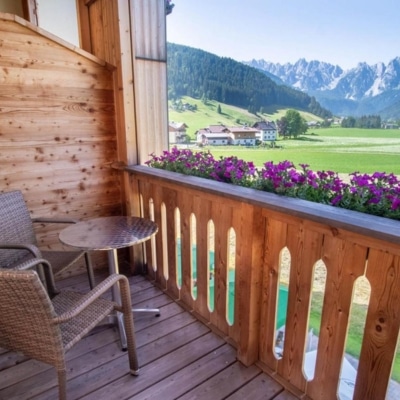
COOEE Hotel
Best value for money
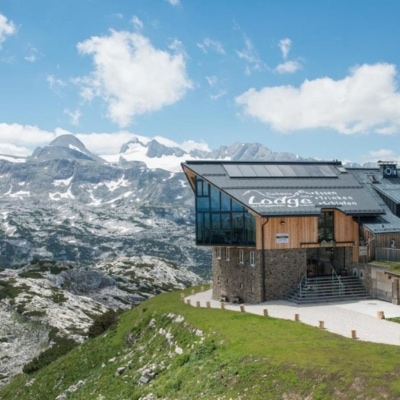
Lodge am Krippenstein
Mountain hotel in the middle of the mountains
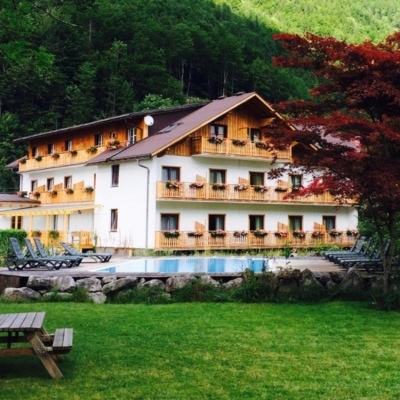
Seehotel am Hallstättersee
Great for families
Things to do in Dachstein, Austria:
Hallstatt is an iconic Alpine town that is a UNESCO World Heritage Site. Nestled at the foot of a lake amongst prominent mountains, with a dominant church that towers over the surrounding Alpine houses.
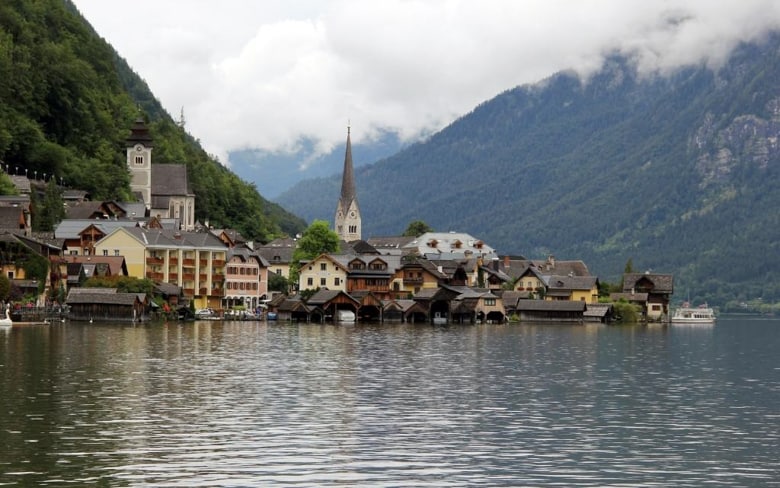
In Hallstatt you can visit the salt mines or the Skywalk “Welterbeblick” – for more information, see the article about the Dachstein mountains in Austria .
Ice and Mammoth Cave – Five Fingers Viewpoint
The Five Fingers Lookout is one of Austria’s most famous lookout points. From here you can enjoy fantastic views of the Hallstatt area.
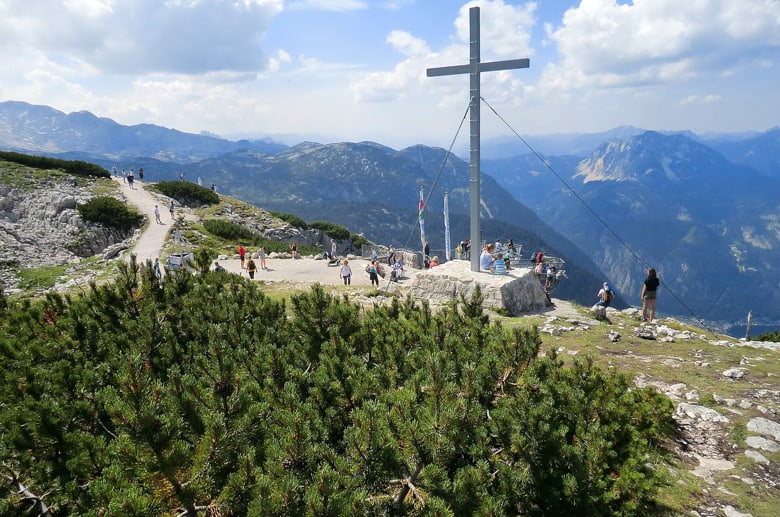
The viewpoint can be reached by cable car from Obertraun. The first Dachstein Krippensteinbahn I stops at the Ice and Mammoth Caves.
The second cable car, the Dachstein Krippensteinbahn II, connects here and takes you to the Five Fingers viewpoint. From the cable car, you have about 1 kilometre to walk and then you will enjoy the magnificent views of Hallstatt, Hallstatt Lake and the surrounding mountains.
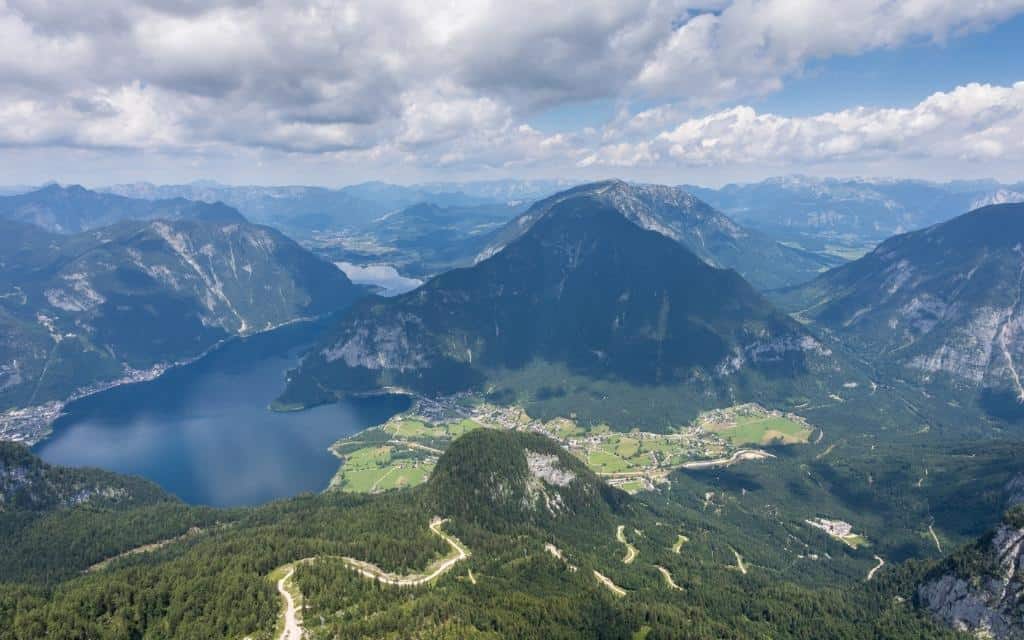
The view itself is free. There is a fee for the cable car (you can also walk) and the caves. Opening times and cable car fares can be found here.
From the cable car, it’s just a few steps to the World Heritage Spiral, another viewpoint right at the top of Hoher Krippenstein with fantastic views of Hoher Dachstein (the highest peak of the Dachstein massif).
Suspension bridge – Skywalk viewpoint
The Skywalk with its suspension bridge can be found near Ramsau am Dachstein and is most easily reached by cable car , which saves you almost 1,000 vertical metres.
After the climb, you come to the Skywalk observation deck. Once you’ve had your fill, you can continue on to the suspension bridge. At an altitude of 2,687 m, it is the highest suspension bridge in Austria.
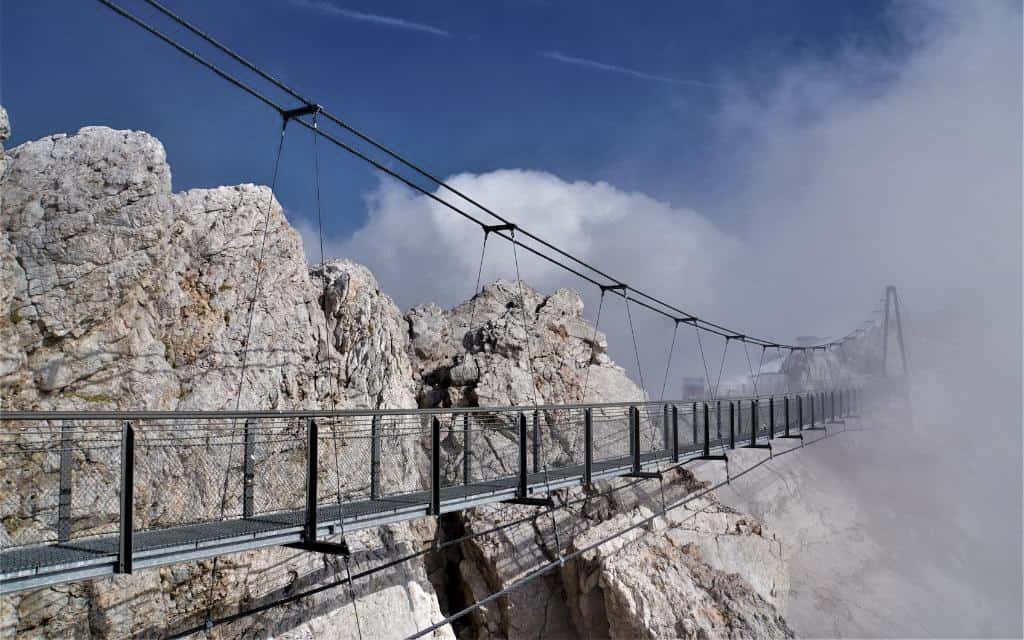
The 100 m long bridge turns into an iron walkway from which you can turn to the Stairs to Nowhere viewpoint. And that’s exactly what it is. The stairs really lead nowhere. All you see is a deep valley. It’s exactly the kind of place where your adrenaline jumps really high :).
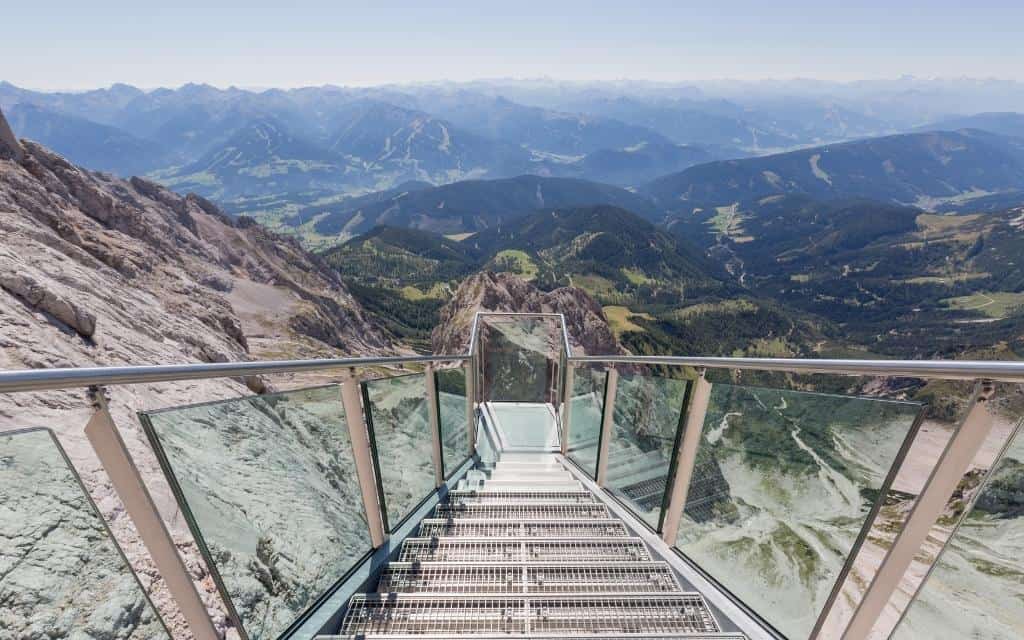
Continue along the iron walkway and you will enter the Dachstein Ice Palace. Would you like to enjoy more panoramic views? Continue towards the Seethalerhütte, which you will find below the highest peak of the Dachstein massif – Hoher Dachstein (2995 m). The route is about 2 km long.
Waterfalls Riesachfälle and Lake Riesachsee
The beautiful Riesachfälle waterfalls are a short walk from the famous Schladming ski resort. Although geographically they are no longer part of the Dachstein mountain range, it is only a short distance away.
Park your car in Seeleiten (there are buses here too) at the end of the Untertalbach valley (in 2021, parking cost €9) and take the orange Alpinsteig Höll trail around the Riesachbach. It takes a good pair of shoes and a sure foot, but it’s worth it. The route continues to Lake Riesachsee. You can extend your journey to the Preintalerhütte mountain hut.
Lakes Gosauseen
The Gosauseen lakes consist of 3 lakes – Vorderer Gosausee, Gosaulacke and Hinterer Gosausee. The route starts at the largest of them, Vorderer Gosausee, where you park and walk around the lake. Most visitors choose to go around the first of the lakes, but if you have time, head to all three lakes in turn, as they are definitely worth seeing.
If you want to enjoy the spectacular views of the Dachstein massif, take the Gosaukammbahn cable car from the Vorderer Gosausee lake and continue on one of the routes – you can choose from easy or more challenging routes.
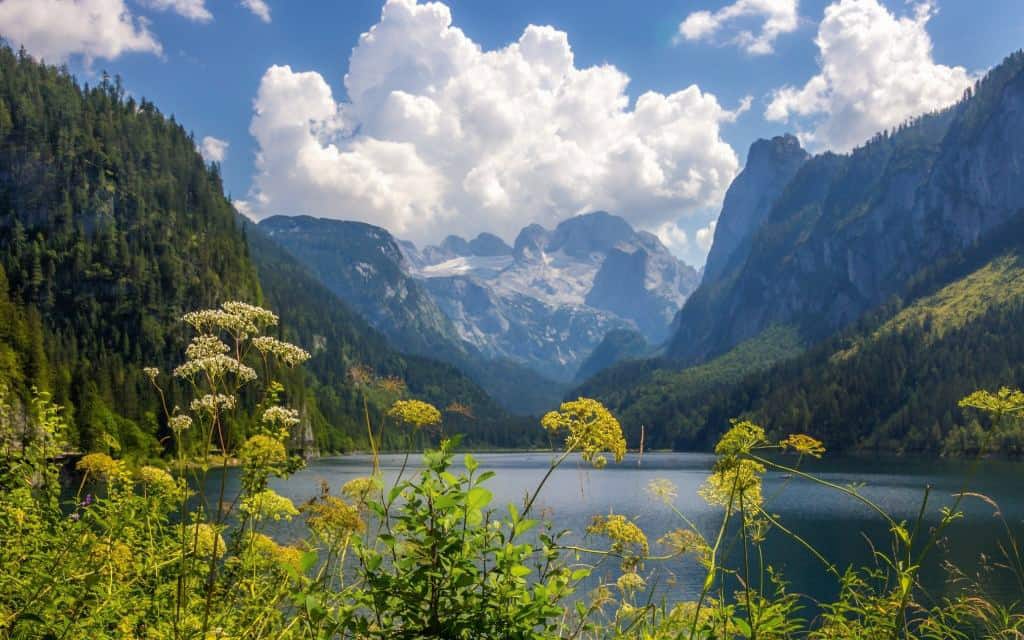
Without children, I recommend climbing to the top of Grosser Donnerkogel (2050 m), which is an easy, sometimes moderately difficult route.
Read the detailed guide to the Dachstein in the previous article.
Where to stay in the Dachstein area:
- Seehotel am Hallstättersee : Cosy hotel with great value for money on the shores of Lake Hallstatt
- Dormio Hotel Obertraun : Fully equipped resort in Obertraun a short walk from the lake (swimming pool, playground, garden, free parking, restaurant).
- Lodge am Krippenstein : Stylish mountain hotel right on the top of Krippenstein with fantastic views
- COOEE Hotel: Fantastic hotel in Gosau, located halfway between the Wolfgangsee and the Dachstein mountains. Possibility of half board, rich facilities, free parking.
- Alpine Club: Fully equipped apartments in Schladming with great value for money, children’s and tennis court and other facilities.
How to save in the Dachstein-Schladming area
The following accommodations include the Dachstein-Schladming Sommercard, which you will receive automatically upon arrival. The card is valid from 18 May to 1 November for anyone staying in partner accommodation for at least one day. Valid from 13:00 on the day of arrival, during the stay including the whole day of departure.
With the card you can travel free on local and regional buses, use the cable cars (Planai, Hochwurzen, Reiteralm and even includes a cable car to the Dachstein glacier if you stay for at least 2 days) + additional discounts on attractions in the area.
Partner accommodation with the Dachstein-Schladming Sommercard:
- Tauernblick : Cozy hotel in Schladming with wellness and half board
- Pension Hofweyer : Traditional alpine guesthouse in Ramsau am Dachstein with spectacular views and garden
- TUI Blue Schladming: Cozy, modern hotel with free parking and great value for money
- JUFA Hotel Schladming: Pleasant three-star hotel in the centre of Schladming, with spa and rich breakfast
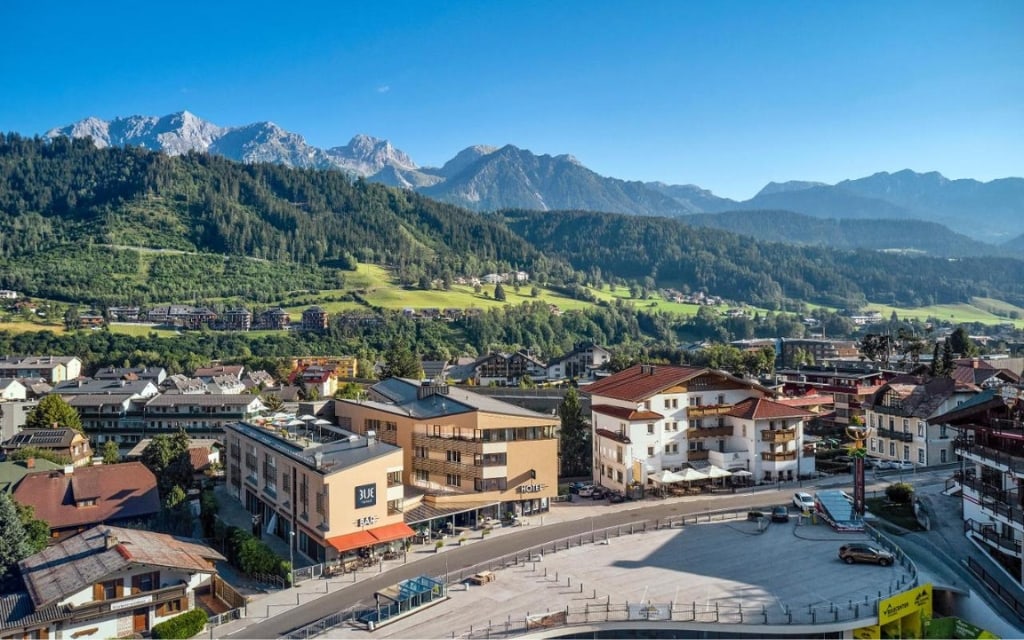
3. Hochkönig Mountains – things to do in the Austrian Alps
The Hochkönig mountain range stretches along the border with Germany and is flanked on the other side by the Berchtesgaden Alps .
Enjoy the area around the Hochkönig glacier, which escapes mass tourism. Here, you’ll enjoy nature all to yourself, soak up the tranquillity of the hiking trails and feel the warmth of the locals who are happy to chat with you.
Hiking in the Hochkönig Mountains, Austria:
Hochkönig glacier.
The Hochkönig glacier is the dominant feature of the whole area with its height of 2941 m. In winter you can ski here, in summer you can go on one of the hiking trails. More information about skiing on the Hochkönig glacier can be found here .
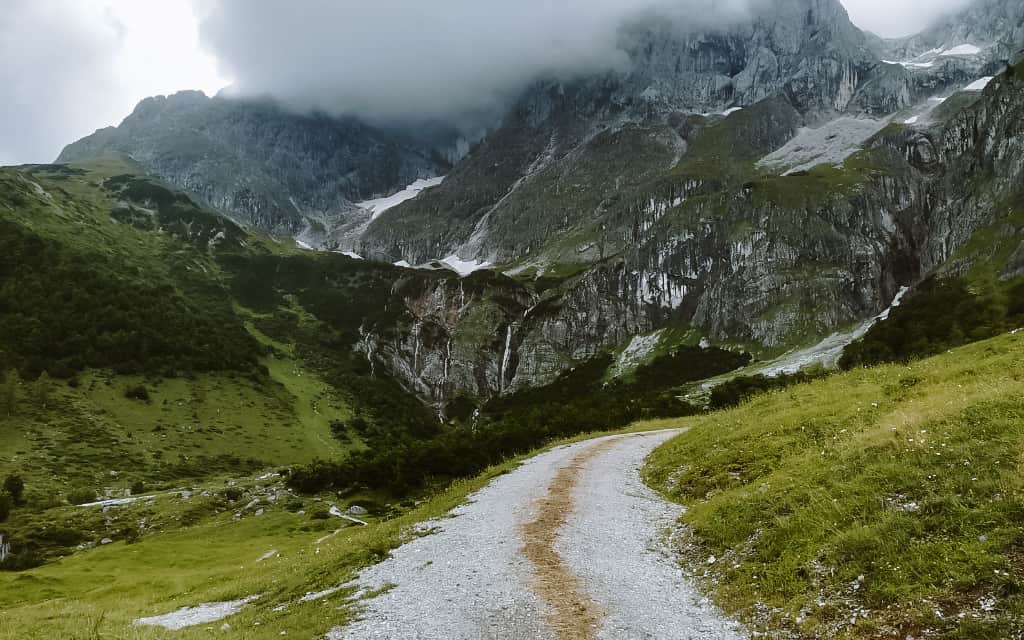
Ascent of the Hochkönig glacier
You can hike up the Hochköng Glacier to its highest point. However, expect a considerable elevation gain of around 1,600 m. It can be done in a day, but you just need to start really early (the climb takes about 5 hours).
Park your car in the Dientner saddle , from where you will head to the Erichhütte mountain hut. At the hut, continue to the right along the red marked hiking trail towards the Hohe Scharte saddle and then the Birgkarscharte saddle. From here you will make the final ascent to the top, where there is a smaller hiking trail.
The way up is strenuous and requires plenty of water and good physical fitness.
Easy route around the Hochkönig massif
If you are looking for an easy, pleasant route suitable for children with nice views, you should definitely choose the Königsweg. It runs along the entire southern part of the Hochkönig and has several access routes that make it easy to get to the trail.
Along the way you will see lots of cows, horses and sometimes a waterfall. You will dine in one of the typical Austrian chalets with typical Austrian smiling service.
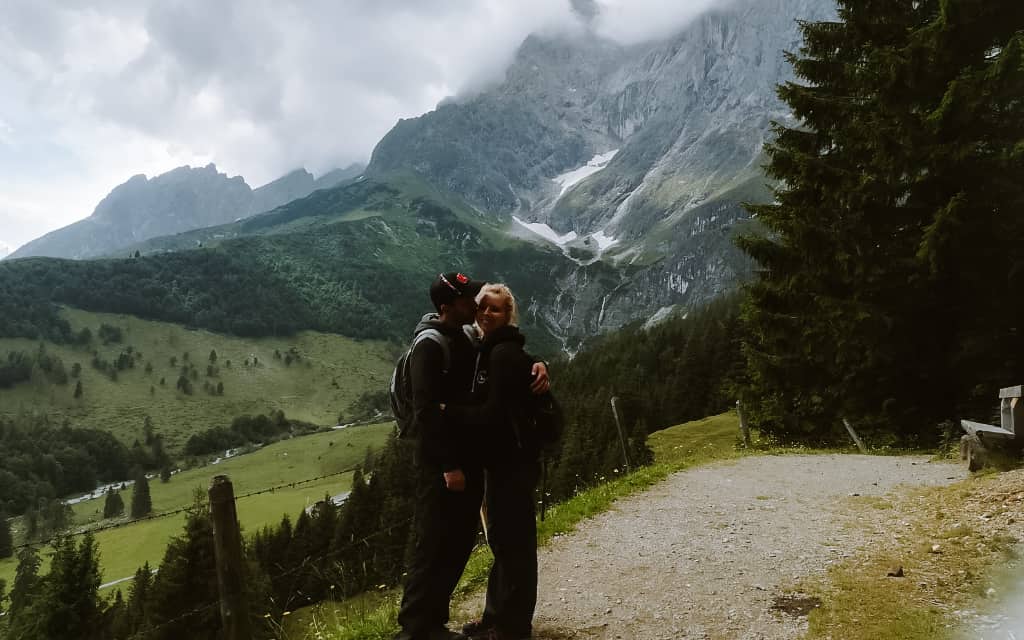
Karbachalm cable car
This viewpoint should not be missed by anyone who wants to have the Hochkönig massif in the palm of their hand.
You can leave your car in the car park at the Karbachalm lower cable car station in Mühlbach am Hochkönig. A restaurant and easy hiking trails await you at the top, from which you can enjoy the surroundings, including Hochkönig.
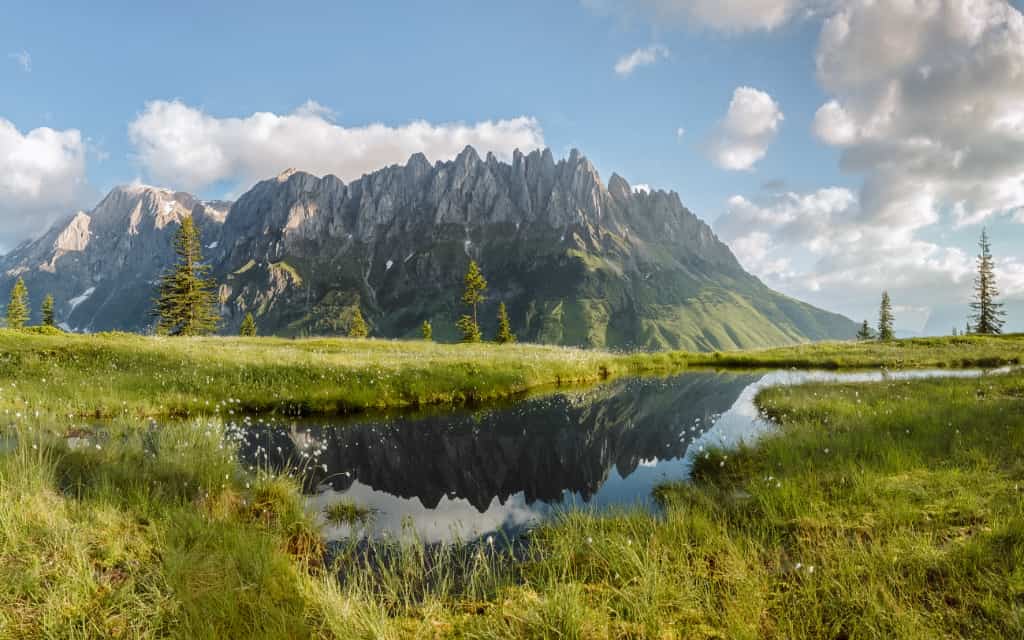
The best accommodation around the Hochkönig Glacier:
- Harry’s home : Stylish rooms and apartments with breakfast included, strategically located in Bischofshofen, from where you can hike to the Dachstein glacier, Salzburg and other nearby places
- Hotel Der Burgblick : Modern and comfortable hotel strategically located for exploring the Hochkönig Glacier and the Salzkammergut around Salzburg
- Ramada Apartments : Fully equipped, cosy furnished apartments, with swimming pool and free parking
4. High Tauern National Park, Alps in Austria
Hohe Tauern National Park forms the backbone of the Austrian Alps. Immerse yourself in unspoilt alpine nature with steep peaks, cascading waterfalls and lush meadows.
Enjoy a hike on one of the trails and take a drive along the alpine road, from which you can enjoy fantastic views of the Grossglockner, Austria’s highest peak.
HOTELS ZELL AM SEE – KAPRUN 😴
These accommodations include a SommerCard, which gives you free access to cable cars, public transport and attractions in the area. All guests will receive their card automatically on arrival. Valid from 15 May to 31 October.
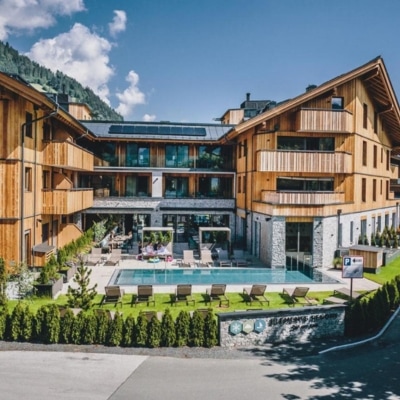
Elements Resort Zell am See
Stylish apartments with swimming pool
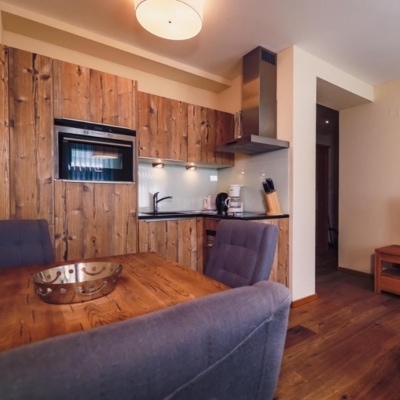
The House Zell am See
Modern apartments
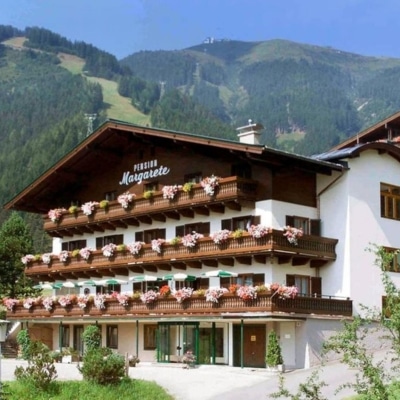
Pension Margarete
Traditional Alpine hotel
Things to do in the Hohe Tauern National Park:
Kitzsteinhorn glacier.
The Kitzsteinhorn glacier is one of the most popular places in Austria to enjoy year-round skiing. In addition, there are plenty of other things to do – explore the Alps from the Summit World 3000 viewpoint, hike one of the hiking trails or rent a mountain bike and ride the trails. More information about the Kitzsteinhorn glacier can be found here.
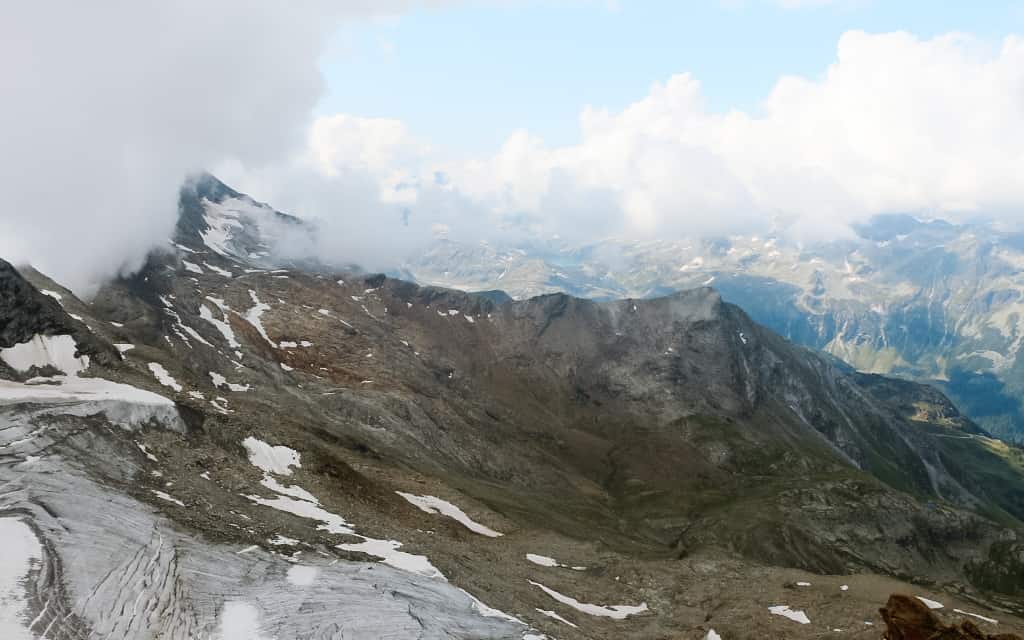
Wasserfallboden and Mooserboden dams
The sight of the high mountain dams Wasserfallboden (1672 m) and Mooserboden (2036 m) made me fall in love with the Alps for the first time. The dams lie in the Kapruner Tal valley and can be walked in one day.
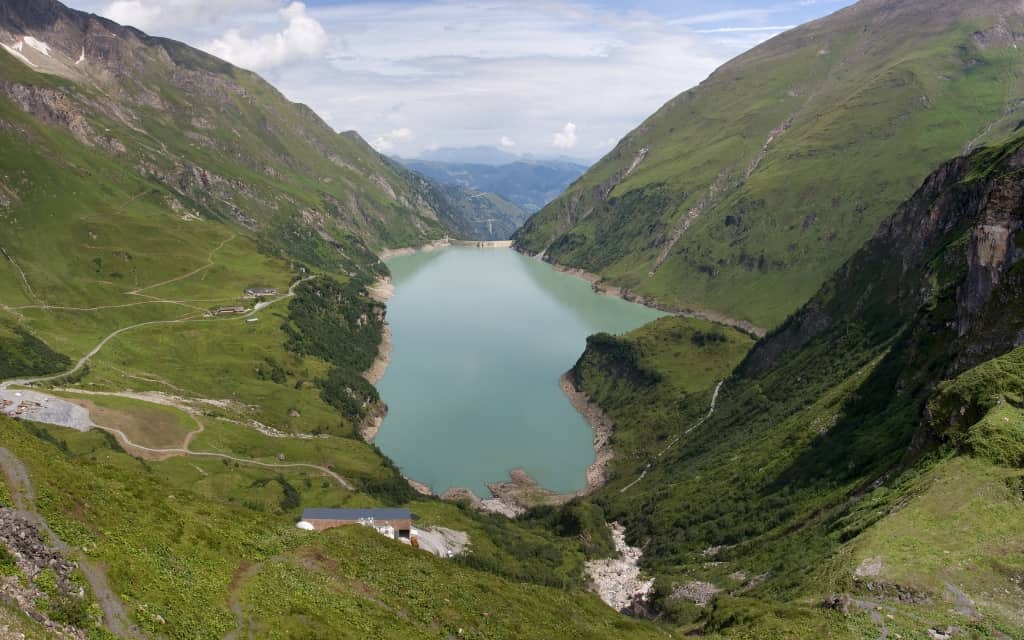
The ticket office can be reached by bus 660 (runs from Zell am See via Kaprun) or by car, which you can park in the Kesselfall parking garage (free of charge). Buses leave from the ticket office and take you to the dam together with the funicular. The whole trip is an experience in itself, especially the steep cable car.
On this link you will find up-to-date information on the Mooserboden dam (ticket prices, opening times, cable car, news).
The Grossglockner Alpine Road and the Pasterze Glacier
Are you looking for a day trip where you can enjoy the beautiful nature and views from morning to night? Take the Grossglockner Alpine Road, where you will see, among other things, the longest Pasterze glacier in the Hohe Tauern National Park directly below the Grossglockner peak. The marmots will run around you and you will enjoy the view of the highest peaks of the Austrian Alps.
The Grossglockner Hochalpenstrasse is one of the most beautiful panoramic roads and certainly one of the most beautiful places in Austria. Don’t miss it if you plan to visit the Austrian Alps in summer.
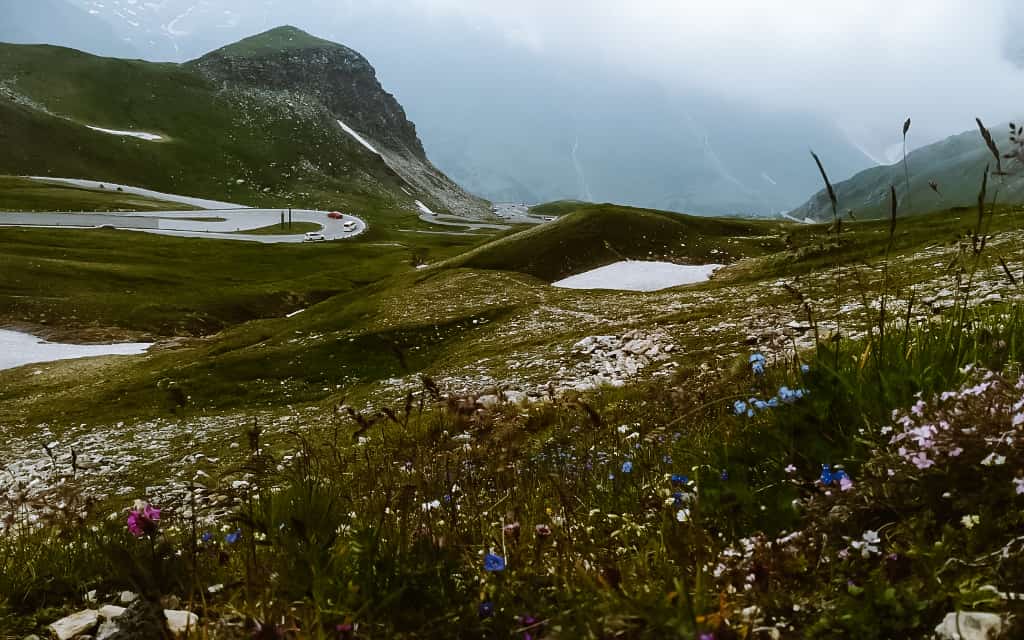
The road connects Fusch an der Grossflocknerstrasse and Heiligenblut and is 48 km long.
Along the way, near Heiligenblut, there is a turn-off to the Kaiser-Franz-Josefs-Höche lookout, from where you can see the Pasterze glacier and the Grossglockner peak.
Check here for up-to-date information about the Grossglockner Alpine Road (price, opening hours, news).
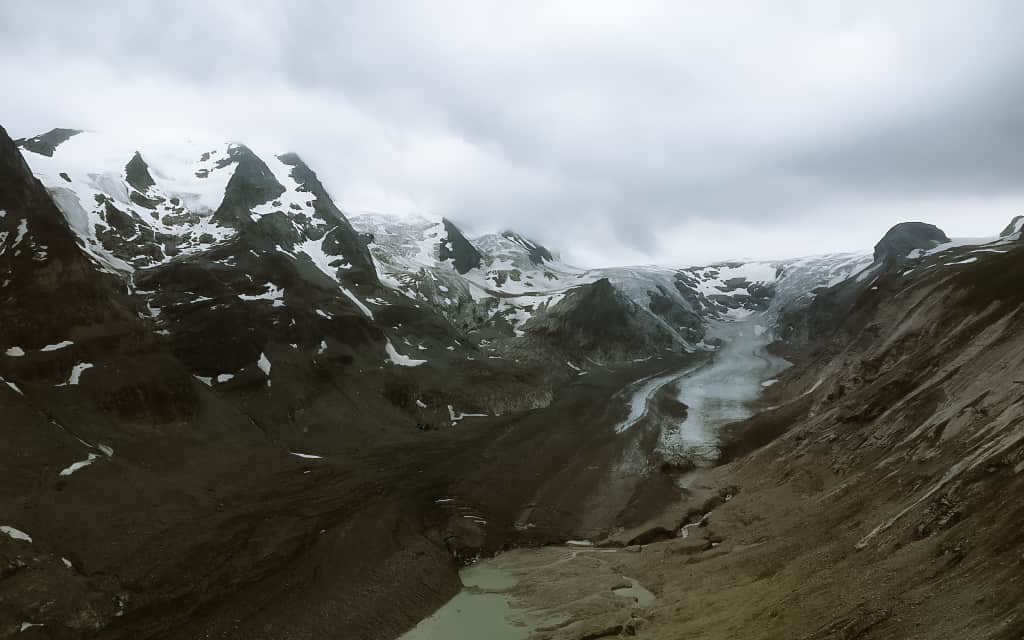
Lakes Grünsee, Weißsee and Tauernmoossee
The Alpine lakes Grünsee, Weißsee and Tauermoossee are located near the Enzingerboden power station near Uttendorf. This is also the starting point, as the lower station of the cable car to Weißsee with a stop at Grünsee is located here.
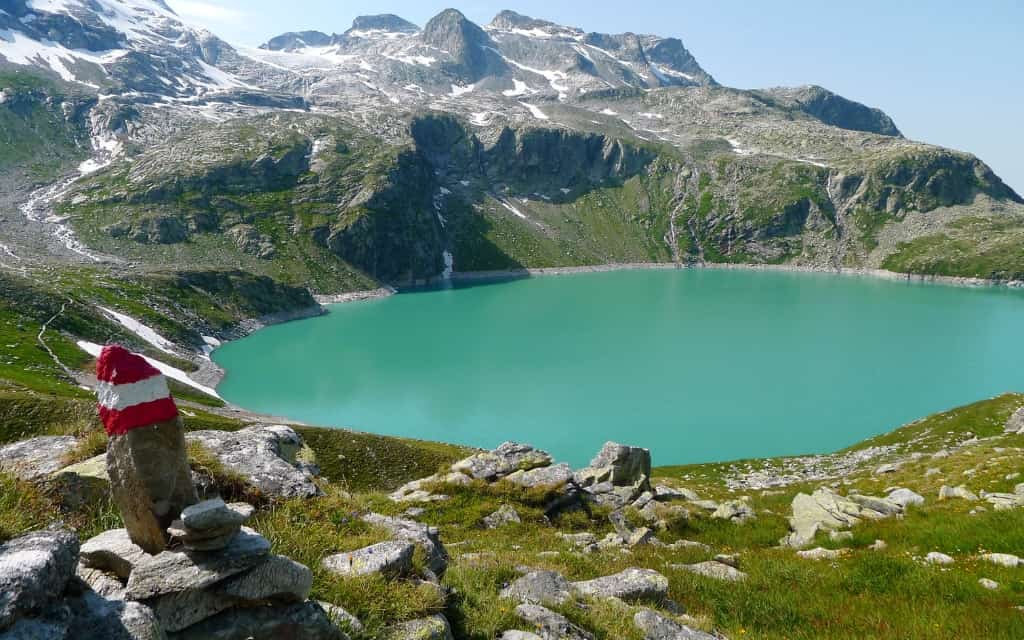
The cable car takes you to the first of the lakes, Lake Grünsee. From Grünsee another cable car leads to the highest lake, Weißsee. If you plan to walk, count on about 2-3 hours to the Weißsee.
The surroundings of the Weißsee are interwoven with hiking trails – easy trails and challenging hikes. For example, you can descend to the Tauernmoossee reservoir. You can also walk (or cycle) here from the power station in the opposite direction.
Apart from hiking, you can also enjoy great skiing on the glacier – more information here .
Read more about the Hohe Tauern National Park in the previous article (photos, description of routes, map). Zell am See is strategically located for exploring the Hohe Tauern. In addition, selected accommodation includes a SommerCard with free access to lifts and attractions – see article for more information .
Where to stay in the Hohe Tauern National Park:
- Elements Resort Zell am See: Four-star resort with fully equipped apartments, outdoor pool, restaurant, fitness room and free parking.
- AvenidA Mountain Lodges: Stylish aparthotel in Kaprun with complete facilities for a relaxing holiday
- Das Alpenhaus Kaprun: Modern hotel in the centre of Kaprun with spa, swimming pool and half board included
- Hotel LukasMayr: Pleasant three-star hotel in Bruck an der Großglocknerstraße with half board
- Residence AlpenHeart : Cheap hotel in Bad Gastein with Czech-speaking staff
5. Zillertal Alps – things to do in the Austrian Alps
On the Austrian-Italian border, in the region of Tyrol , the Zillertal Alps stretch. They will amaze you with their glaciated peaks, long valleys, clear lakes and far-reaching views.
Visit the Krimmel Waterfalls, the largest waterfalls in Austria, enjoy the view of the Schlegeis Dam or ski all year round on the Hintertux Glacier.
HOTELS ZILLERTAL ALPS 😴
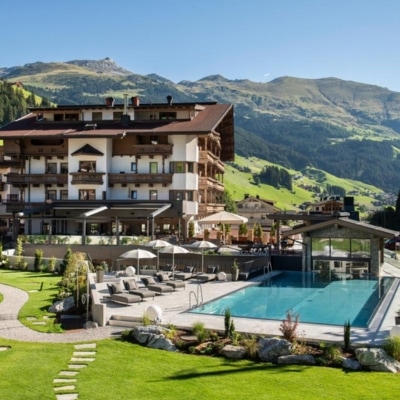
Das Alois 4 Sterne Superior
Modern hotel with wellness
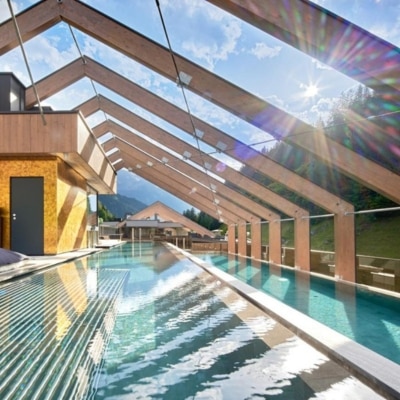
ZillergrundRock Mountain Resort
Luxury resort
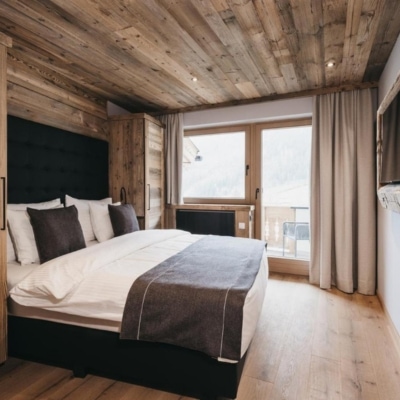
VAYA Zillertal
Stylish accommodation with swimming pool
Things to do in the Zillertal Alps:
Hintertux glacier.
The Hintertux Glacier is one of the largest glaciers in the world. If you like to ski, this is a guarantee that you will ski here all year round. More information about skiing on the Hintertux glacier .
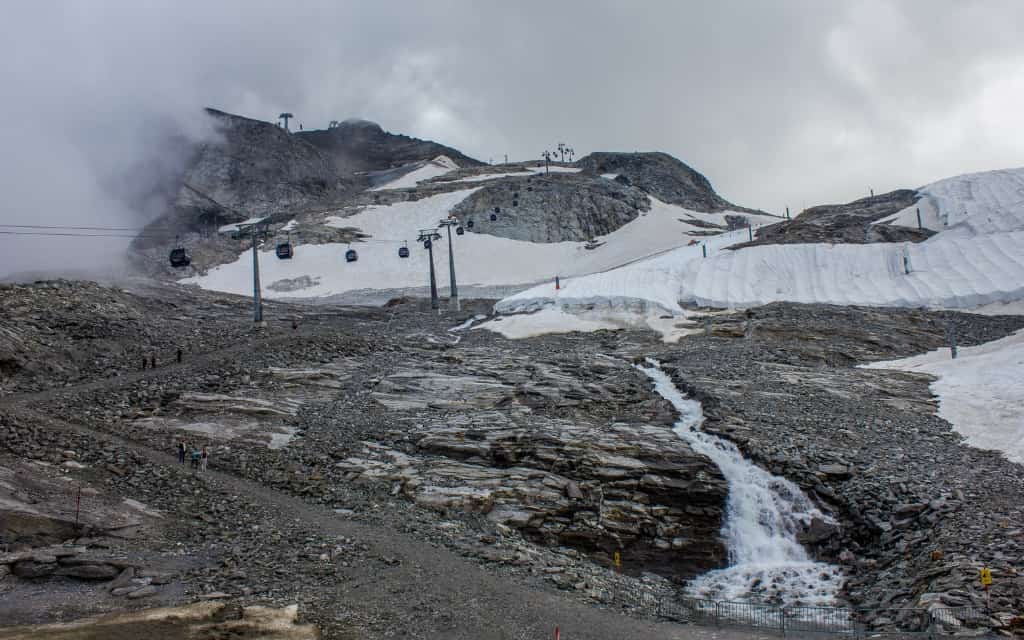
Tip: The best accommodation for glacier access is Hotel Thermal-Badhotel Kirchler which is just a few minutes from the cable car and provides all facilities including a spa and restaurant.
Schlegeis Stausee Alpine Road and Schlegeis Dam
Another high mountain road in Austria is the Schlegeis Stausee Alpine Road, which lies just over the border from Italy . In 2023, you will pay €15.50 by car and €11.50 by motorbike. It is open from mid-May to the end of October.
The road is 13 km long and will help you bridge 800 vertical metres to an altitude of 1780 metres. The Schlegeis Stausee may not offer the views of the Grossglockner road, but it makes up for it at the finish with the Schlegeis high-mountain dam with its clear water surrounded by Alpine peaks.
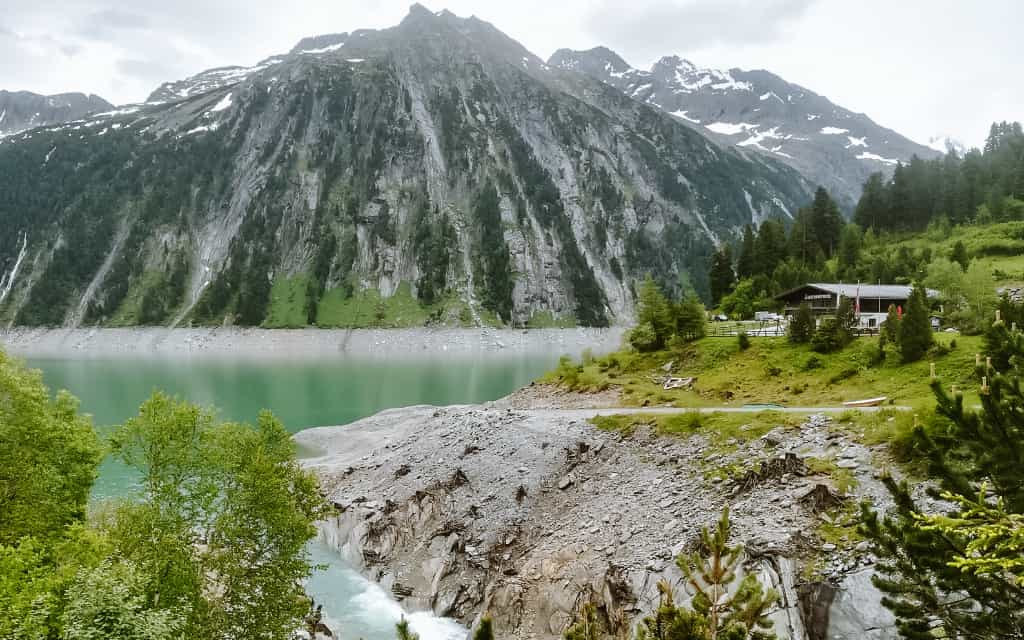
Take a walk around the dam on a well-maintained path or follow one of the hiking trails:
Hiking trail to Pfitscher’s cottage
Pfitscher’s hut (Italian Rifugio Passo di Vizze) is just over the border in Italy. The route is 7.4 km long in one direction and will take you just over 2.5 hours. Most of the time you go through the valley and only towards the end you have to climb up to the Pfitscherjoch saddle. From here, you are just a short walk from the hut, which is located right by the Jochsee lake. The path is easy and part of a cycle path.
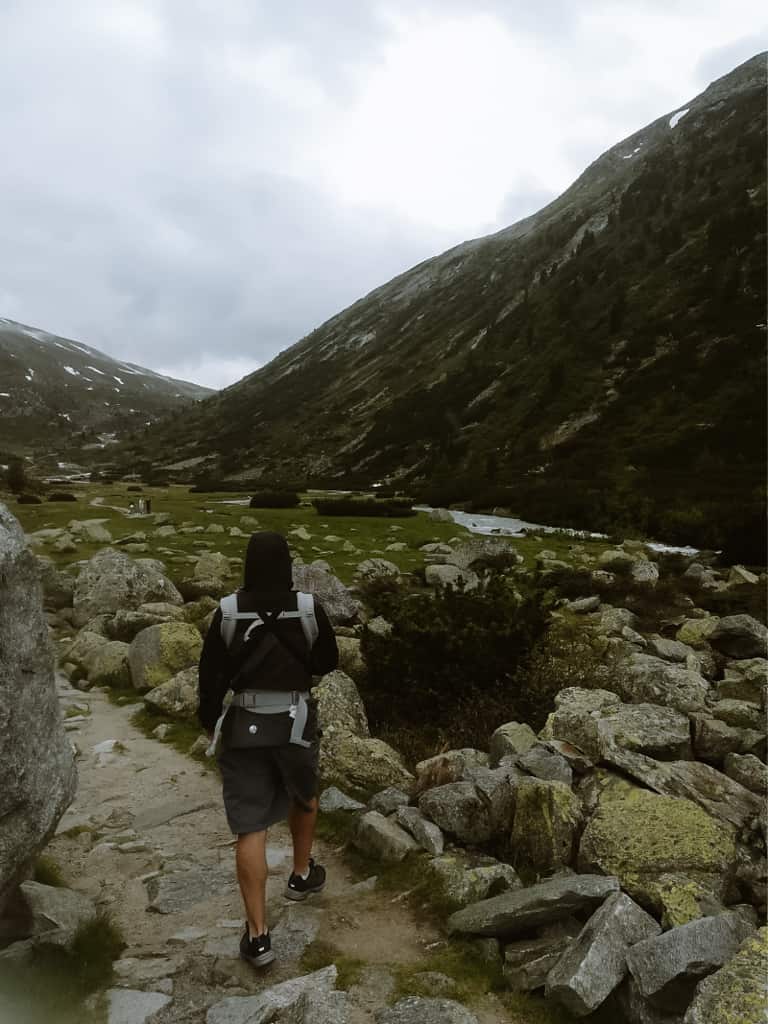
Tourist route to Olperer’s cottage
Olperer’s hut is located directly above the Schlegeisspeicher dam, so you can enjoy the best view of the dam from here. Lots of people come here for the iconic photo on the small suspension bridge. At the top you will climb 600 vertical metres (2 hours).
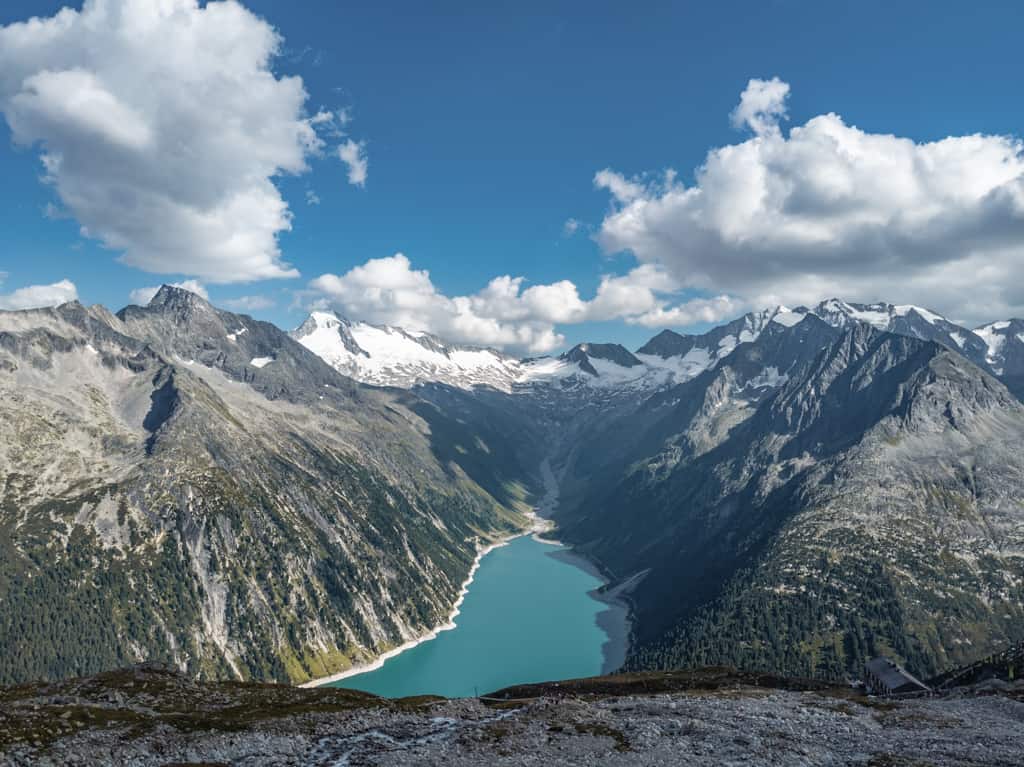
Zillergründl Dam
The Zillergründl dam is located east of Mayrhofen at an altitude of 1850 m. You can walk directly to the dam along a 4 km trail from the Bärenbad Inn. The second, more popular option is the bus directly from Mayrhofen station, which runs every hour during the summer season.
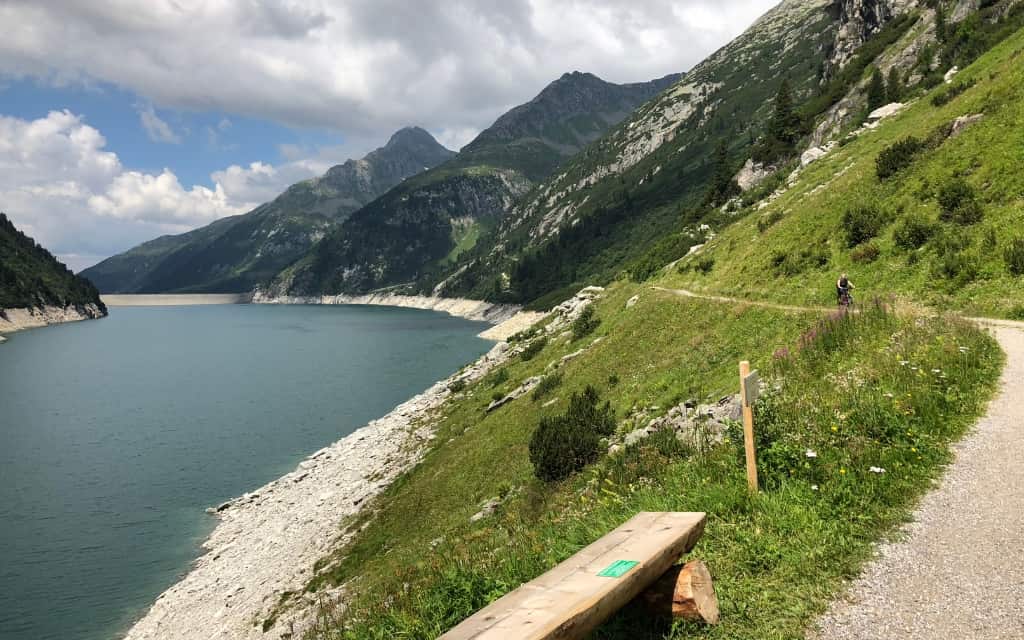
You can take an easy walk around the reservoir to the Hohenaualm hut (1.5 hours one way; suitable for bikes and strollers). Would you like to see the dam and its surroundings from a bird’s eye view? Then head to the Plauener Hütte (less than 2 hours away).
Zillertal high mountain road
Experience breathtaking views of the Zillertal Alps on the 50 km long Zillertaler alpine road. The road takes you from 500 m to 2020 m.
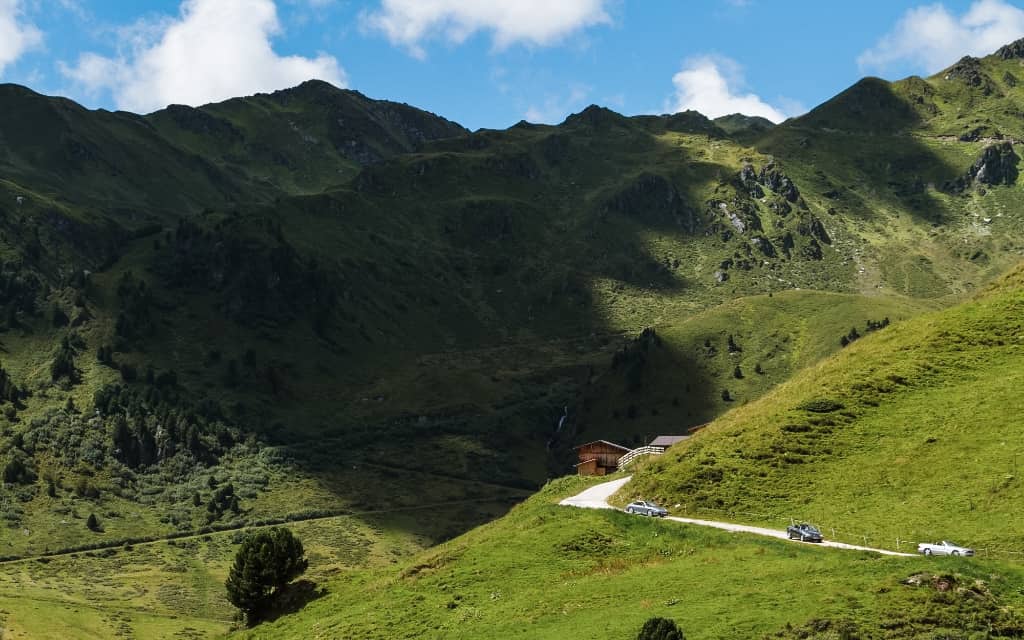
In 2023 you will pay 8 € for the passage (motorbikes 5 €). It’s definitely worth the price, because you can easily spend the whole day here. You can park your car in one of the car parks, have a refreshment in one of the mountain huts and choose a hiking trail to continue into the mountains. Check out the official website for more information on the hiking trails.
Between the peaks of Penken (2095 m) and Knorren (2081 m) lies the popular Finkenberg area. It is easily accessible and ideal for a trip with the family. You can reach the top on foot or by cable car from Finkenberg or Mayrhofen.
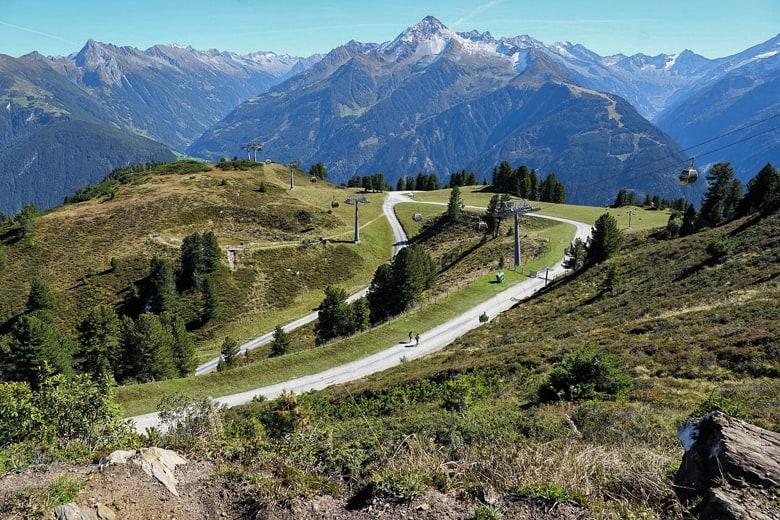
Walk along easy trails, enjoy the views from the restaurant or continue on to the top of the Wanglspitze on the excellent ridge route (1.5 hours one way).
Krimmel Waterfalls
The Krimmel Waterfalls are 380 metres high waterfalls where you will not be left with a dry thread. The waterfalls are divided into three cascades connected by a 4 km long paved path. There are 11 stops along the way, where you can almost reach the waterfalls. The higher you go, the fewer tourists there will be at the falls.
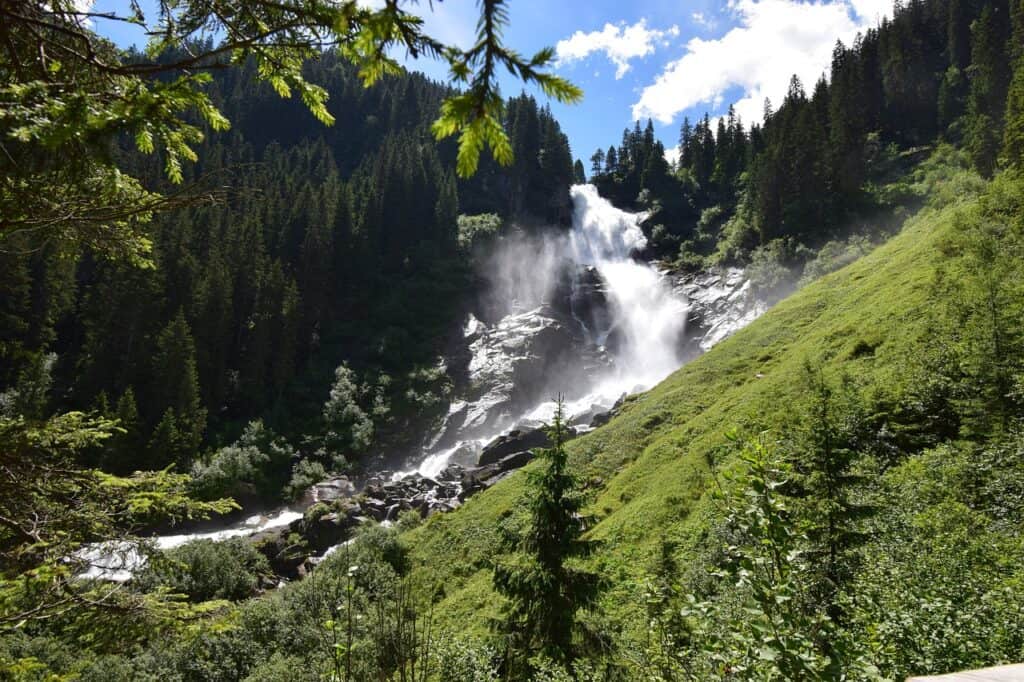
The Krimmel Waterfalls are reached via a turn off the Gerlos Strasse toll road. It’s passable all year round (don’t forget the necessary tyre gear in winter) and will set you back €11 (motorbikes €8) in 2023).
At the Krimmel Falls there is a huge parking lot, an information centre and stalls along the path to the falls. There is a small fee to enter the waterfalls.
Where to stay in the Zillertal Alps:
- Hotel Thermal-Badhotel Kirchler : Popular hotel a short walk from the cable car to the Hintertux glacier, with restaurant and spa
- das Alois 4 Sterne Superior : Stylish hotel in Tux with high quality service and excellent cuisine (half board option):
- ZillergrundRock Luxury Mountain Resort : Luxury resort in the Mayrhofen valley with rooftop pool, spa and excellent half board included
- VAYA Zillertal : Stylish four-star hotel with swimming pool, spa and half board
- Explorer Hotel Zillertal : New, modern hotel in the middle price range, with sun terrace, bar and wellness area
6. Gesäuse National Park – Austrian Alps in summer
The Gesäuse National Park is part of the Ennstaler Alps, which are not among the highest, but still absolutely breathtaking.
The park is located in the north of Austria between Admont and Hieflau. It is characterized by lush green forest combined with rugged limestone peaks. Both climbing enthusiasts and those who just like to wander through the beautiful nature will find their place here.
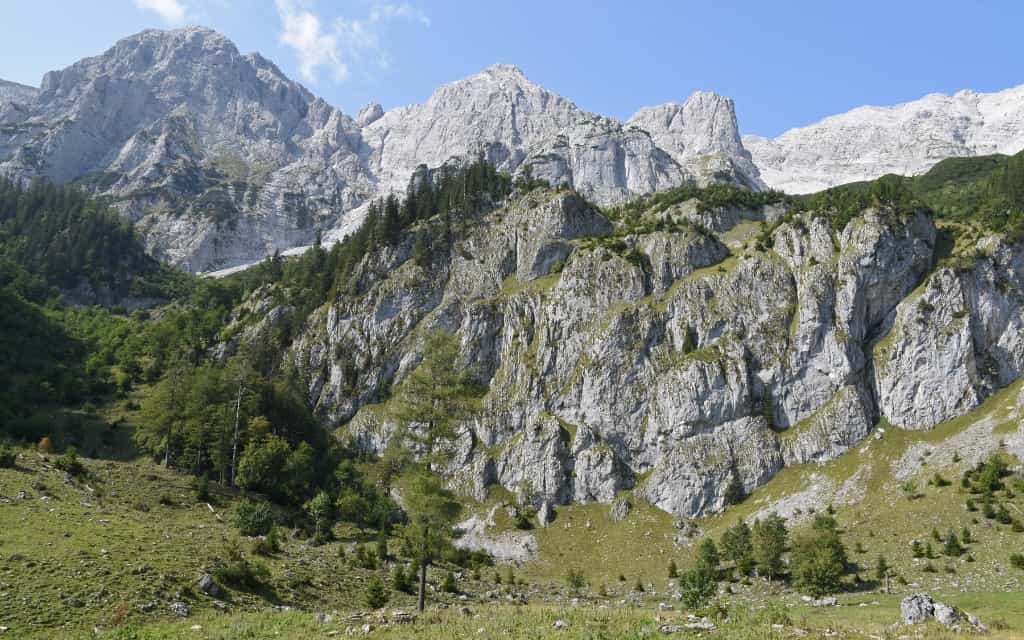
Excursions and hiking in Gesäuse National Park:
Hike to the heßhütte mountain hut and the summit of hochzinödl.
The Heßhütte is a popular landmark in the Gesäuse National Park at an altitude of 1699 m, located in the saddle between the Hochtor and Zinödl peaks. The hut can be reached via the alpine pastures after a 2.5-hour walk from the south side in the direction of Johnbach (car park at the Kölblwirt restaurant ).
You can spend the night in the hut and the next day go on a moderately demanding hike over the Hochzinödl peak (2191 m) on the panoramic trail through the Zinödl mountain range. The views of Hochtor, the highest peak in the Gesäuse National Park, are divine.
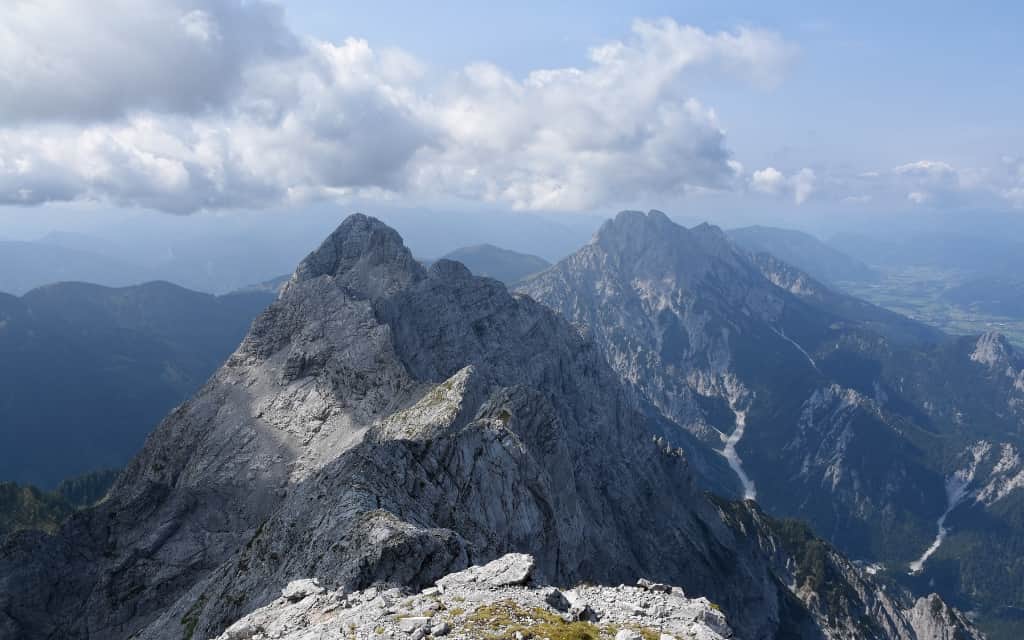
Trek to the Haindlkarhütte
The mountain hut Haindlkarhütte can be found at an altitude of 1150 m in the shadow of the Hochtor rock massif (2369 m). There is a moderately demanding trail leading here.
The route to the Haindlkarhütte starts at the Haindlkarparkplatz car park , which can also be reached by bus. From here you will start from an altitude of 600 m on the trail 658, which will lead you to the hut. Then you can continue on to the Gsengscharte saddle (1228 m).
Long-distance route Hüttenwanderweg
The Hüttenwanderweg is a long-distance route, part of which you can walk between Johnsbach and Radmer an der Stube. In this section the route is 10 hours long, with no guarded sections.
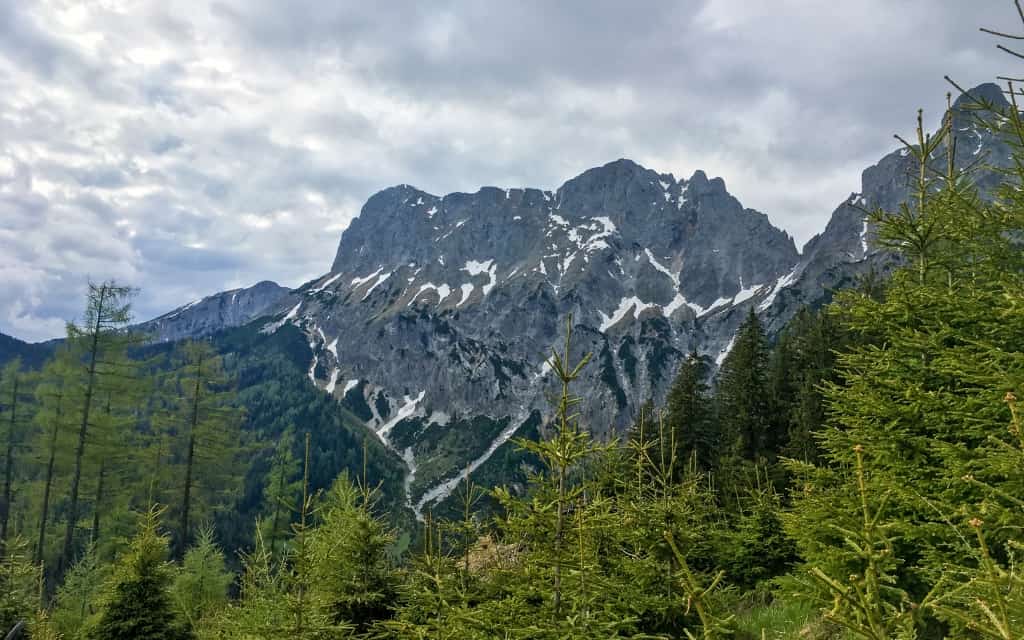
Where to stay in Gesäuse National Park:
- Pension Triebenerhof (Trieben)
- Pension Landgasthof Buchner (Admont)
- Haus Loidl (Sankt Gallen)
7. Lienz Dolomites – best places in the Austrian Alps
Who wouldn’t love the Italian Dolomites . Did you know that you can experience a similar sight in the vicinity of Lienz, Austria?
The Lienz Dolomites are a mountain group belonging to the Gailtal Alps, which are part of the Southern Limestone Alps. Unlike the Italian Dolomites, the Lienz Dolomites do not contain any limestone.
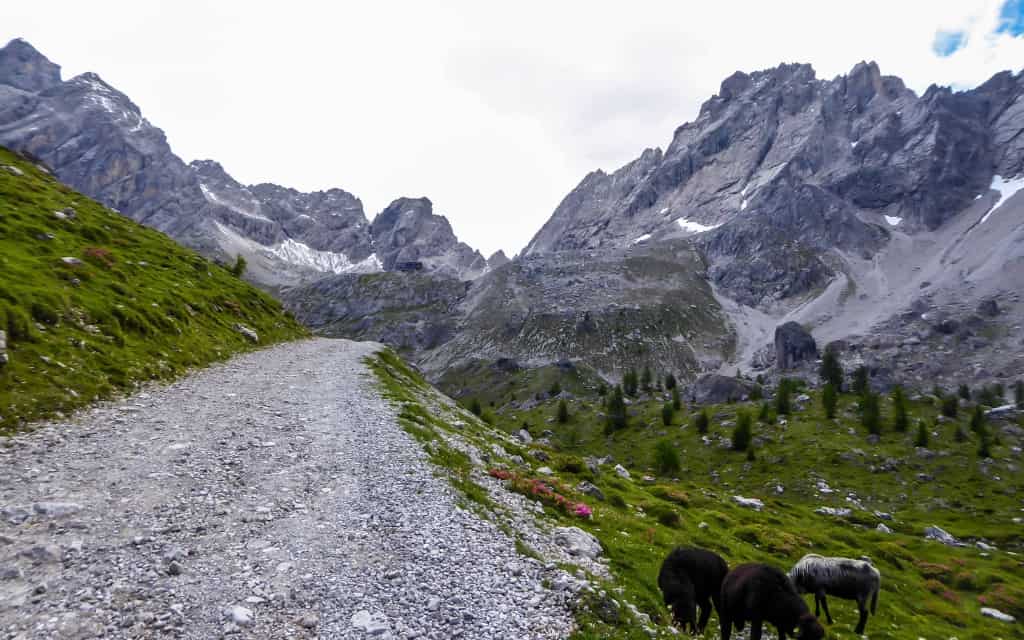
Hikes and hiking trails around Lienze, Austria:
Karlsbader hütte and lake laserzsee.
The mountain hike starts at the Dolomitenhütte hut, from where you start along the trail towards the Karlsbader Hütte and Lake Laserzsee (ascent about 2 hours).
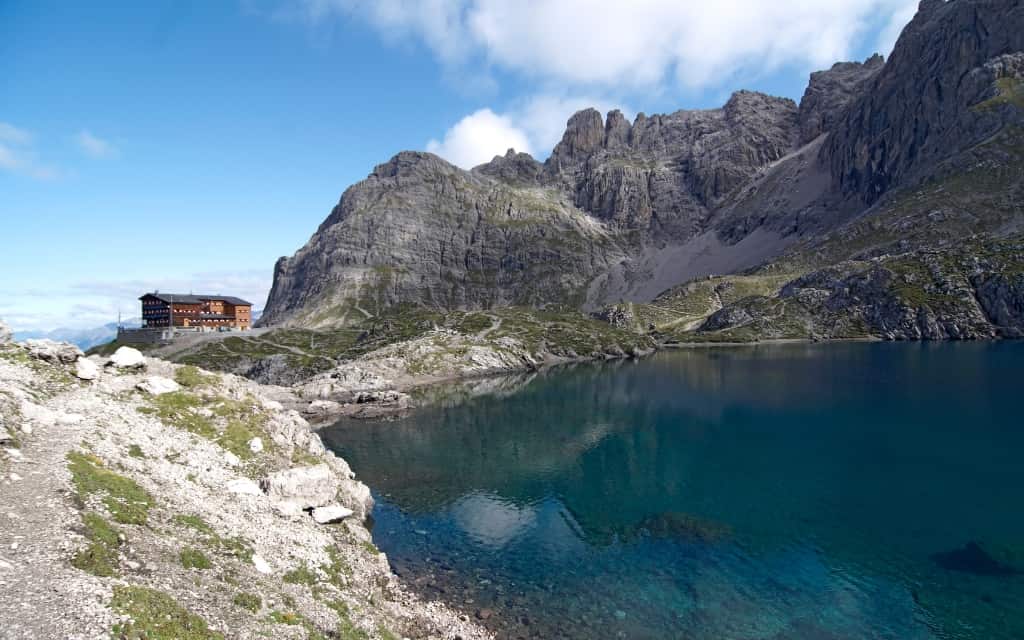
Tristacher See
Lake Tristacher lies south of Lienz. It is a place where you can enjoy a great swim or a beautiful walk around the lake surrounded by mountains. You can park right by the lake or walk here directly from Lienz (about 1.5 hours from the centre).
Steinermandl Peak
The Steinermandl peak can be found north of Lienz at an altitude of 2213 m. It is very easily accessible by cable car and the views from here are fantastic.
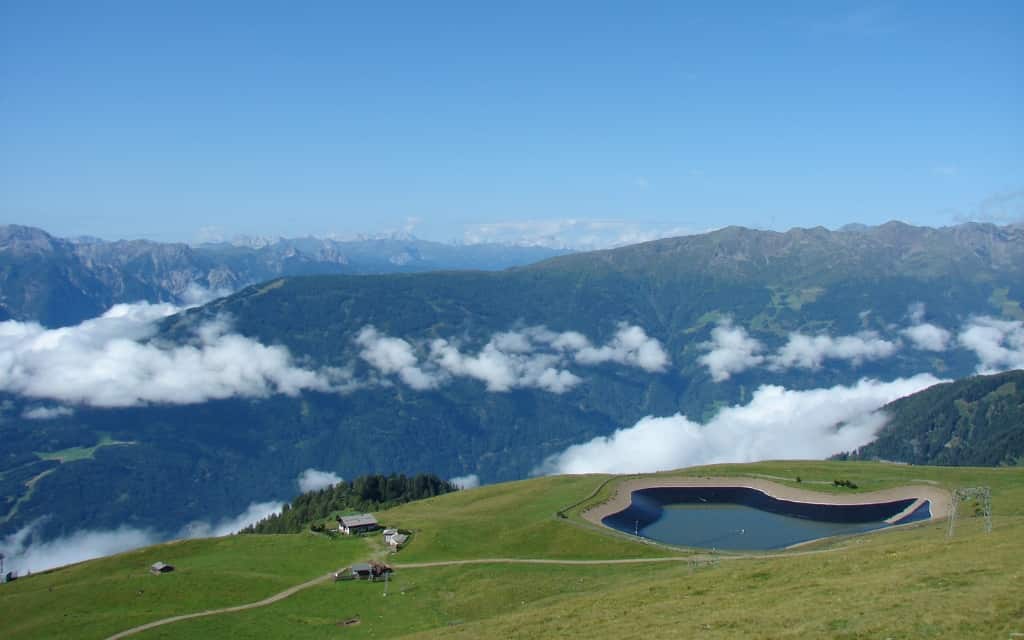
The place is an ideal starting point for several hiking trails. For example, the easy route to Lake Neualplseen around the Goiselemandl peak (2433 m), which takes 2.5 hours round trip.
Hochsteinhütte and Hochstein Peak
The mountain hut Hochsteinhütte is another popular excursion point. You can reach the hut by a toll high-mountain road. The hut is located just below the Hochstein peak (2057 m), from where you can continue along the marked trails.
Where to stay in the Lienz Dolomites:
- Hotel Holunderhof : Modern aparthotel with all facilities
- Walter’s Gästehaus : Comfortable, fully equipped apartments suitable for families with children
- Haus Elena : Cheap, clean B&B with garden and mountain view
8. Silvretta Mountains – Austrian Alps in summer
Not far from the border with Switzerland lies another beautiful part of the Alps – the Silvretta Mountains.
Silvretta is largely in Switzerland, but the Austrian part is more popular for tourists. The mountain range attracts all those who want to admire the more than 3000 m high peaks, glaciers and green river valleys.
Excursions and hiking tours in the Silvretta Mountains:
Silvretta high mountain road.
The Silvretta high mountain road takes you past lakes, one of which is more beautiful than the other. The road leads from Partenen in Montafon to Galtür. Its length is 22.3 km and the highest point is the Bielerhöhe saddle (2032 m).
The Silvretta Hochalpenstrasse is charged at €18 (€14.50 for motorcycles) – prices are valid for 2023.
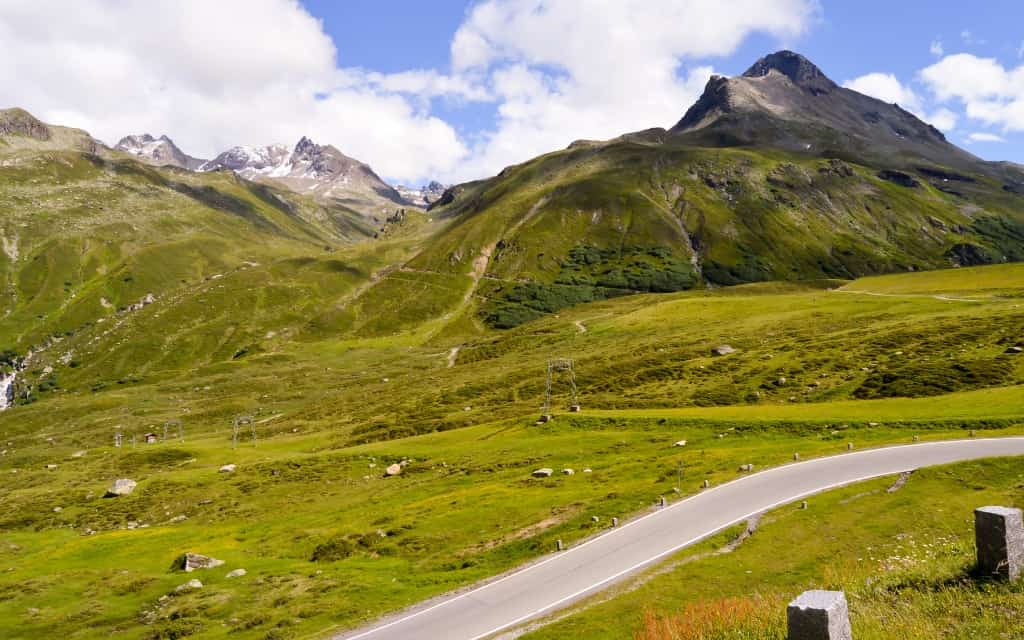
One of the attractions of the Silvretta Hochalpenstrasse are lakes. At the Bielerhöhe Pass you will pass Silvretta Stausee and then Vermunt Stausee towards Partenen. From Silvretta Stausee you can hike further up the mountain to the Wiesbadener Hütte.
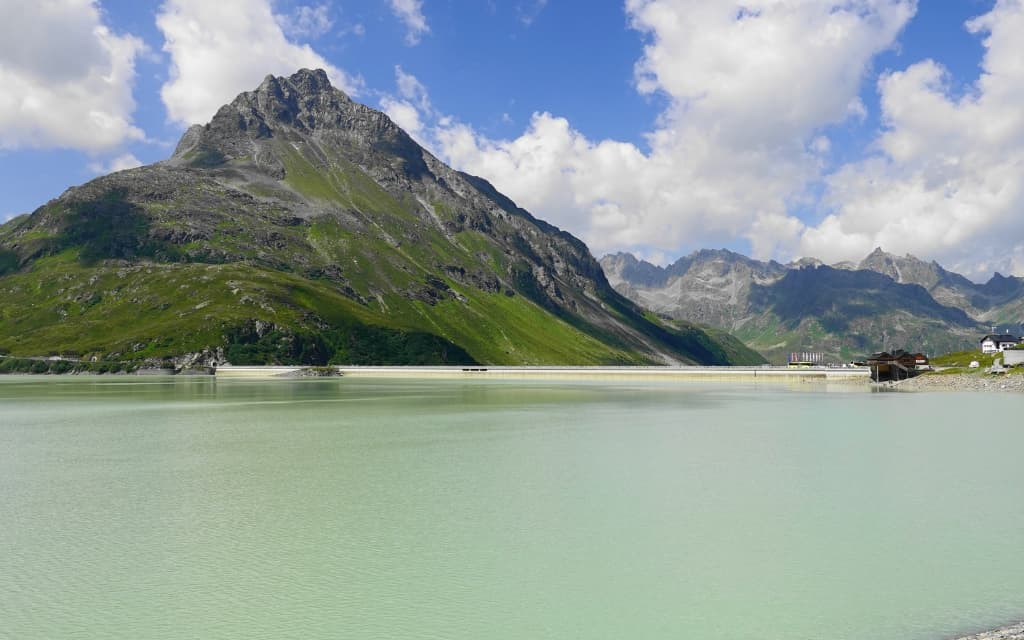
On the other side of the Silvretta mountain road lies the popular Kops Stausee lake. Unlike the previous two lakes, you can only get here on foot or by bike. There are several trails to choose from – the shortest is about 5 km long (2 hours).
Montafon Valley
The Montafon Valley is one of the most beautiful valleys in the Austrian Alps, starting in the Verwall Alps in the north and stretching south to the Silvretta Mountains. A number of hiking trails lead here. All you have to do is pull on your hiking boots and head out into the mountain countryside.
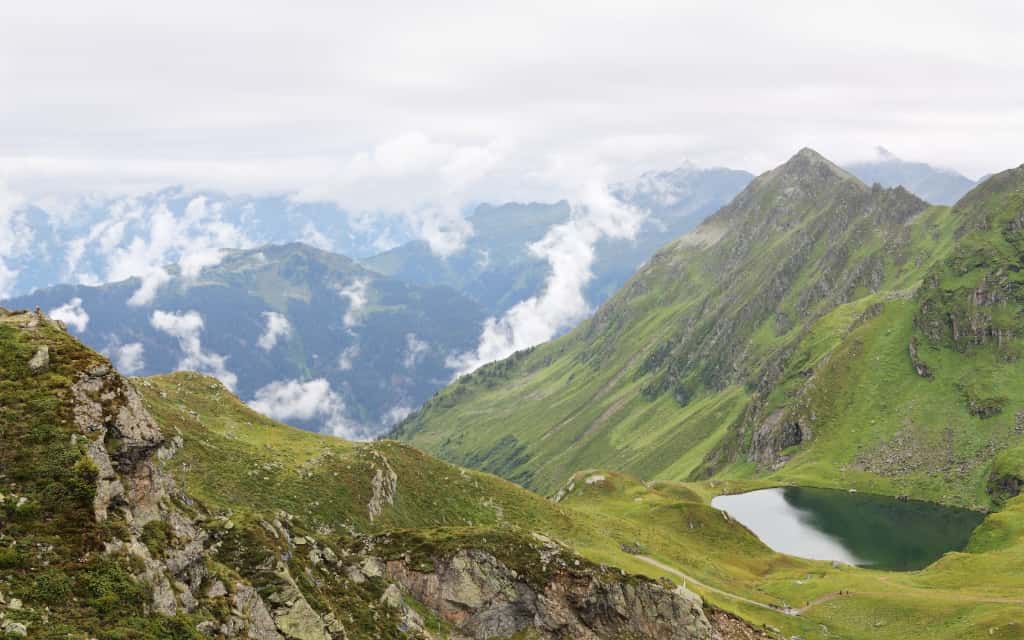
Where to stay in the Silvretta Mountains:
- All-Suite Resort Paznaun : Modern mountain aparthotel with outdoor pool and wellness area
- TUI BLUE Montafon: Four-star hotel in the Montafon Valley with complete facilities, wellness and half board
- Alphotel Garni Salner : Cozy hotel in the mountain town of Ischgl with great value for money
9. Lechtal Alps, Austrian Alps
The Lechtal Alps can be found in the west of Austria in Vorarlberg. It is a small mountain range, the main centre of which is Lech am Arlberg.
If you’re looking for more peace and quiet, head here. There are far fewer people here than, for example, around Dachstein or Zell am See.
Hiking and things to do in the Lechtal Alps:
Lakes formarinsee and spullersee.
The journey starts at Lake Formarinsee, reached by bus from Lech. You can walk around the lake to the Freiburger Hütte, from which you will have a great view of the popular Rote Wand (2704 m).
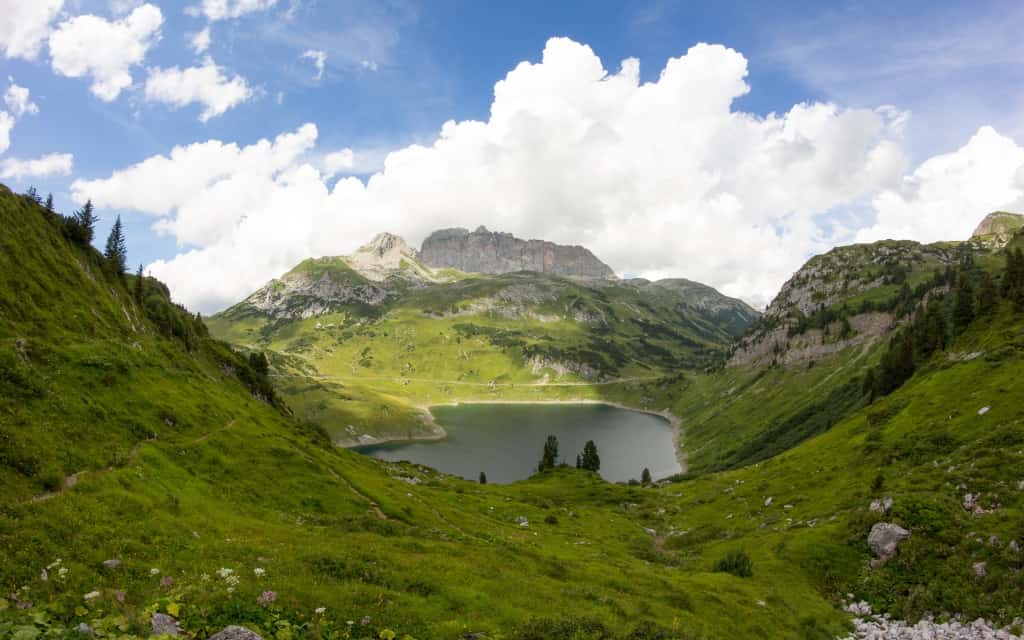
From the hut you continue towards Steinernes Meer (translated as “stone sea”) and Spullersee. The more challenging part is about half an hour through the Steinernes Meer and then around the Gehrengat ridge, where you will appreciate hiking poles. The high valley leads to the Spullersee lake. The trail is moderately difficult and in wet conditions in the area of the rocky sea it is harder to walk.
From Lake Spullersee you can then take the bus back to Lech.
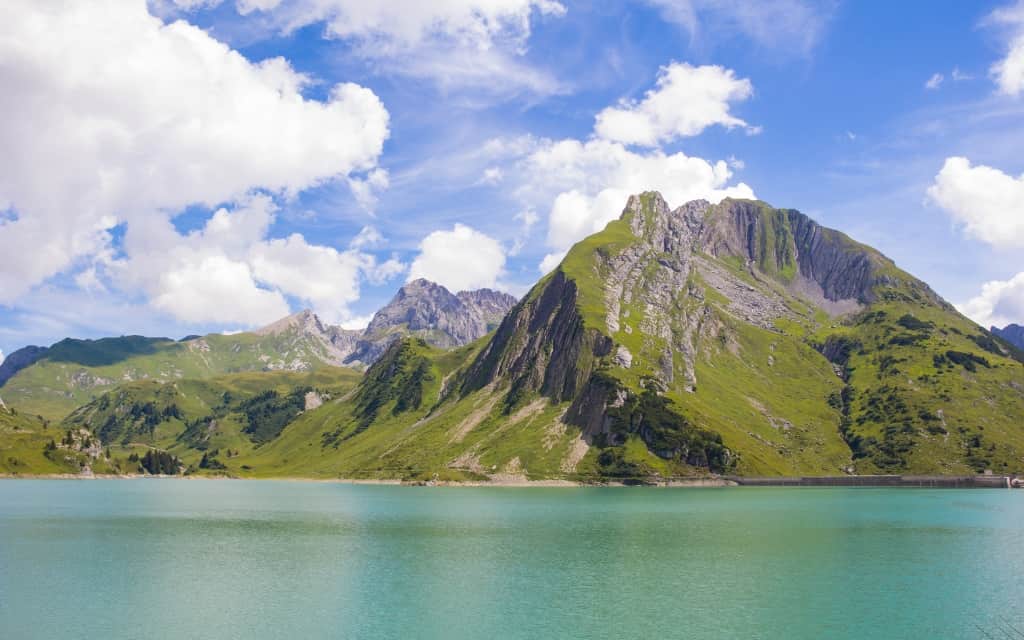
Lake Körbersee
The Körbersee is a small alpine lake with great panoramas and easy trails that are easily navigable even in bad weather. The easiest way to get here is from the Salober car park around the Kalbelesee lake (approx. 1 hour) or from the town of Schrocken along the cycle path (2 hours).
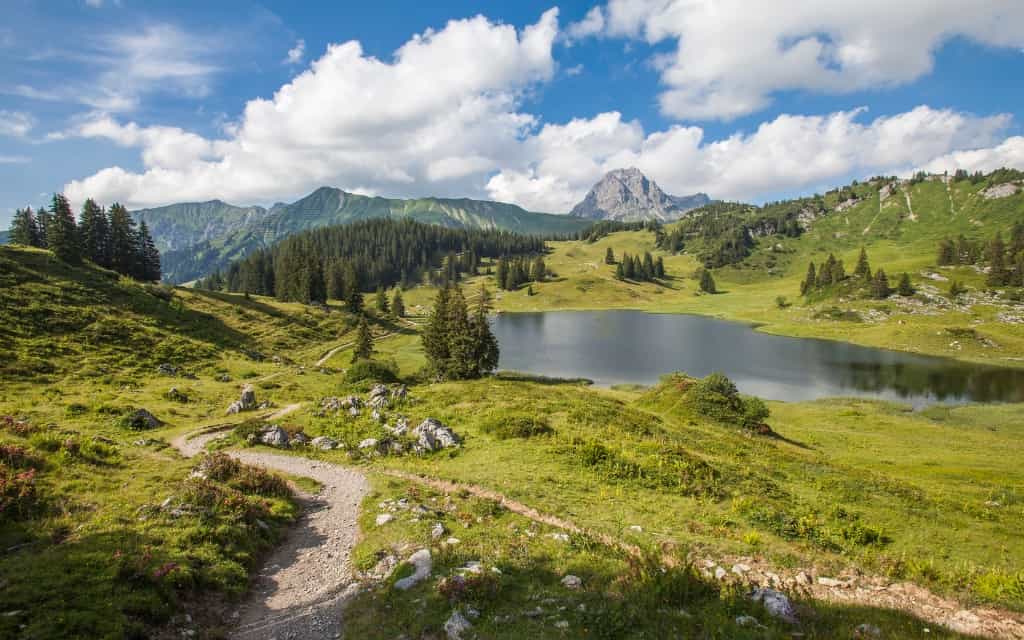
Lake Verwallseee and the suspension bridge
The easy route leads to the last hike, which you will find south of the popular resort of Sankt Anton am Arlberg. The journey takes just over an hour and is ideal for families with children, as there is a playground and a rope park along the way.
At the end, you will walk across the 35 m long suspension bridge over the Rosanna River and past the beautiful Lake Verwallsee.
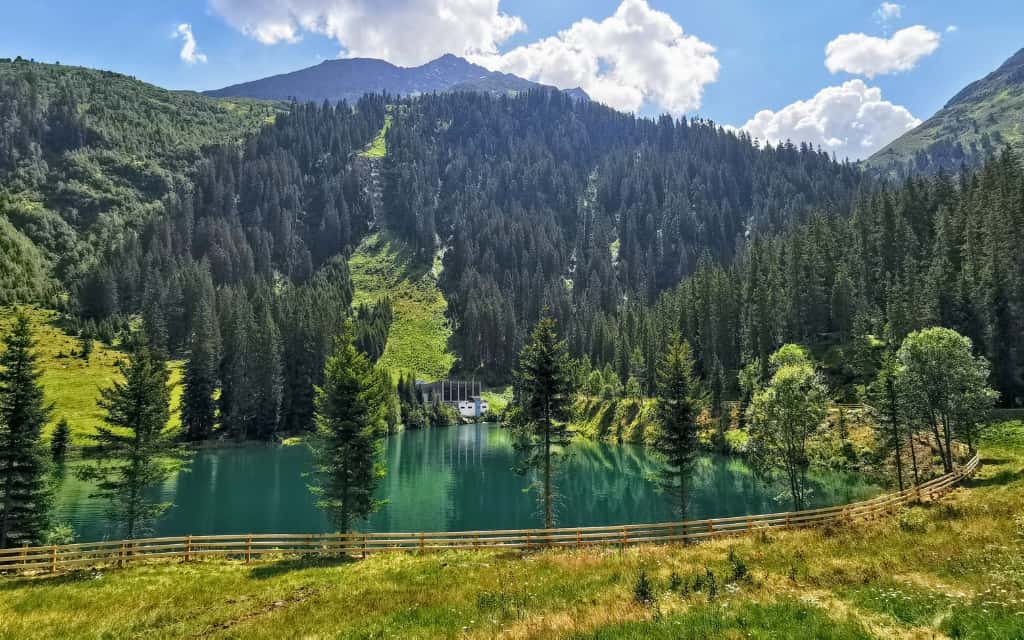
Where to stay in the Lechtal Alps:
- Apartments ALPtyrol : Design apartments and rooms in the centre of Sankt Anton am Arlberg, great price for the location
- Hotel Jägerhof : Four-star wellness hotel with complete facilities
- Hotel Ehrenreich : Very cosy Alpine hotel in Sankt Anton am Arlberg with restaurant and free parking
10. Stubai Alps – things to do in the Austrian Alps
The Stubai Alps are adjacent to the Zillertal Alps, but unlike them they are even more rugged. They form a perfect contrast of white peaks and green valleys.
Enjoy skiing on the Stubai Glacier and the view from the Top of Tyrol lookout at an altitude of 3,210 metres.
Take the hiking trails around the glacier or to the Kreuzjoch saddle, which also offers countless trails of varying difficulty.
HOTELS STUBAI ALPS 😴
When booking these hotels, you will receive a free Stubai Super Card on arrival, which includes free use of local transport, cable cars and discounts on activities in the surrounding area (valid from late May to mid-October).
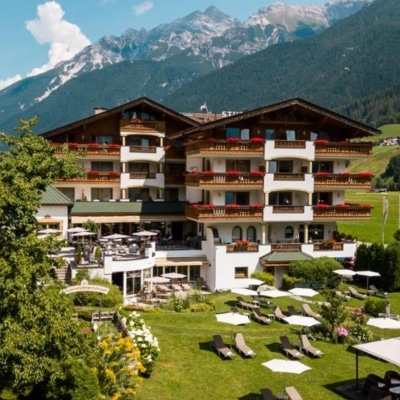
Hotel Stubaierhof
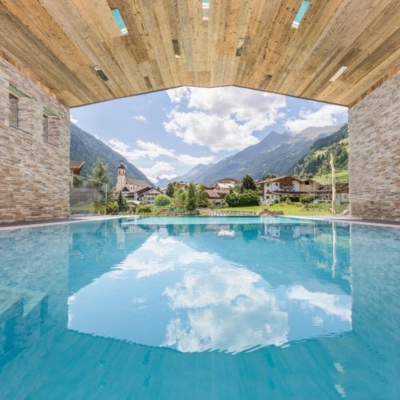
Premium Activehotel Bergkönig
Beautiful hotel with wellness
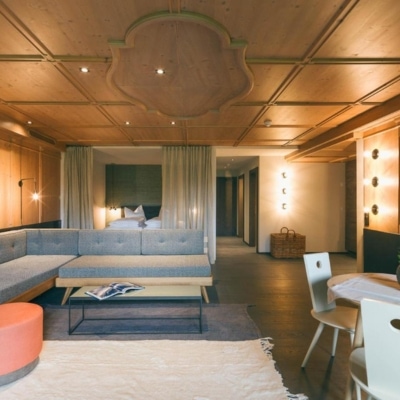
Schönherr Haus
Cosy rooms and apartments
Things to do in the Stubai Alps:
Stubai glacier.
The Stubai Glacier is another place in the Austrian Alps with ideal conditions for skiing – you can ski here from October to June. More information here .
The whole area around the Stubai Glacier is ideal for hiking in summer. There are several hiking trails of varying difficulty that lead through the mountains, which are lined with huts where you can refresh yourself.
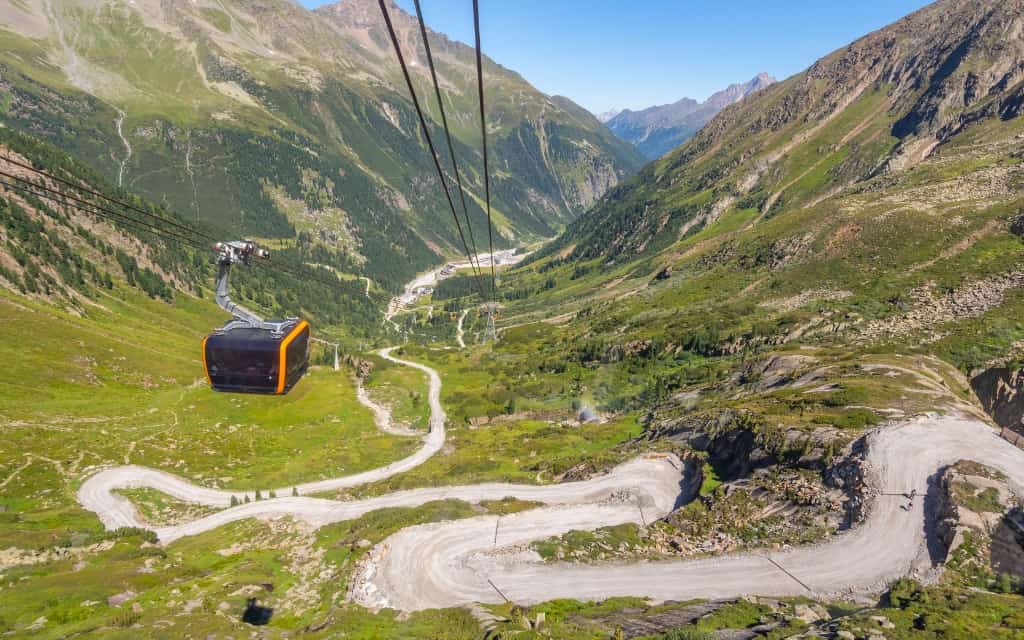
Top of Tyrol and Glacier Cave
Does he want to see the Stubai Alps in all their glory? At any time of the year, take a trip to the Stubai Glacier to enjoy the view from the Top of Tyrol lookout.
Another attraction here is the Glacier Cave, in front of which stands a huge mammoth.
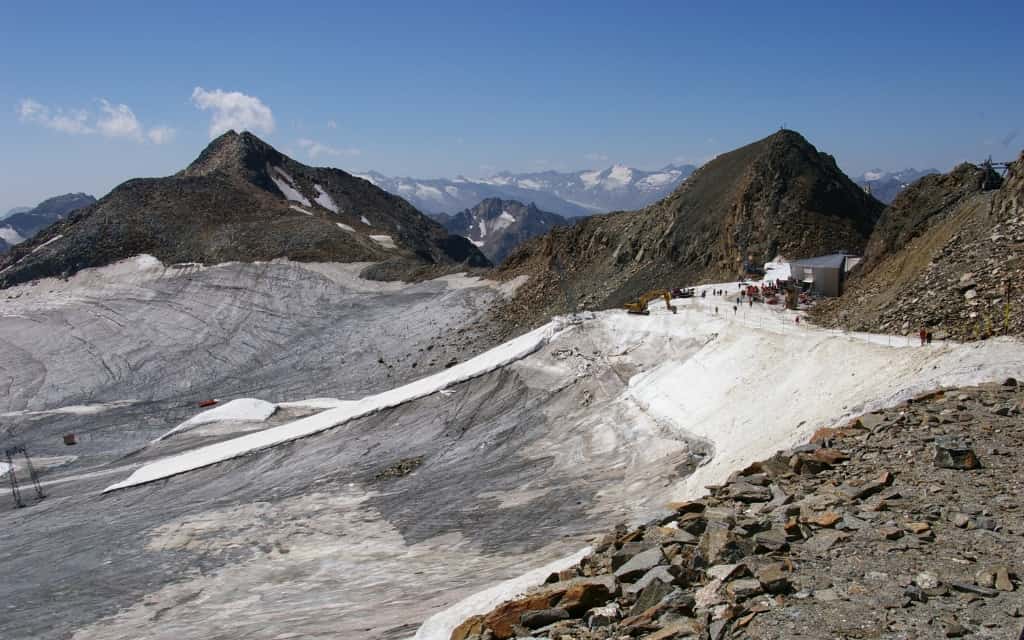
Peak Serles
Travelling to the Stubai Alps with children? Experience a great family day out at the foot of Mount Serles. There is a children’s playground, a bobsleigh run, a small dam, a restaurant and views of the surrounding Alps. The top is reached by cable car from Mieders.
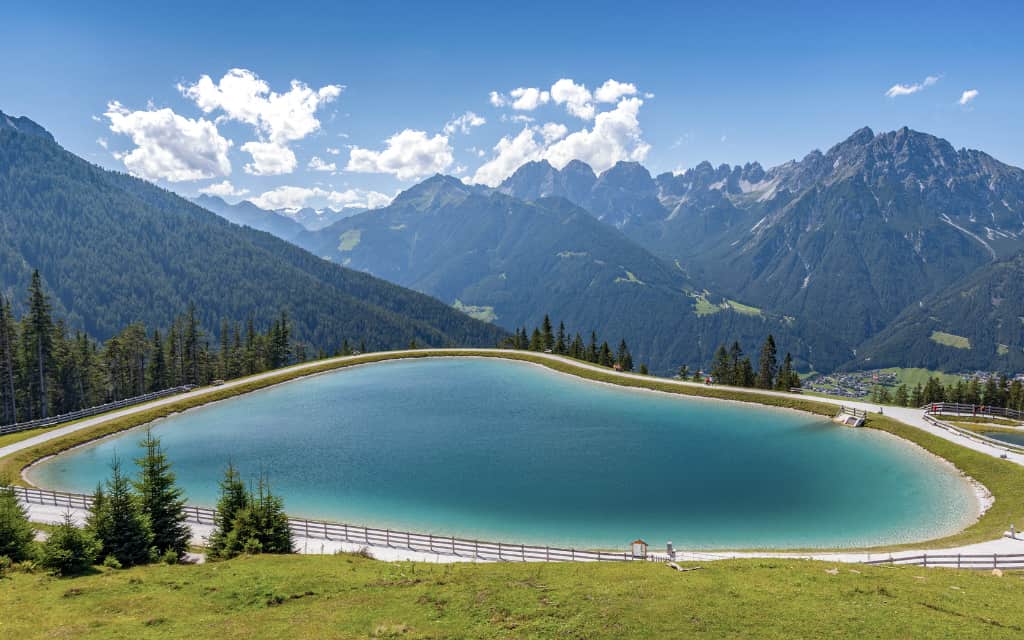
Panoramic route over the Kreuzjoch saddle
A cable car will take you to the Kreuzjoch saddle from the village of Fulpmes. The saddle has a playground, mountain huts and a number of hiking trails. From here you can hike to the top of Krinnenköpfe, where there is a small skywalk at 2139 m.
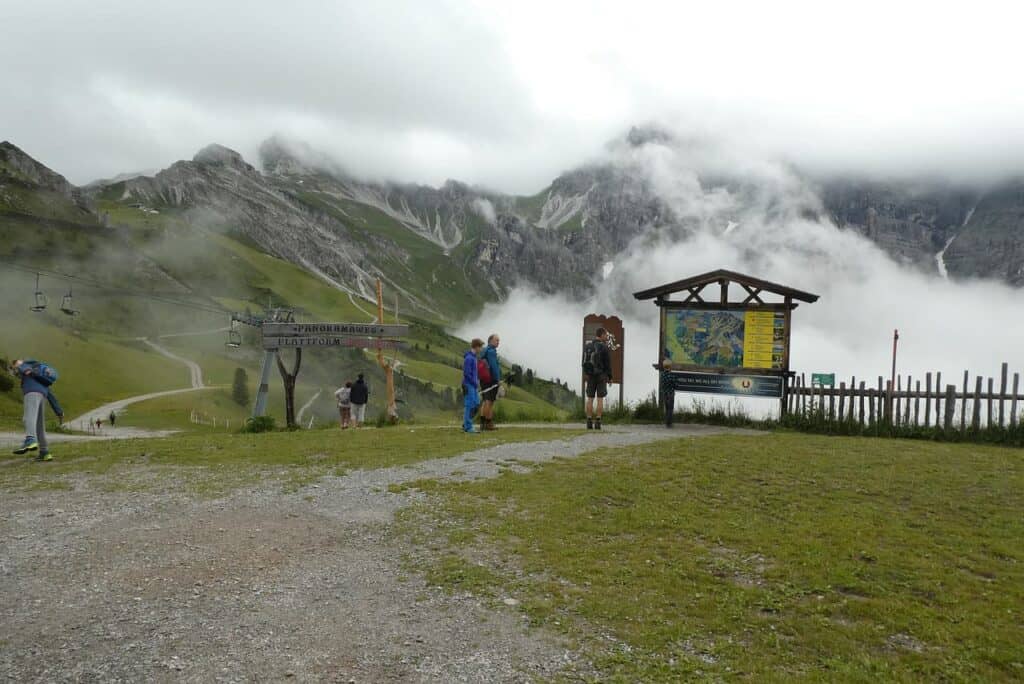
More experienced hikers can go in the other direction to the top of Niederer Burgstall (2436 m) and from there continue to the top of Hoher Burgstall (2611 m). You can descend back down past the Starkenburger Hütte.
Where to stay in the Stubai Alps:
When booking these hotels, you will receive a free Stubai Super Card on arrival, which includes free use of local transport , cable cars and discounts on activities in the surrounding area (valid from late May to mid-October).
- Premium Activehotel Bergkönig : Stylish four-star hotel with spa, swimming pool, sun terrace and half board
- Hotel Stubaierhof : A beautiful Alpine hotel with a traditional style, swimming pool, excellent cuisine and access to the Stubai Glacier or Innsbruck
- Schönherr Haus : Modern and cosy apartments and rooms with wellness and delicious breakfast
- Hotel VAYA : Modern and stylish hotel in Kühtai with complete facilities and spectacular views (does not include the Stubai Super Card, but you get a free Innsbruck Welcome Card with a minimum 2-day stay)
This was our travel guide to the best things to do in the Alps in Austria. Do you have a question? We’ll be happy to answer it in the comments below. Have a safe journey!
More information about the Alps
AUSTRIAN ALPS: Tips for the most beautiful places in the Austrian Alps in a separate article. Or head straight to Tyrol or the Hohe Tauern National Park. Other popular destinations in the Austrian Alps are the Dachstein mountain range or the beautiful Lake Achensee .
Zell am See is one of the most popular areas to stay in the Austrian Alps. Here is a detailed guide and what to visit around Zell am See.
Wolfgangsee is one of Austria’s most beautiful lakes, with swimming opportunities and plenty of activities in the surrounding area.
BAVARIAN ALPS: Get inspired by the best things to do in the Bavarian Alps.
DOLOMITES: We have prepared a detailed guide with tips on the best hikes and hiking routes in the Dolomites .
Passo Pordoi is our favourite pass in the Dolomites. For tips on hiking routes in the Sassolungo area, see the article on Passo Sella.
Another beautiful pass is Passo Giau. No visit to the Dolomites is complete without Tre Cime and the iconic Lago di Braies . In separate guides you will find everything you need to know before visiting.
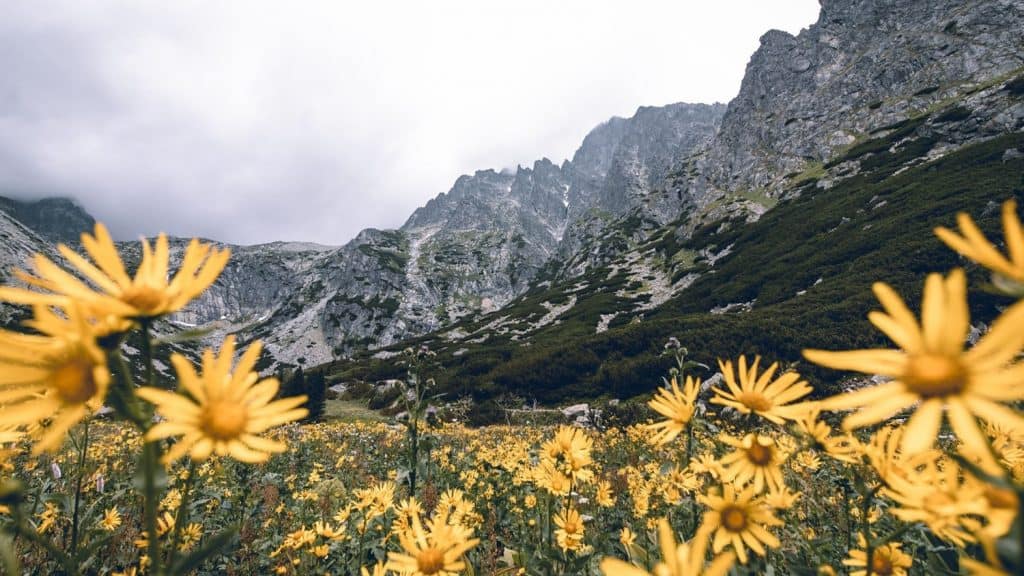
18 Best Hikes in the High Tatras, Slovakia (+ map)
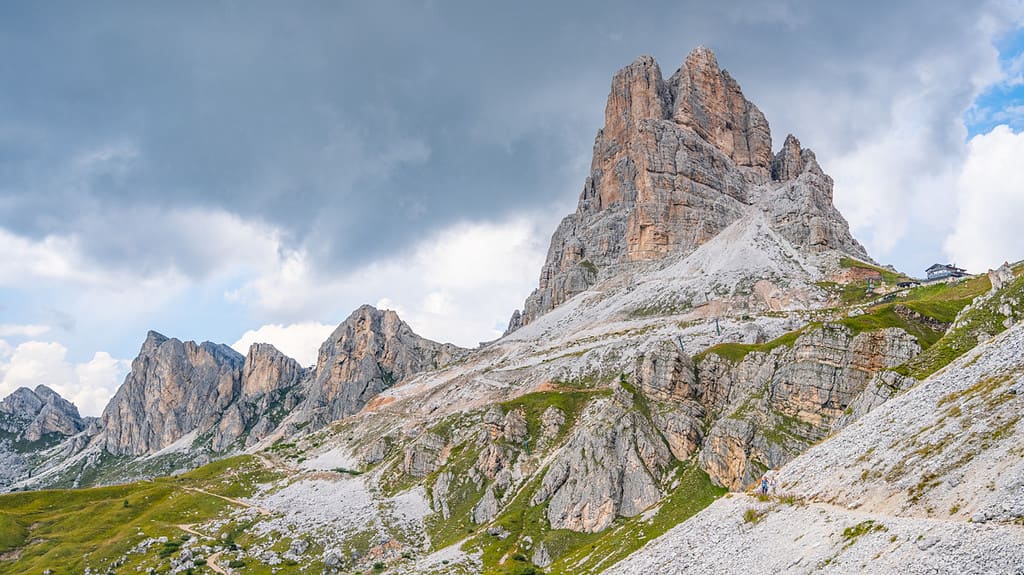
Dolomites, Italy: Guide to the perfect holiday in the Dolomites
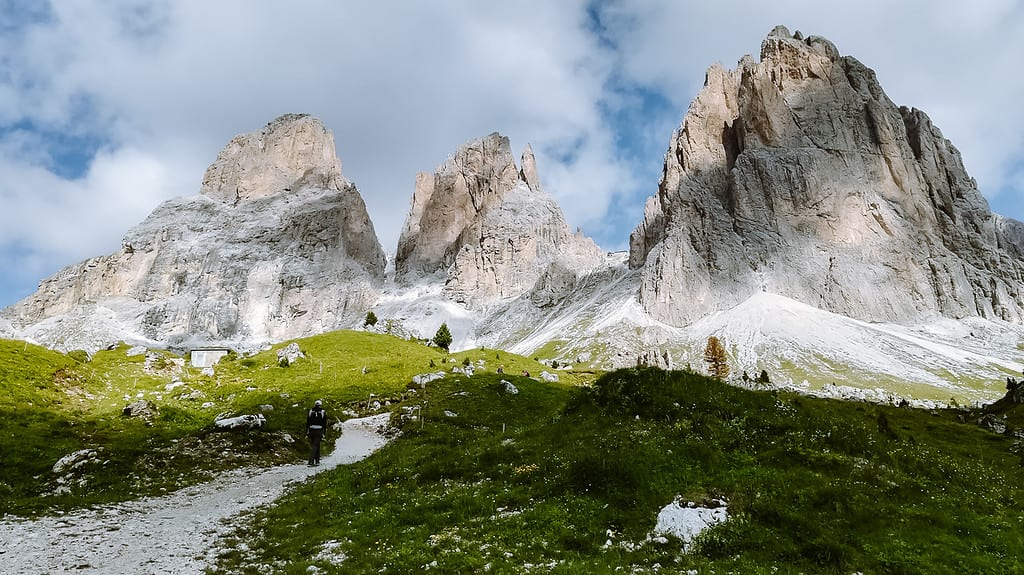
20 Best Hikes and Walking Routes in Dolomites, Italy (2023)
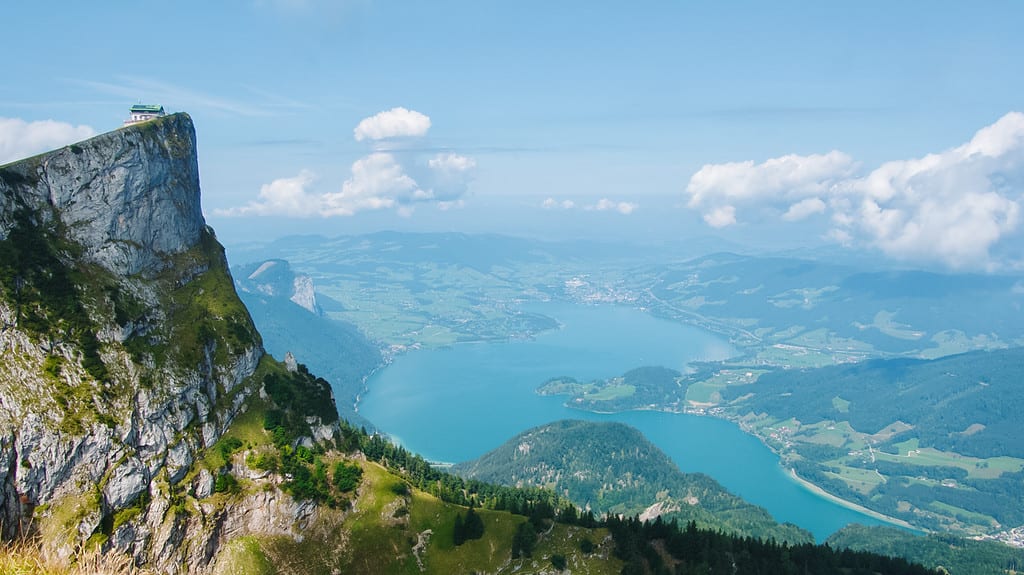
14 Best Things to do at Wolfgangsee, Austria (2023)
Leave a comment cancel reply.
Your email address will not be published. Required fields are marked *
- You are here:
- Things to Do
- Summer Holidays
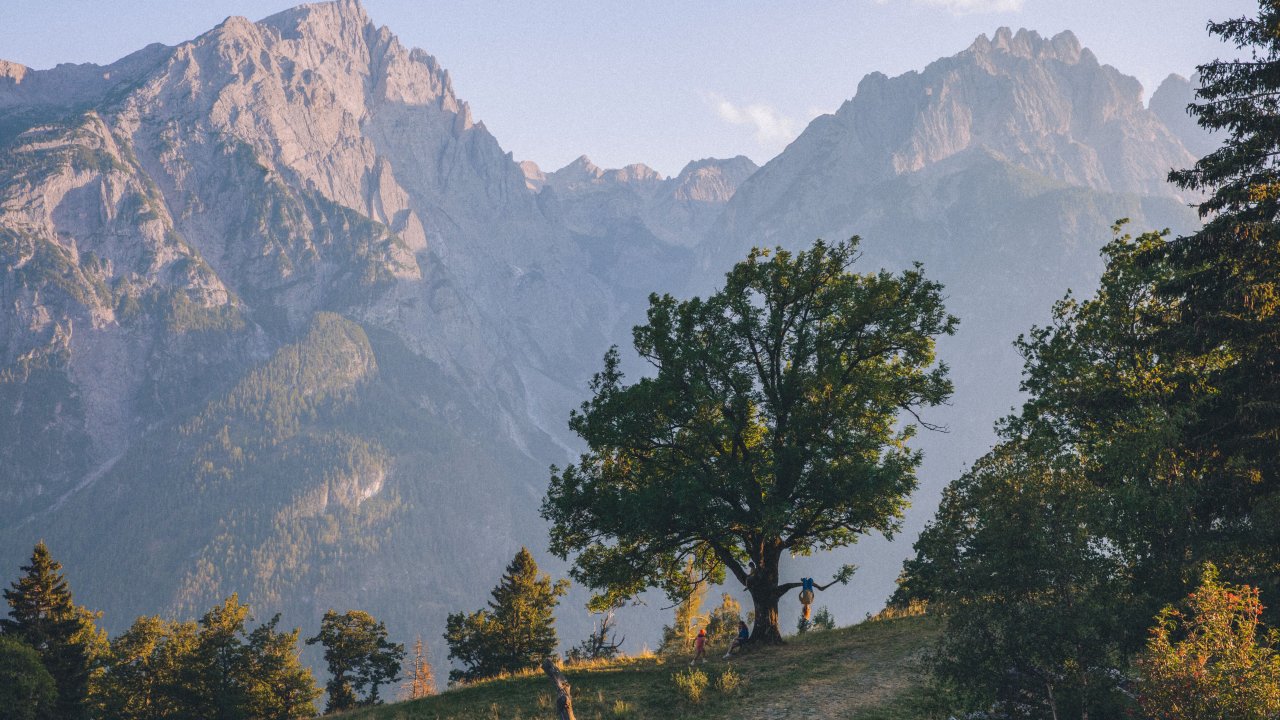
Summer Holidays in Tirol
When winter is slowly coming to an end and the skis have been put back in the attic for another year, Tirol blossoms into life with a huge range of sports, outdoor activities and alpine adventures. Tips for summer holidays in Tirol.
When the scent of thousands of alpine flowers fills the air, the sound of cattle bells rings out over the meadows and the sun warms the swimming lakes high in the mountains, it is high time to get out and explore Tirol with all your senses. Walking, hiking, mountainbiking, rock climbing, whitewater rafting, relaxing bike rides along the valley floor, paragliding high up in the skies – there are so many activities and sports awaiting visitors. Many of these are ideal for families with children, including high-rope adventure parks, play areas and kayaking. Culture vultures will enjoy exploring Tirol's many towns and villages rich in history as well as the region's centuries-old customs and traditions such as the fires lit high in the mountains to mark the Summer Solstice and the cattle drives held in autumn which see cows decorated with flowers brought down from the high pastures into the valley ready for winter. International events such as the Tirol Festival Erl attract visitors from around the world and showcase Tirol's outstanding culture and arts scene.
When the scent of thousands of alpine flowers fills the air, the sound of cattle bells rings out over the meadows and the sun warms the swimming lakes…
What to do in Summer in Tirol?
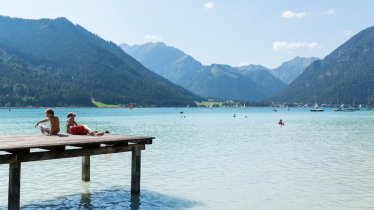
Hiking? Mountain biking? Rock climbing? Fine dining? Or maybe just chilling by the shore of a lake? There are so many different ways to enjoy summer in Tirol.
Summer activities
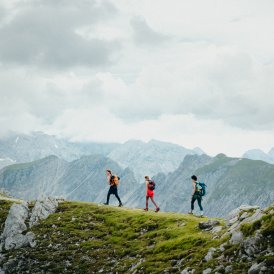
More about summer holidays
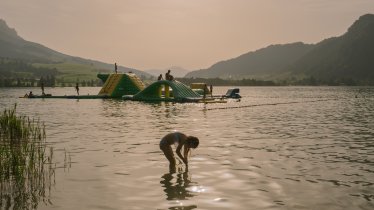
Soak up the sun with the mountains as lovely backdrop. Refreshing mountain…
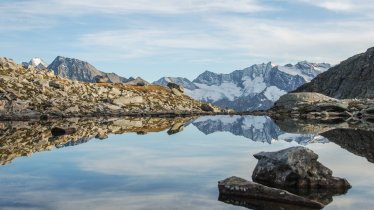
Overview of the Hohe Tauern National Park and Tirol's five nature parks.
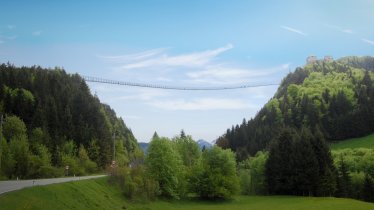
Summer and winter, rain and shine there is plenty to see and do in Tirol.
Accommodation tips
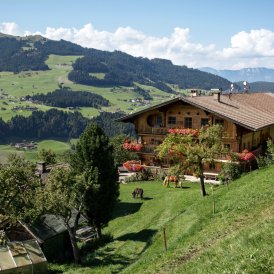
You may also be interested in this
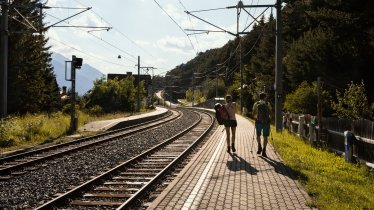
A Europe-wide network of railway connections makes it easy to reach Tirol's holiday regions by train.
The most popular blog articles on summer
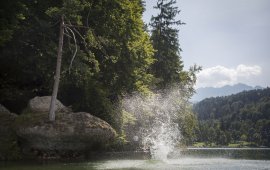
How did you like this article?
Want to receive an answer? If so, please get in touch using the contact form .
Is your inbox in need of a holiday?
Then subscribe to our weekly newsletter full of exclusive holiday tips from Tirol!
Give feedback for a chance to win a special holiday experience!

» Subscribe now

Swiss, Austrian & German Alps
Snow-capped mountains piercing the sky, Alpine lakes lapping against sun-drenched shores, and a range of outdoor activities to get your heart pumping; it’s no wonder the Alps are among the most popular travel destinations on the planet. Stretching over 750 miles and spanning eight countries, the iconic mountain range displays nature at its best. In summer, Alpine valleys blossom with a verdant array of flora that encircles traditional villages and emerald lakes. In the colder months, waterfalls freeze, lakes frost over, and blankets of snow cover mountainsides, forming a winter wonderland befitting any fairytale.
- Copy Link copied

Photo by Daniel Muller
When’s the best time to go to Swiss, Austrian & German Alps?
The Alps boast activities throughout the year for a whole spectrum of travelers, from mountain thrill-seekers to families on a relaxing break. Winter lures skiers, snowboarders, and shoppers seeking unique gifts at the various Christmas markets. Towns like St. Moritz and Zermatt are full of glitz and glamour, while St. Anton and Verbier appeal to those looking to shred up the piste and then dip into a thumping après-ski scene. In the summer months, climbers tackle a plethora of novice ascents and challenging, multi-day hikes, while cyclists head to the mountainous foothills, where trails wind around shimmering lakes, into forests, and alongside fields of deer, ibex, and other Alpine wildlife. Of course, cities like Salzburg, Innsbruck, Lucerne, and Munich have year-round appeal thanks to their range of cultural offerings.
How to get around Swiss, Austrian & German Alps
Thanks to well-maintained roads and a punctual train system, traveling through the Alps is actually quite easy. Driving through the mountain range can be somewhat of an adventure—especially on the awe-inspiring grand passes in Germany, Austria, and Switzerland—but border crossings require minimal fuss. Just know that you’ll need to show your passport at certain checkpoints, and that each country may have their own highway toll regulations and vehicle licenses to purchase upon entry. Those wishing to explore the region by train can plot their route through Eurail, which offers access to trains all around Europe.
Can’t miss things to do in Swiss, Austrian & German Alps
The Alps boast some of the most sublime lakes in the world, including Lake Constance, which spans Germany, Switzerland, and Austria. Along its 167 miles of shoreline, visitors can find both magical castles and charming towns. Of all the Alpine mountains, the Matterhorn stands above the rest thanks to its almost-symmetrical pointed peak that only the most daring attempt to climb. Other must-see places include the picturesque town of Hallstatt, the Grossglockner High Alpine Road (the highest surfaced mountain pass road in Austria), and the Eisriesenwelt, which is the largest ice cave in the world.
Food and drink to try in Swiss, Austrian & German Alps
While many of Europe’s finest chefs have opened high-end, modern restaurants in the Alps, the region’s traditional cuisine revolves around a few staple dishes. In Switzerland, it’s all about bubbling fondue and dripping wheels of raclette cheese enjoyed in snow-covered Alpine lodges. Austrian fare focuses on hearty meat-and-potato dishes, with Tiroler gröstl (a meat, potatoes, and onion recipe) being a particular favorite, while Germany prefers Weisswurst (thick white sausages) and oversized pretzels. An ancient farming region, the Alps still lead the world in sustainable, small-scale agriculture and organic farming practices, turning out some of the best meats and cheeses in the world. In terms of drinks, beer is a staple, particularly in Bavaria and Salzburg, where the craft brewery movement is thriving. Also popular, however, is Austrian schnaps, a type of distilled fruit brandy produced in the Tyrol region.
Culture in Swiss, Austrian & German Alps
Unsurprisingly, Alpine life very much centers around outdoor adventures. In Switzerland, families spend summer months exploring the mountains, camping by lakes, or sipping locally produced wine until darkness descends in quaint villages. The German and Austrian Alps have a close cultural bond, sharing a strong dedication to Roman Catholicism and a pride for their farms and fairytale castles. Of course, Austrians also enjoy their own traditions, including a love for folk music and brass bands. Come winter, all three countries come alive with Christmas markets and celebrations.
For Families
It’s hard to think of a family vacation as varied as an Alps sojourn. Not only can young ones learn to ski and snowboard under the tutelage of expert instructors, they can also get their adrenaline pumping with backcountry runs and snow-park jumps. The varied trails and winding roads offer never-ending challenges for bikers, while nature reserves provide forays into Alpine wildlife. Families can also look forward to an enchanting range of lakes, as well as roaring rivers for rafters, riverboarders, and kayakers.
Local travel tips for Swiss, Austrian & German Alps
In many Alpine villages, Sunday is a day of rest. Several remain almost completely silent for the entire day but, even during the week, late-night noise is a huge no-no. Up in the mountains, Alpine huts have been providing food and shelter to travelers for centuries, adding a friendly element to backcountry explorations. Language is varied throughout the Alps, with different regions speaking local dialects like Bavarian. Switzerland even has four official languages: German, French, Italian, and Romansh.
Local Resources
- www.myswitzerland.com
- www.myswissalps.com
- www.thelocal.de/tag/Bavaria
- www.bavaria.by
- www.austria.info
Guide Editor
Simon Willis is a travel journalist flirting between Europe and South America. As a keen skier and cheese-lover, Simon has spent much of the last decade exploring the Alps, searching for fresh-powder runs and the finest raclette. When keen for a change, he heads to Colombia and Peru, where he has trained to become a cowboy and lived in an Andean Quechua community. His work has appeared in the Washington Post , The Boston Globe , The Guardian , Sky Delta Magazine , and AFAR , among others. You can find him on Twitter at @simonwillis11.

IMAGES
VIDEO
COMMENTS
Among the Austrian Alps worth visiting is Klagenfurt. It's ideally situated on the famous Lake Worthersee, one of the warmest and largest Alpine lakes in Europe. Due to its southerly location, Klagenfurt offers pleasant summer days and sunny winters. There are plenty of exciting activities to enjoy in Klagenfurt.
The majestic Austrian Alps stretch across the country, an awe-striking area of Ice Age valleys, verdant heaths and alluvial cones within Europe's largest national park, 700-square-mile Hohe Tauern. Taking in the dramatic cities of Salzburg and Innsbruck and the beautiful province of Tirol, home to spectacular skiing and hiking, as well as Gross ...
Experience the thrill of skiing down the slopes of Dachstein Glacier, one of the most beautiful places in the Austrian Alps. 2. Grossglockner High Alpine Road. Picture this: you're cruising along a winding road, windows down, the fresh alpine air filling your lungs.
Here are the best places to visit in the Austrian Alps, according to destination expert Kate Mann. Kate Mann is a travel writer who has travelled extensively in Austria.
Things to Do in Austrian Alps, Austria: See Tripadvisor's 1,255,699 traveler reviews and photos of Austrian Alps tourist attractions. Find what to do today, this weekend, or in May. We have reviews of the best places to see in Austrian Alps. Visit top-rated & must-see attractions.
Here's our take on the best places to visit in Austria. 1. Zell am See. Sitting smugly on the shores of a bluest-blue lake and buttressed by lofty peaks, Zell am See is a knockout. The cheerful Alpine resort has sensational wilderness on its doorstep, including the glacier-capped 3203m (10,509ft) Kitzsteinhorn, where you can embark on a glacier ...
Tirol - Heart of the Alps. Visitors to Tirol will experience a majestic and enchanting mountain landscape sure to touch their soul. Countless outdoor activities and a warm welcome make holidays in this stunning region an unforgettable experience. "Here, finally, I have found a place of quiet - a place of peace the like of which I could have ...
The majestic Austrian Alps stretch across the country, an awe-striking area of Ice Age valleys, verdant heaths and alluvial cones within Europe's largest national park, 700-square-mile Hohe Tauern. Taking in the dramatic cities of Salzburg and Innsbruck and the beautiful province of Tirol, home to spectacular skiing and hiking, as well as Gross ...
Taking in the dramatic cities of Salzburg and Innsbruck and the beautiful province of Tirol, home to spectacular skiing and hiking, as well as Gross Glockner, Austria's highest peak, and some of the world's best winter and summer sports playgrounds, the Austrian Alps are an outdoor lover's paradise. Austrian Alps Tourism: Tripadvisor has ...
Plan Your Trip to Austrian Alps: Best of Austrian Alps Tourism. The majestic Austrian Alps stretch across the country, an awe-striking area of Ice Age valleys, verdant heaths and alluvial cones within Europe's largest national park, 700-square-mile Hohe Tauern. Taking in the dramatic cities of Salzburg and Innsbruck and the beautiful province ...
13. Schladminger Tauern. The Schladminger Tauern mountains are a subrange of the Austrian Central Alps and are located in the Austrian federal states of Salzburg and Styria (Steiermark). The closest town, or transportation hub, is Schladming. This is one of Austria's premier skiing destinations.
The majestic Austrian Alps stretch across the country, an awe-striking area of Ice Age valleys, verdant heaths and alluvial cones within Europe's largest national park, 700-square-mile Hohe Tauern. Taking in the dramatic cities of Salzburg and Innsbruck and the beautiful province of Tirol, home to spectacular skiing and hiking, as well as Gross ...
11 a.m.: Hike into the Pforzheimer Hut. From Innsbruck, it's a 45-minute ride on the 4166 bus to Saint Sigmund im Sellrain, a small village in the heart of the Sellrain valley where our hike ...
It's a perfect weekend getaway in the Austrian Alps. It's the ultimate travel destination if you're seeking active relaxation - my favorite type of relaxation. It offers a mix of activities, in this case, hiking, but with spa time and time to relax as well. We visited Grossarl in mid-September. Fall ...
1. A Landscape of Majesty. The Austrian Alps are a geological masterpiece, with their snow-capped peaks and rugged terrain. This picturesque landscape is a paradise for photographers, hikers, and anyone who appreciates the splendor of nature. Throughout the year, the Alps offer a wide range of landscapes, from lush, blooming meadows in spring ...
The Grossglockner stands at 12,461 feet or 3798 metres tall. It is followed closely by Wildspitze, which is 3770 metres high and Weisskugel which is 3739 metres tall. There are over 150 mountain summits in Austria that are over 3150 metres. However, Grossglockner is the highest point in the Austrian Alps and the whole of Austria itself.
from. $60. per adult. 13. Private Day Tour of Salzburg, Hallstatt and Melk from Vienna. 54. Historical Tours. 6+ hours. Make the best of your stay in Austria by visiting three scenic locations in one day, on a tour reserved exclusively for ….
AUSTRIAN ALPS: Tips for the most beautiful places in the Austrian Alps in a separate article. Or head straight to Tyrol or the Hohe Tauern National Park. Other popular destinations in the Austrian Alps are the Dachstein mountain range or the beautiful Lake Achensee. Zell am See is one of the most popular areas to stay in the Austrian Alps.
When winter is slowly coming to an end and the skis have been put back in the attic for another year, Tirol blossoms into life with a huge range of sports, outdoor activities and alpine adventures. Tips for summer holidays in Tirol. When the scent of thousands of alpine flowers fills the air, the sound of cattle bells rings out over the meadows ...
Best Places To Visit in Austrian Alps. 1. Vienna: The capital city of Austria, Vienna is a must-visit destination for its rich history, stunning architecture, and vibrant cultural scene.Explore the grandeur of the Schonbrunn Palace and the Hofburg Palace, immerse yourself in the classical music scene at the Vienna State Opera, and indulge in delicious Viennese pastries at traditional coffee ...
476 likes, 25 comments - mali.and.mountains on May 10, 2024: "SUMMER ☀️ #schweiz #switzerland #austria #oestereich #austria #alps #alpingirls #travel #malinois # ...
The Alps boast some of the most sublime lakes in the world, including Lake Constance, which spans Germany, Switzerland, and Austria. Along its 167 miles of shoreline, visitors can find both magical castles and charming towns. Of all the Alpine mountains, the Matterhorn stands above the rest thanks to its almost-symmetrical pointed peak that ...